|
|

|
Wednesday 18 April 2018
Champions........For the second time in two nights I’m awake in the early hours but this time it’s self inflicted. It’s not unusual for me to mention the team I support but to wake up at 2.30am for commentary, certainly is. However on this occasion as the season draws to a close there’s something special at stake; the Southern League Premiership title. I join the action at half time to find the Bulls 1 : 0 up at Biggleswade, a penalty just before half-time. In the second half the Bulls dominated but cannot add to the score. At the final whistle that matters little as the title is won and I can return to my slumbers once more in a joyful mood.
Breakfast included........Finding it nearly 8.30am before I’m awake, I need to concentrate on the day’s planned visits but first let’s see what ‘breakfast included’ means. As I reach the restaurant, there’s coffee and toast; it’s looking good. When I’m offered an American breakfast it’s looking very good and when that arrives it’s very very good. Over breakfast I have a decision to make given it’s looking like another late start. As I indulge in one of the better breakfasts I’ve had on tour my mind is made up. I’m staying here another night. By 10.30am we’re ready to resume the tour: it could have been much worse than that. The first stop is just a couple of minutes away.
Wat Ratburana........Wat Ratburana, on the southern side of Naresuan Bridge is best known for its old brick built Chedi. According to legend it was constructed in the 15th century to house the ashes of the King of Sukhothai's two brothers. Both the old viharn and ubosot are contemporary except for new rooves. Inside both halls are some old mural paintings. There is also a small museum, and a boat used by King Chulalongkorn.
Crossing the bridge over to the western bank there's more evidence of Phitsanulok’s rich history.
Champions........For the second time in two nights I’m awake in the early hours but this time it’s self inflicted. It’s not unusual for me to mention the team I support but to wake up at 2.30am for commentary, certainly is. However on this occasion as the season draws to a close there’s something special at stake; the Southern League Premiership title. I join the action at half time to find the Bulls 1 : 0 up at Biggleswade, a penalty just before half-time. In the second half the Bulls dominated but cannot add to the score. At the final whistle that matters little as the title is won and I can return to my slumbers once more in a joyful mood.
Breakfast included........Finding it nearly 8.30am before I’m awake, I need to concentrate on the day’s planned visits but first let’s see what ‘breakfast included’ means. As I reach the restaurant, there’s coffee and toast; it’s looking good. When I’m offered an American breakfast it’s looking very good and when that arrives it’s very very good. Over breakfast I have a decision to make given it’s looking like another late start. As I indulge in one of the better breakfasts I’ve had on tour my mind is made up. I’m staying here another night. By 10.30am we’re ready to resume the tour: it could have been much worse than that. The first stop is just a couple of minutes away.
Wat Ratburana........Wat Ratburana, on the southern side of Naresuan Bridge is best known for its old brick built Chedi. According to legend it was constructed in the 15th century to house the ashes of the King of Sukhothai's two brothers. Both the old viharn and ubosot are contemporary except for new rooves. Inside both halls are some old mural paintings. There is also a small museum, and a boat used by King Chulalongkorn.
Crossing the bridge over to the western bank there's more evidence of Phitsanulok’s rich history.
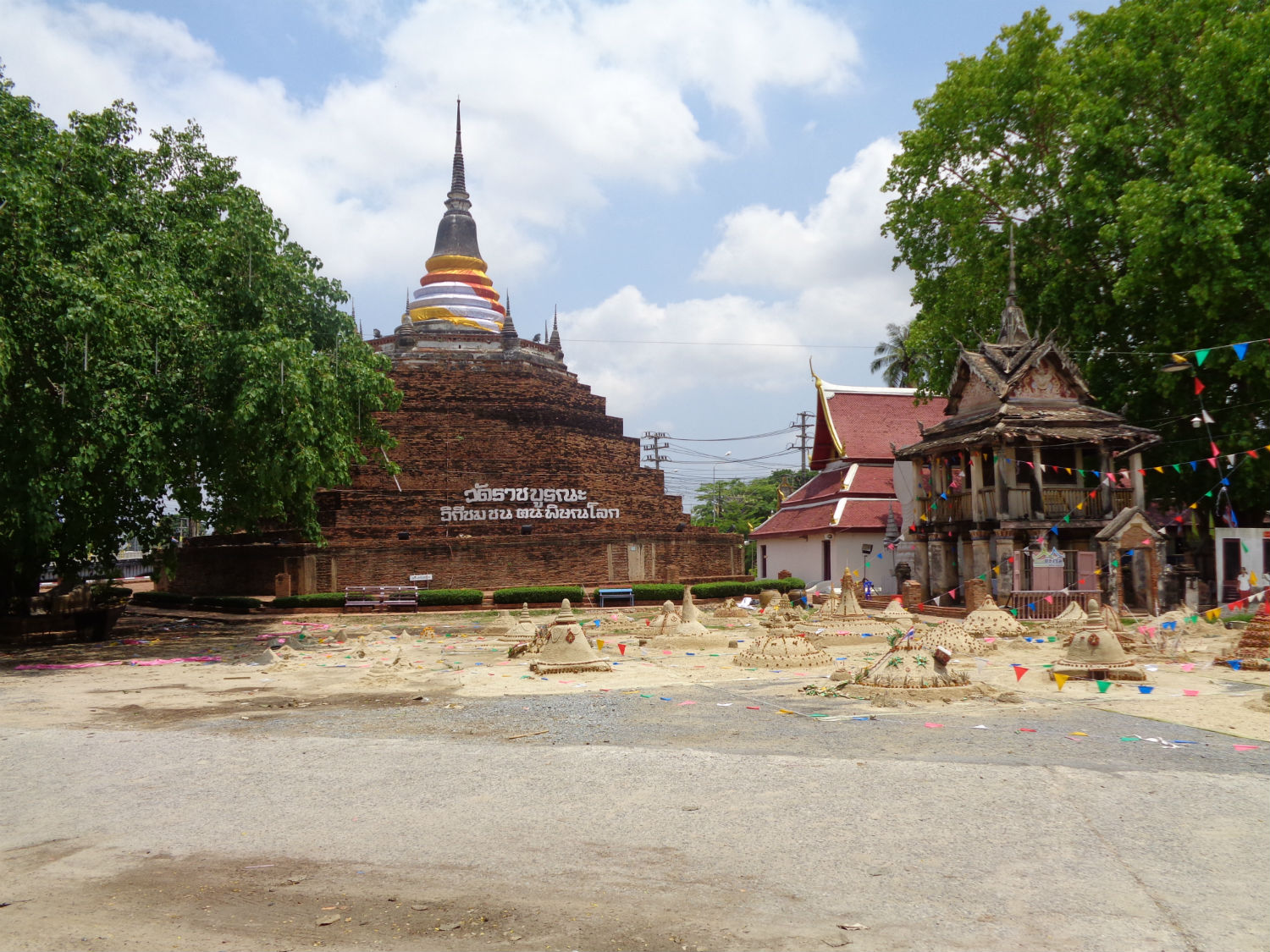
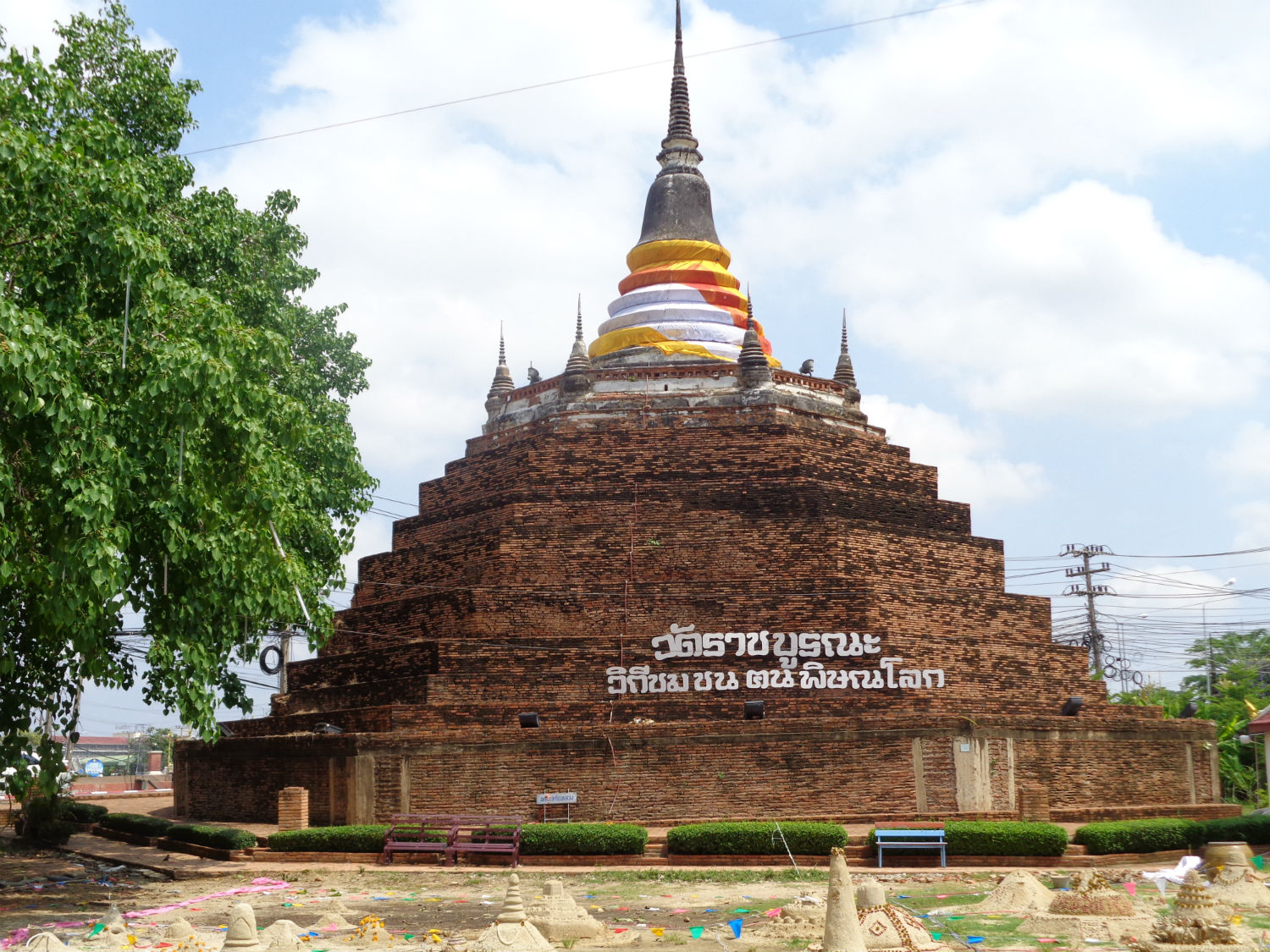
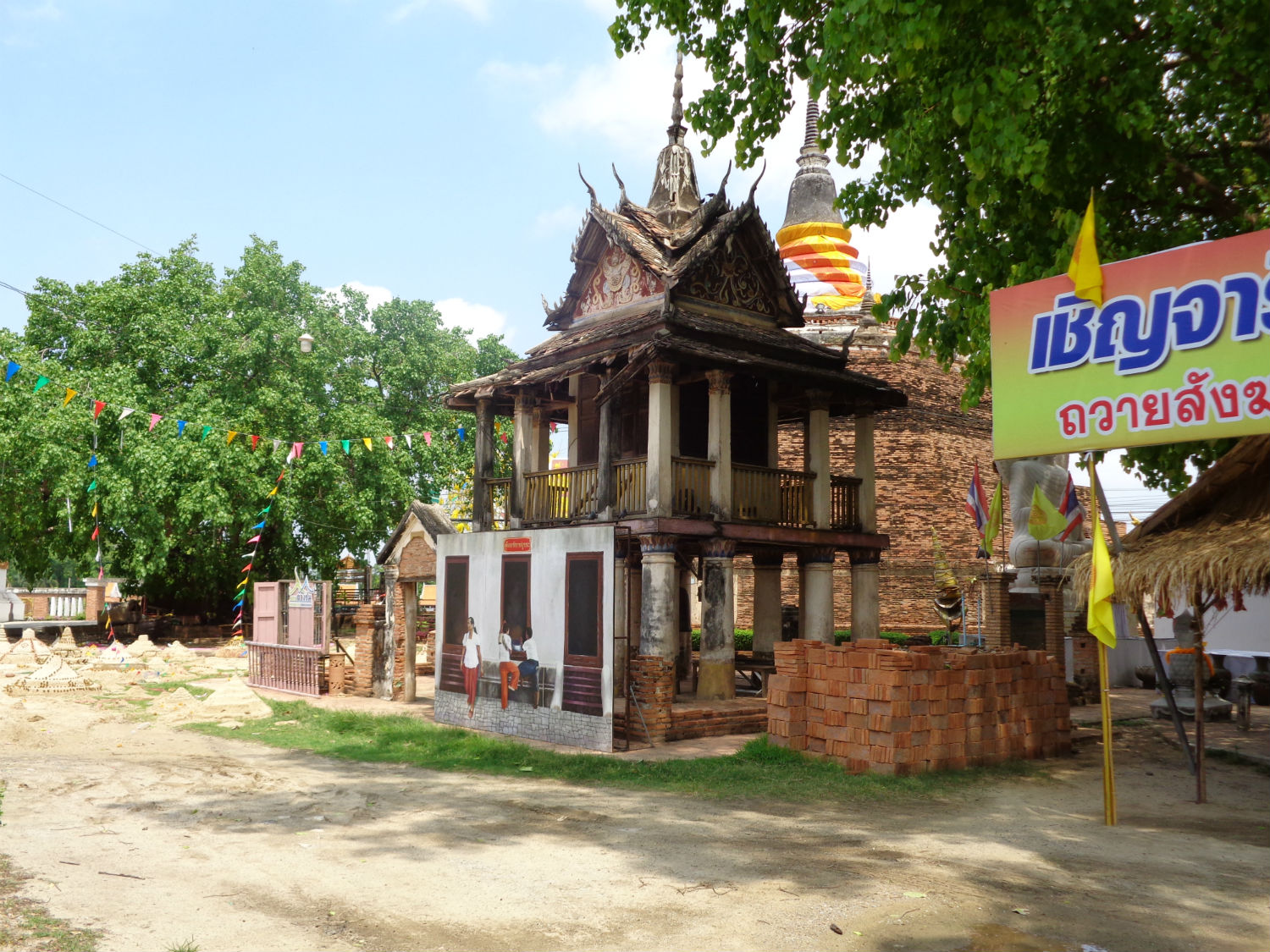
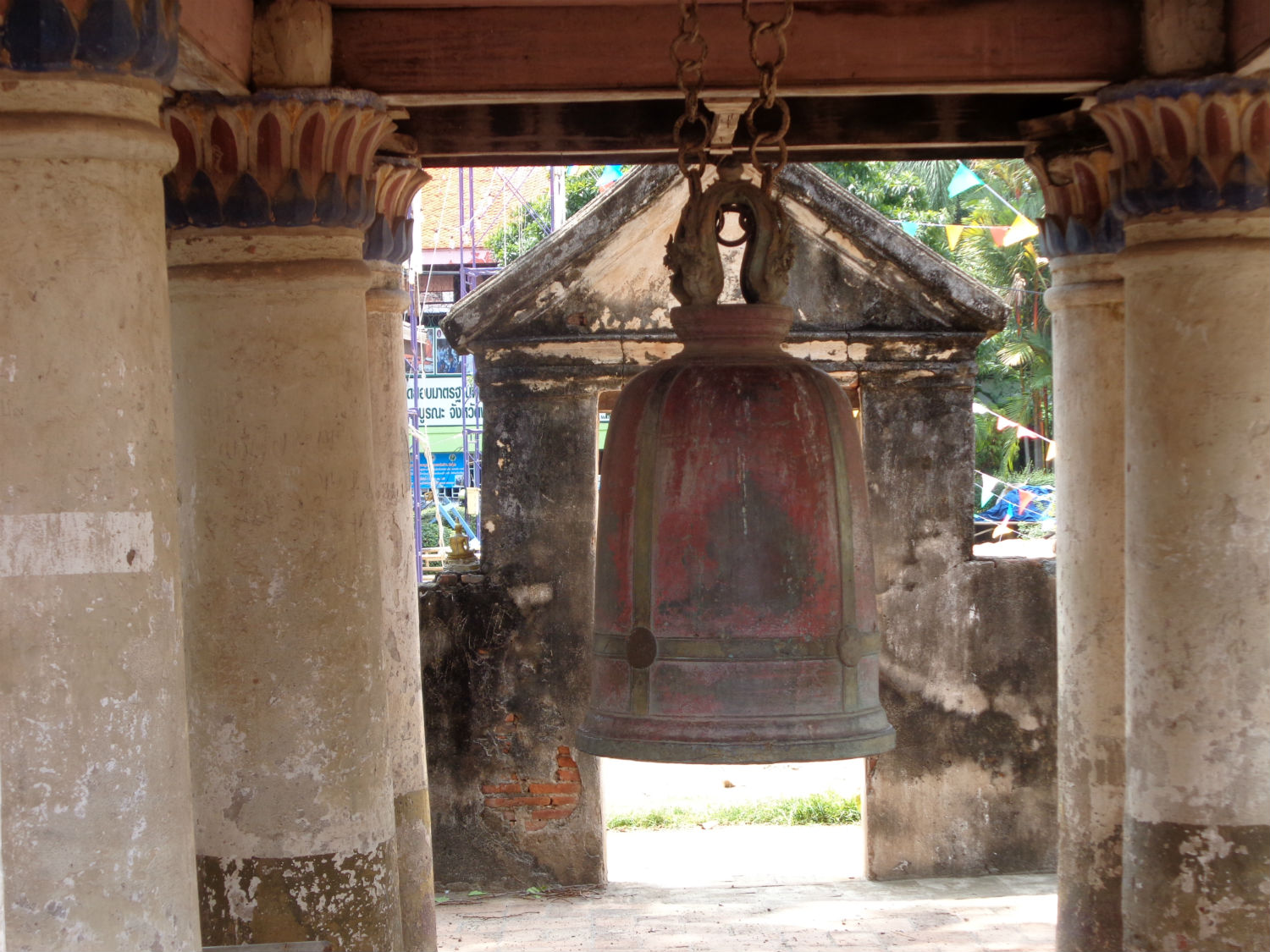
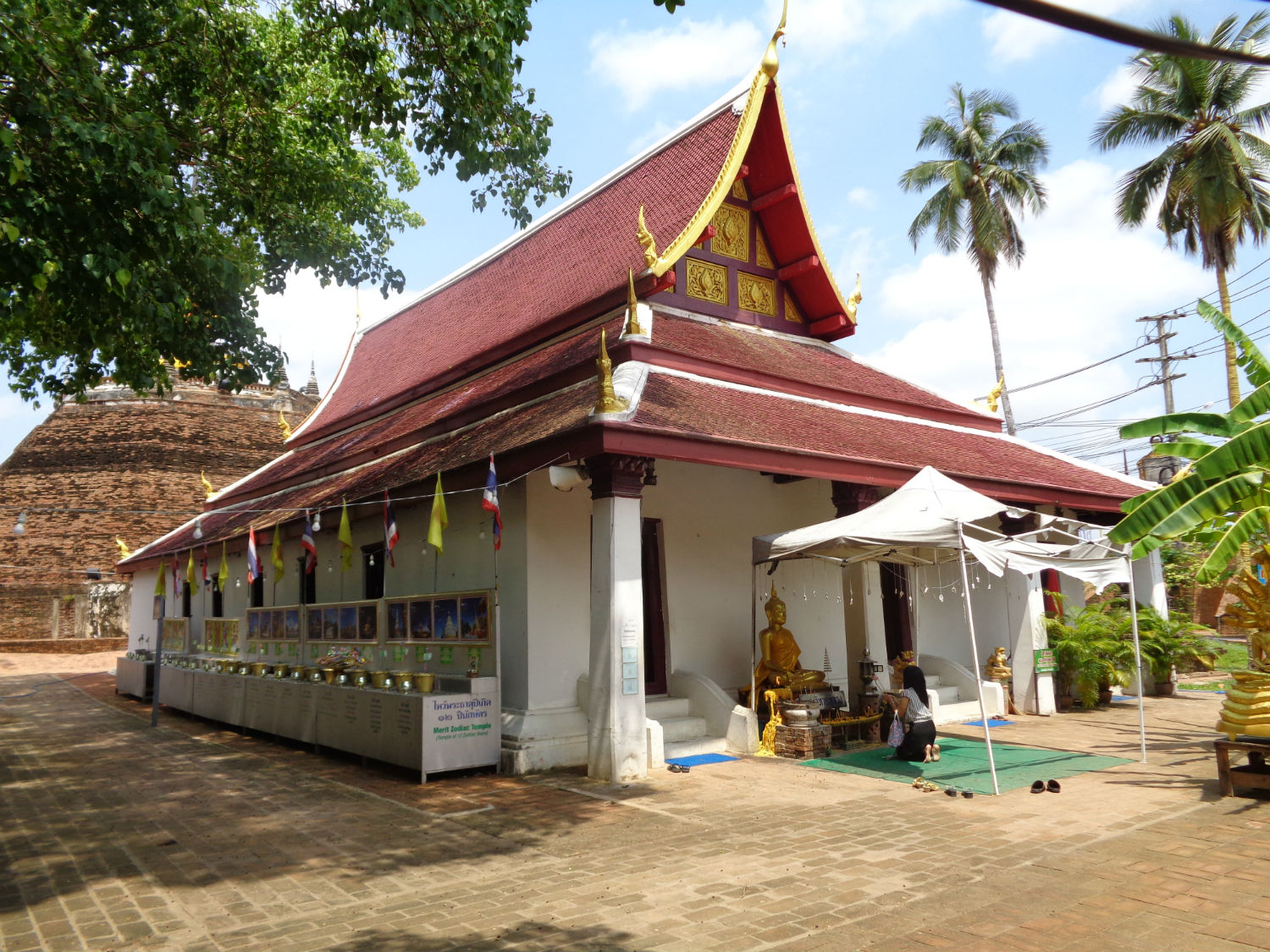
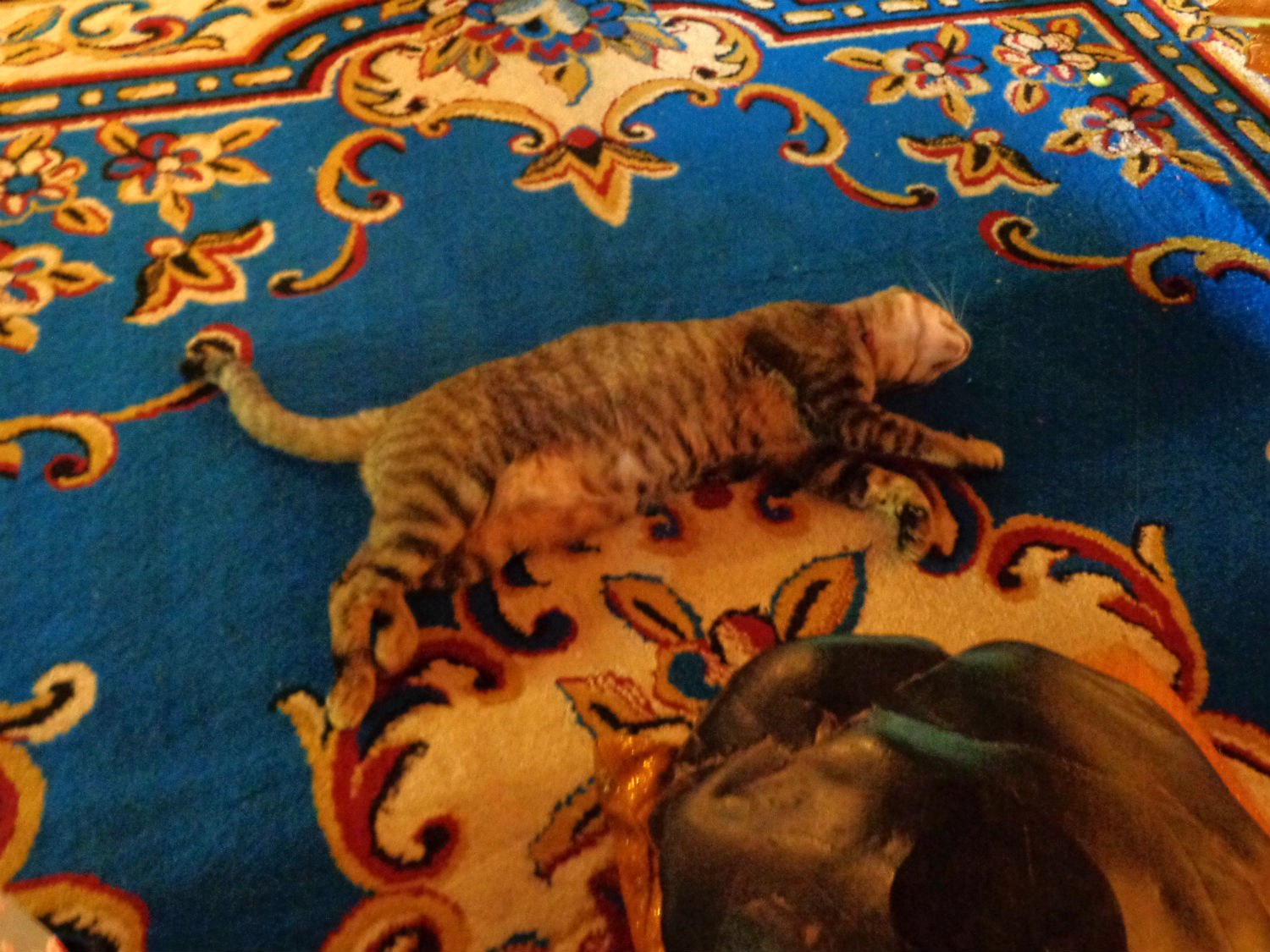
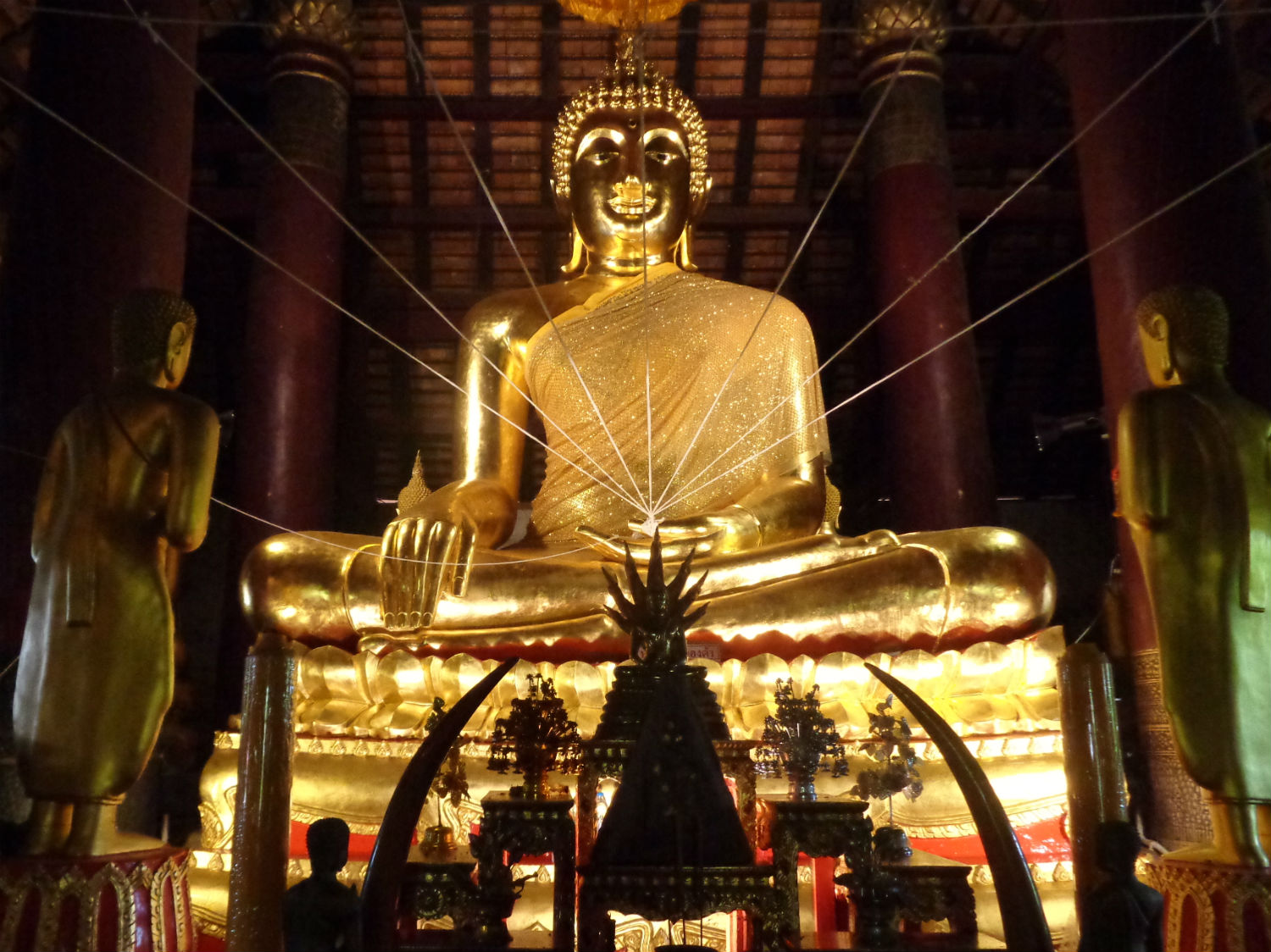
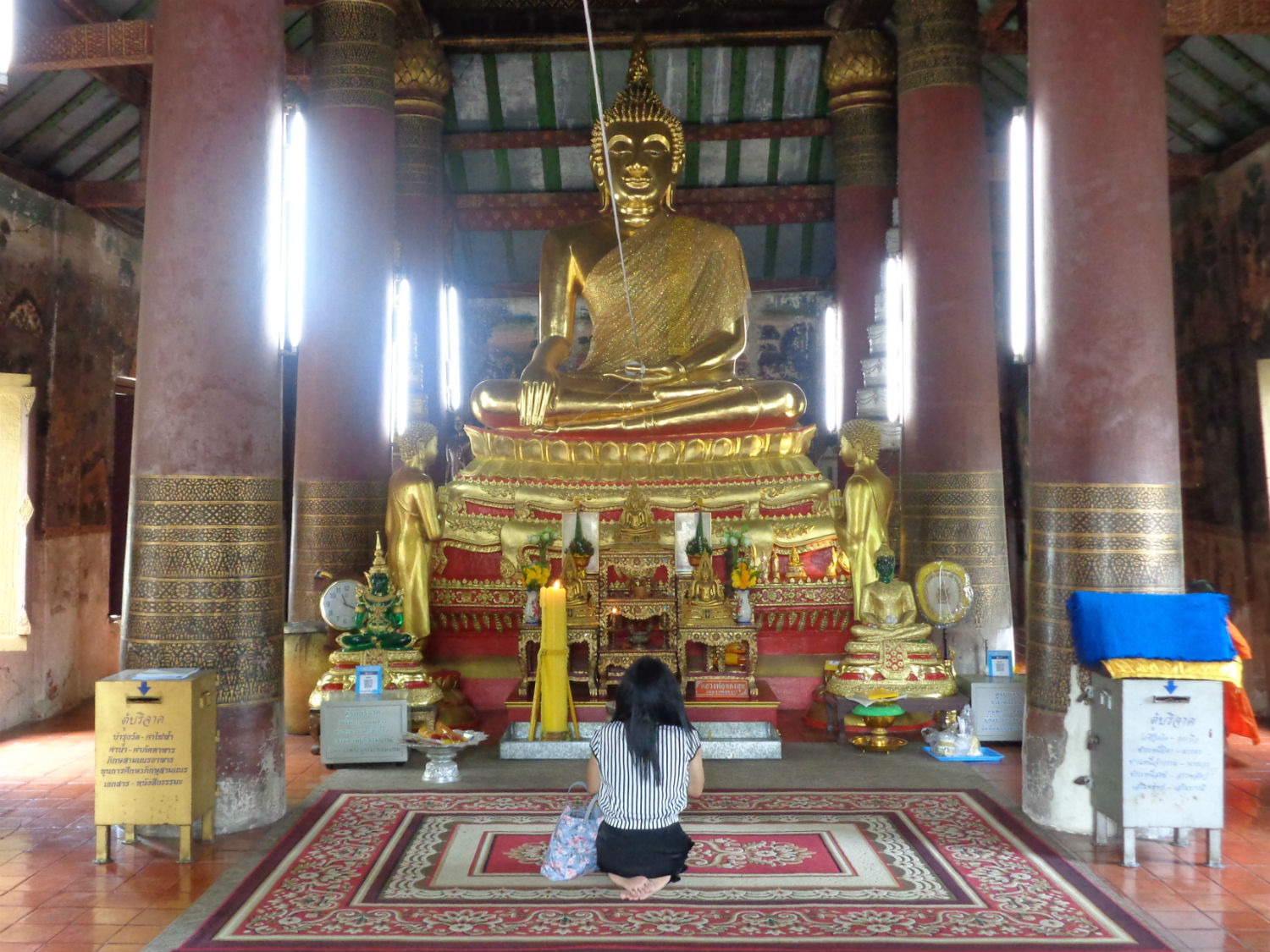
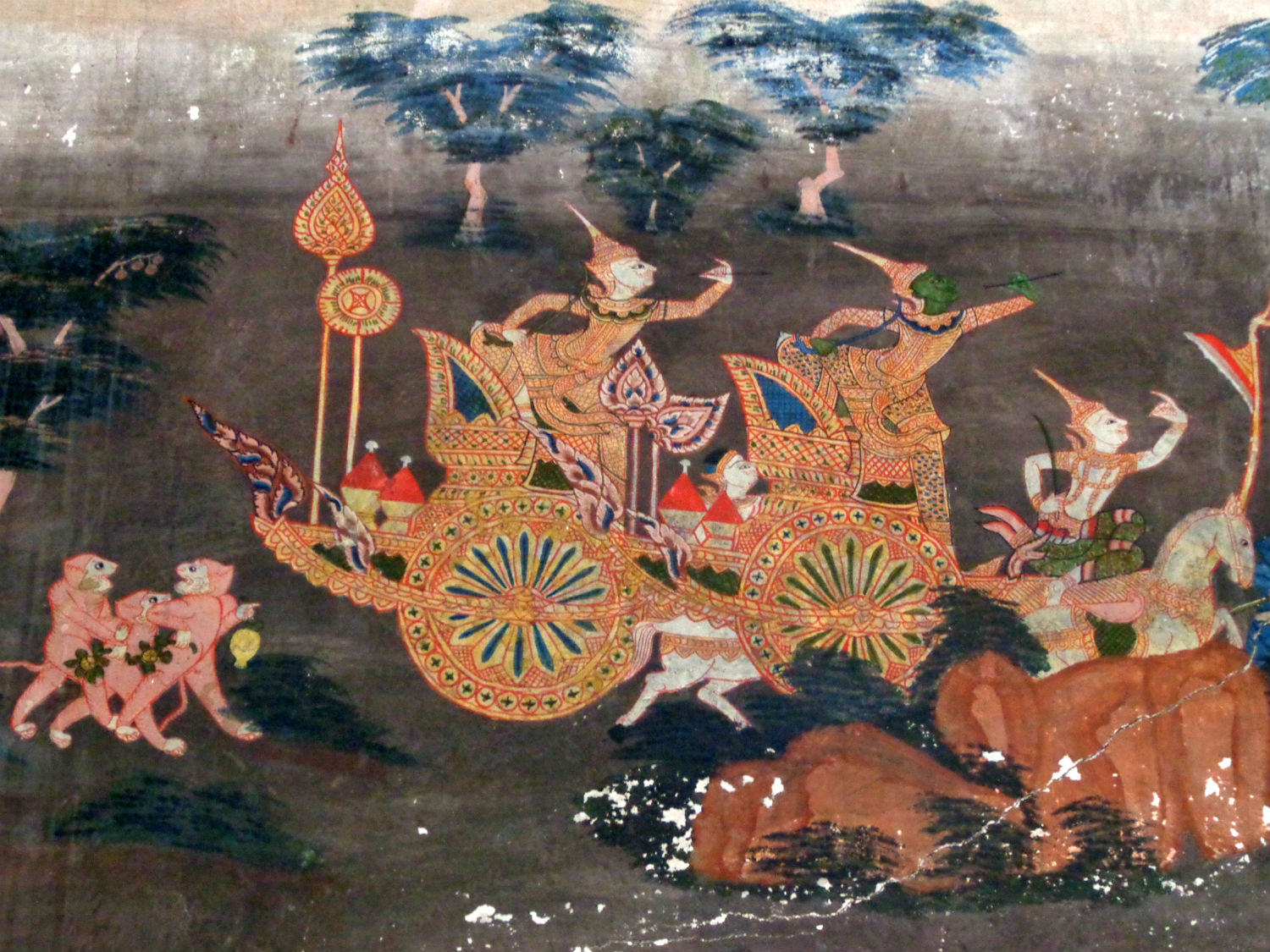
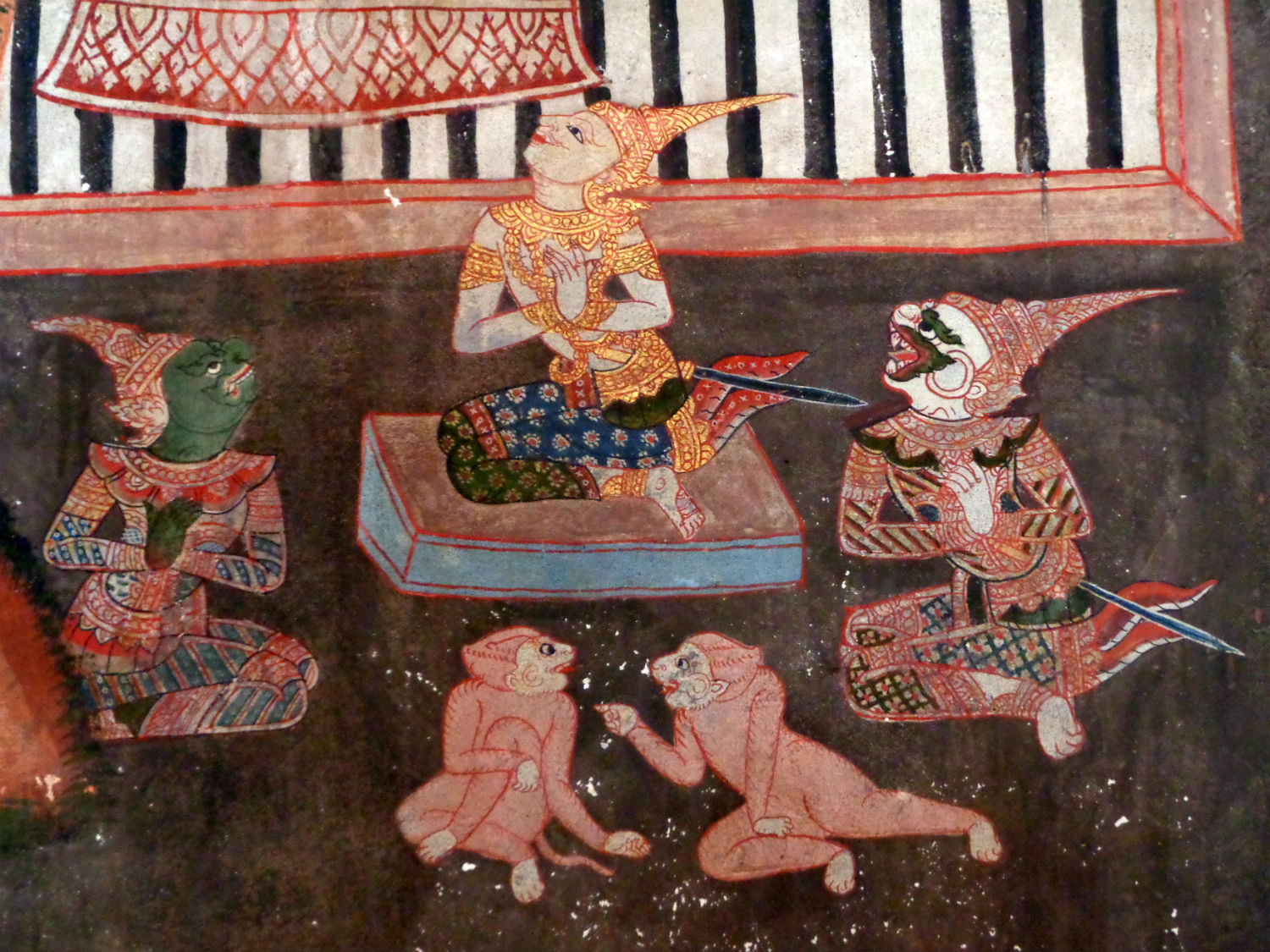
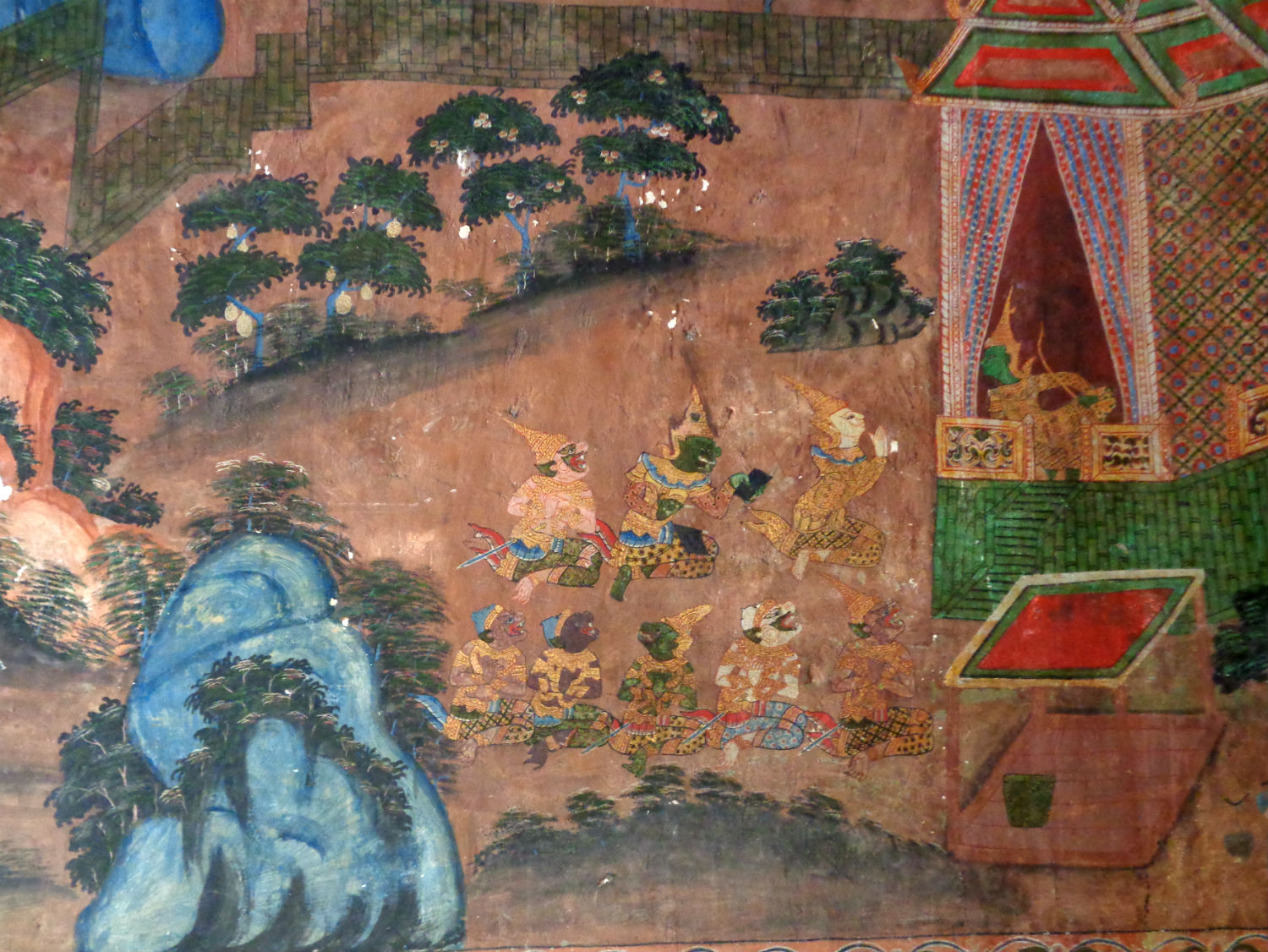
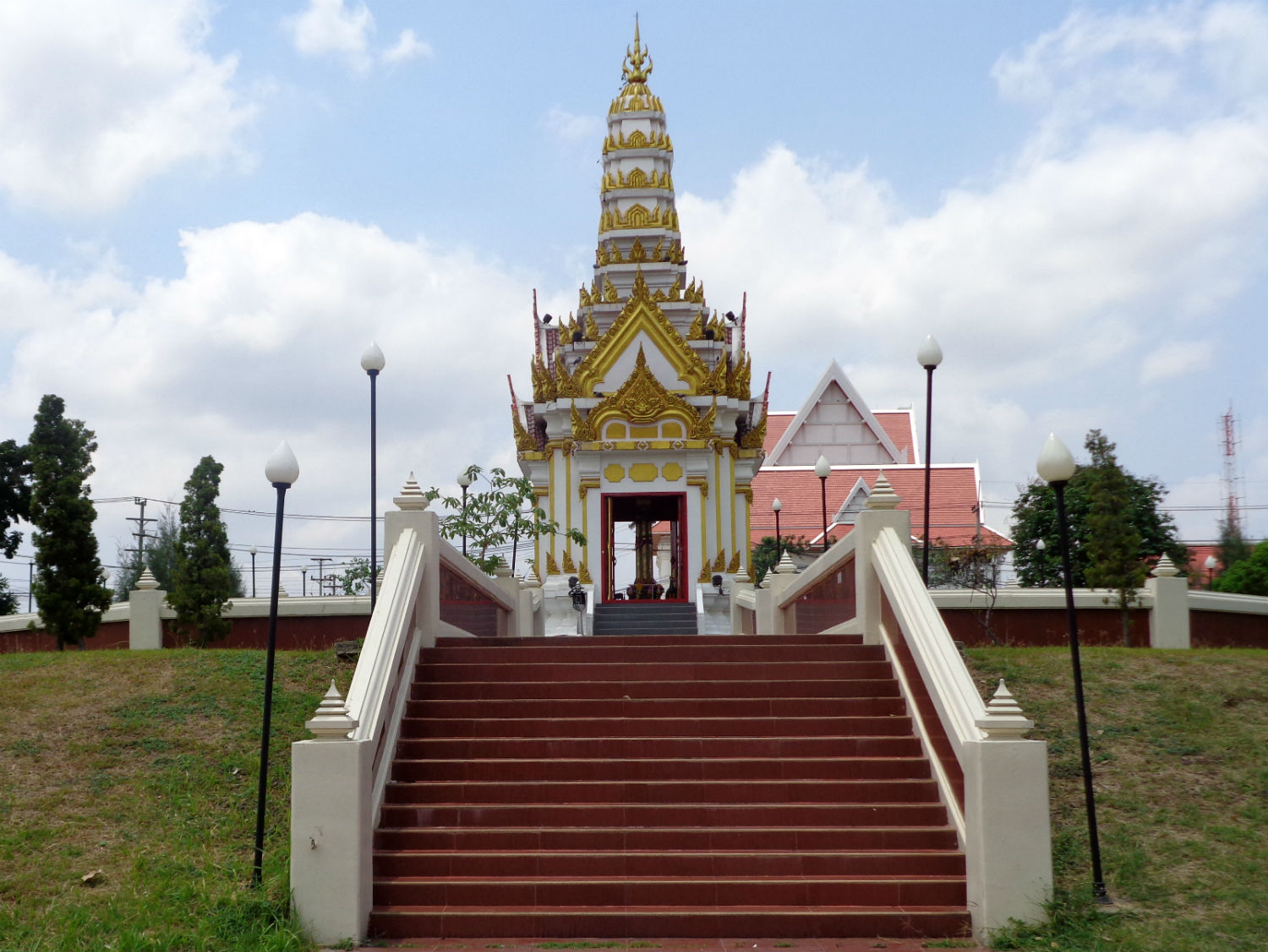 Wat Ratburana and City Pillar Shrine (bottom right), Phitsanulok
Wat Ratburana and City Pillar Shrine (bottom right), Phitsanulok City Pillar Shrine........The city pillar shrine, symbol of the city’s identity is located on the western bank close to the road bridge. The present shrine was completed on April 8th, 1997 having Prince Maha Vajiralongkorn present at the grand opening ceremony.
Ancient City........Moving north along the river bank are the remains of the old city declared a site of special historical interest now administered by the Fine Arts Department. The site comprises the following :
Wat Viharn Thong
Wat Sri Sukhot
Wat Pho Thong
Song Hong Pond
Somdej Phra Naresuan Maharat Shrine
Chan Palace (site of)
Exhibition Centre
The Exhibition Centre is a modern building divided into four sections. Section 1 deals with the geography and topography of the area and relates specifically to the ruins we see today. Section 2 deals with the historical records over the past 900 years. Section 3 deals with the Royal Palace itself, art and works of art of the Phitsanulok Court. Section 4 relates to King Naresuan the Great himself from his birth here at the Chan Palace to Thailand’s greatest warrior.
Today those days of glory are over as a result of the Burmese invasion of 1767 and the fall of Ayutthaya and the old city is in ruin.
Ancient City........Moving north along the river bank are the remains of the old city declared a site of special historical interest now administered by the Fine Arts Department. The site comprises the following :
Wat Viharn Thong
Wat Sri Sukhot
Wat Pho Thong
Song Hong Pond
Somdej Phra Naresuan Maharat Shrine
Chan Palace (site of)
Exhibition Centre
The Exhibition Centre is a modern building divided into four sections. Section 1 deals with the geography and topography of the area and relates specifically to the ruins we see today. Section 2 deals with the historical records over the past 900 years. Section 3 deals with the Royal Palace itself, art and works of art of the Phitsanulok Court. Section 4 relates to King Naresuan the Great himself from his birth here at the Chan Palace to Thailand’s greatest warrior.
Today those days of glory are over as a result of the Burmese invasion of 1767 and the fall of Ayutthaya and the old city is in ruin.
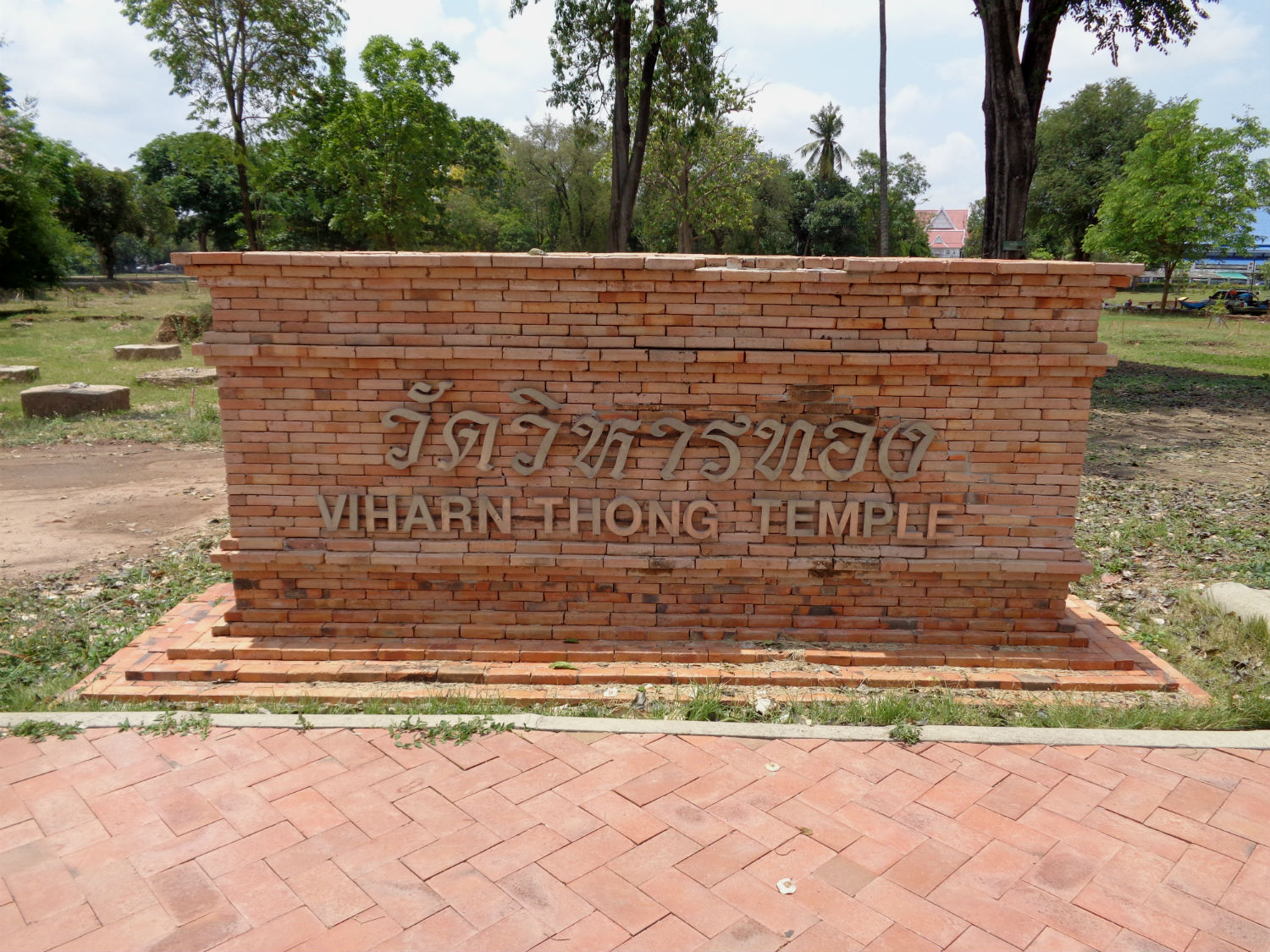
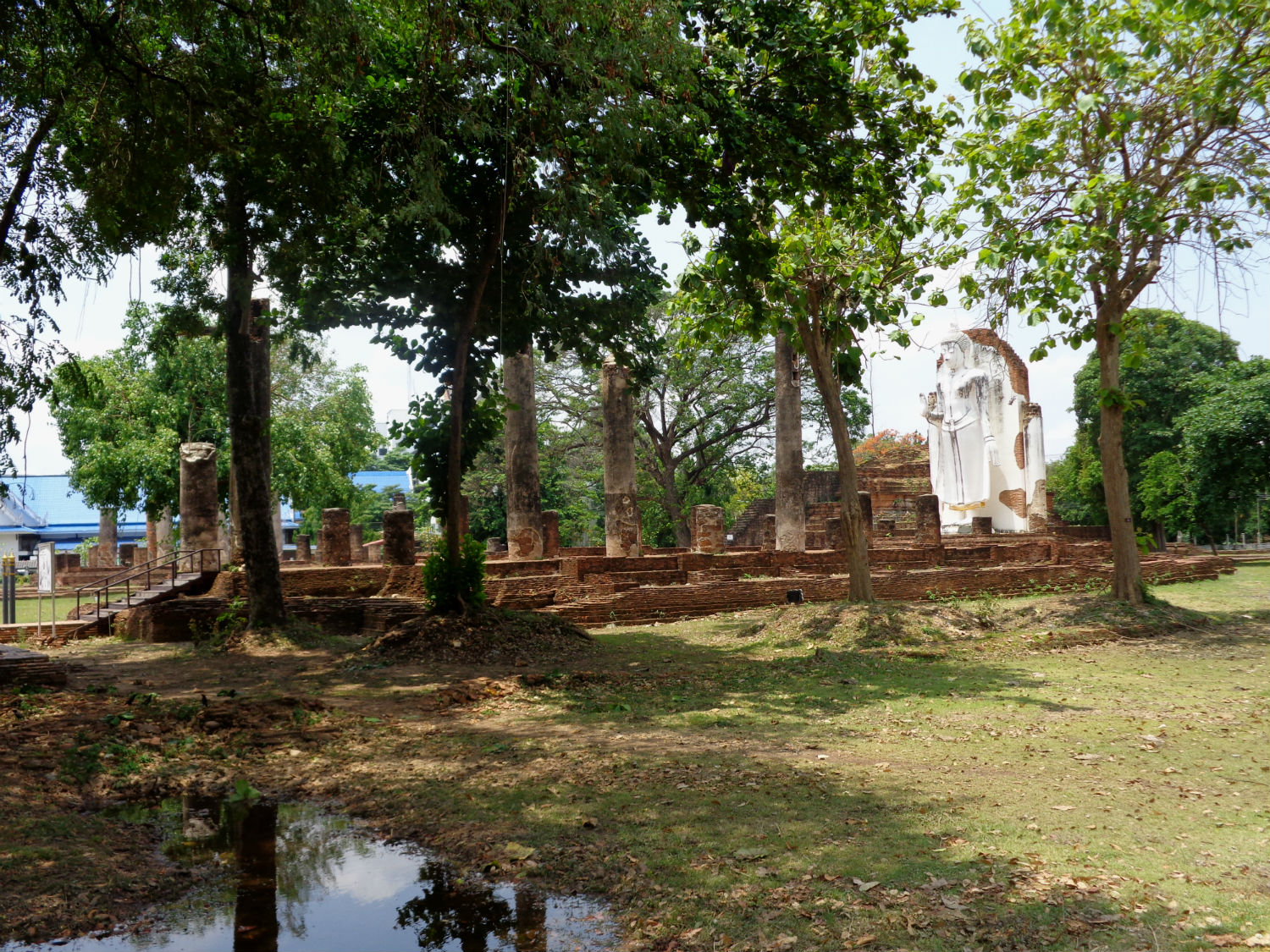
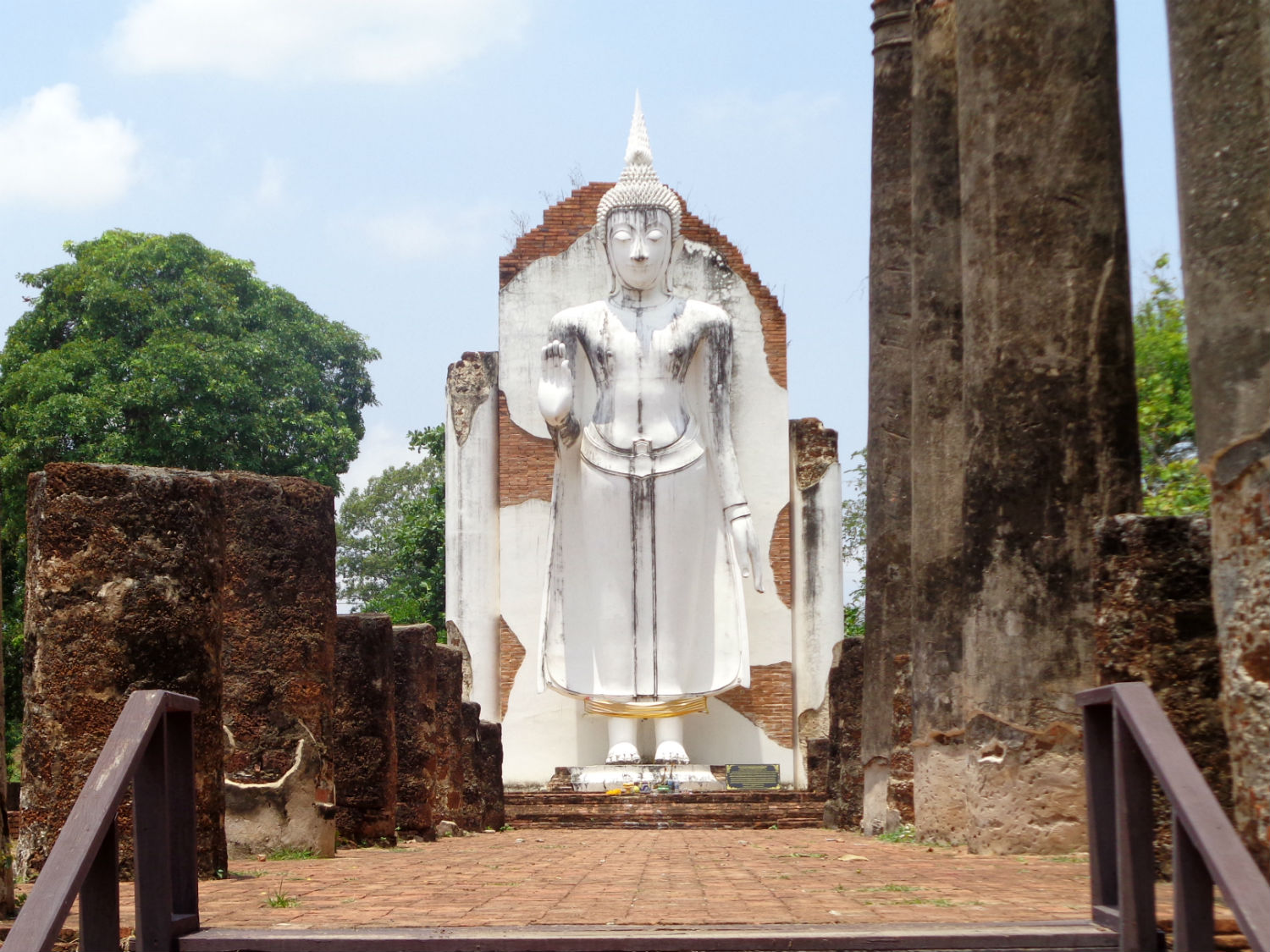
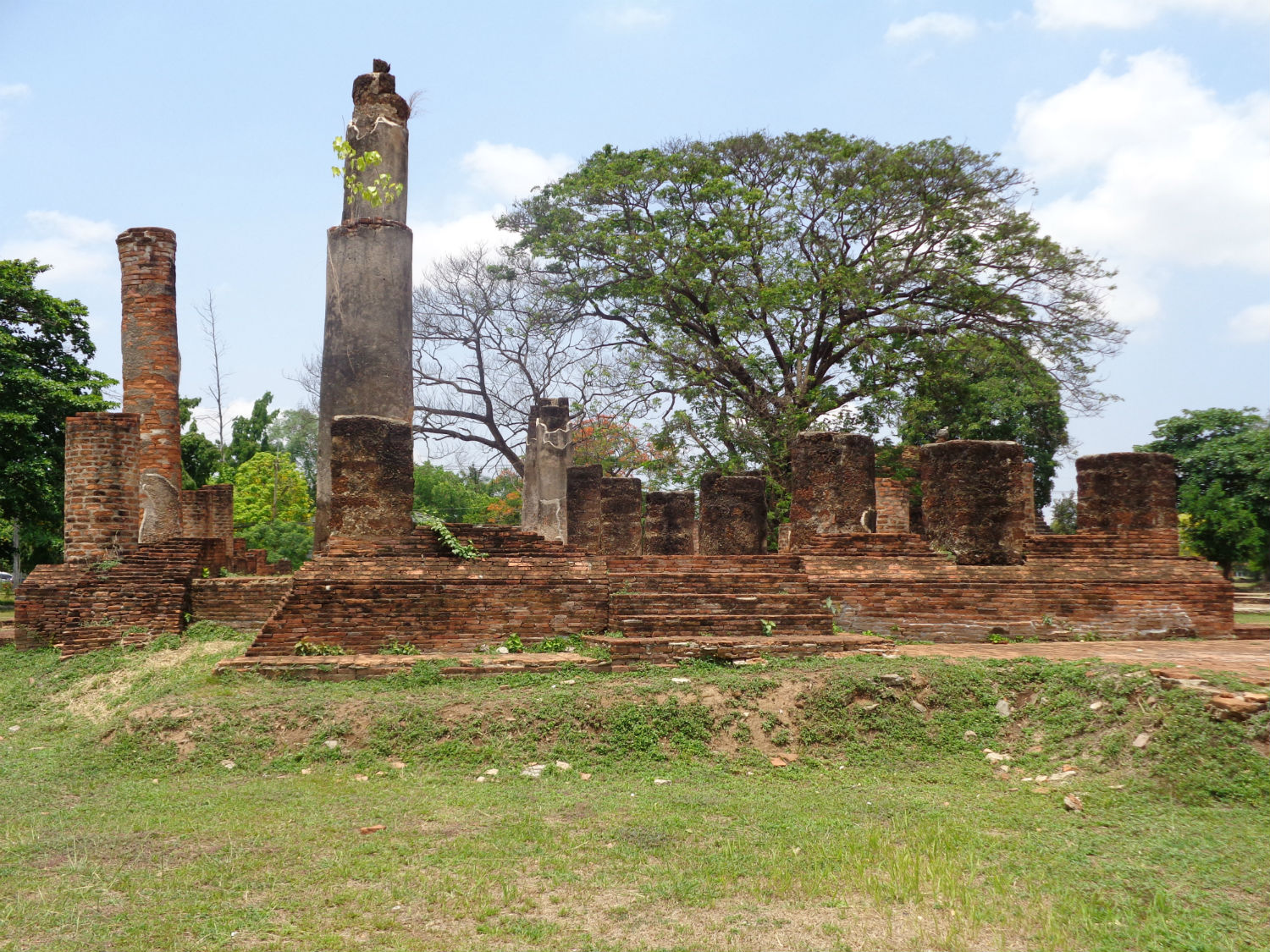
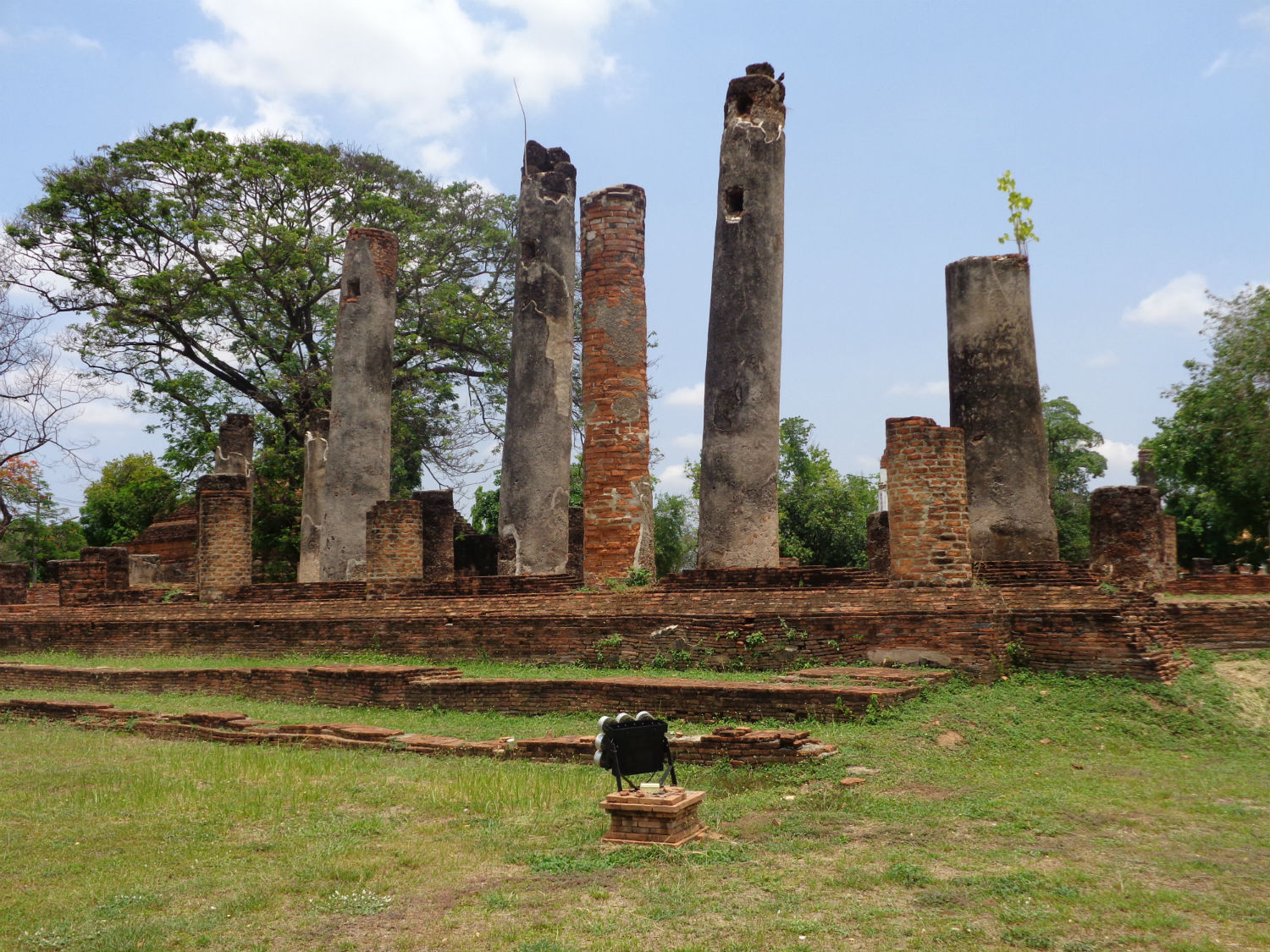
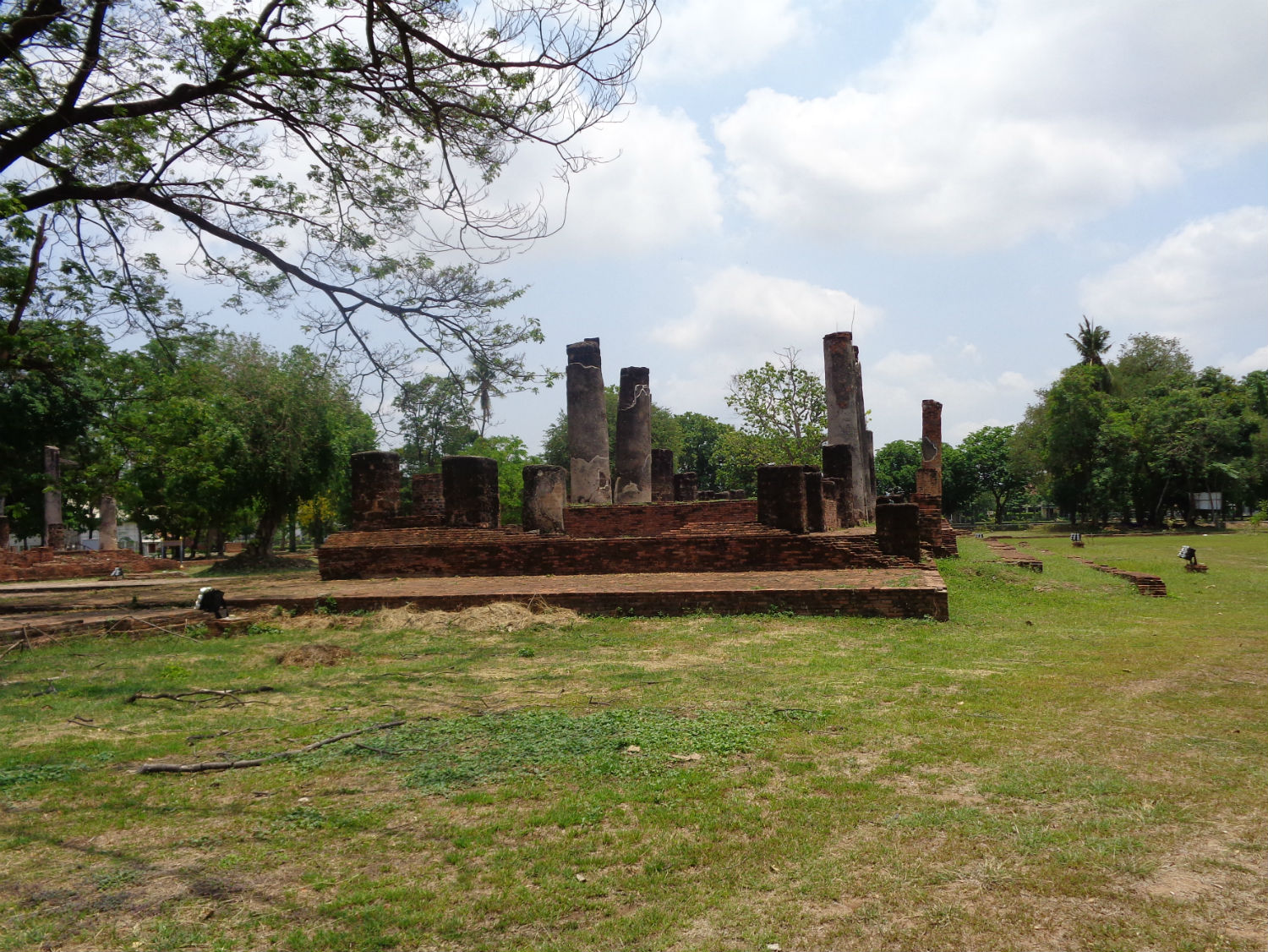
Wat Viharn Thong
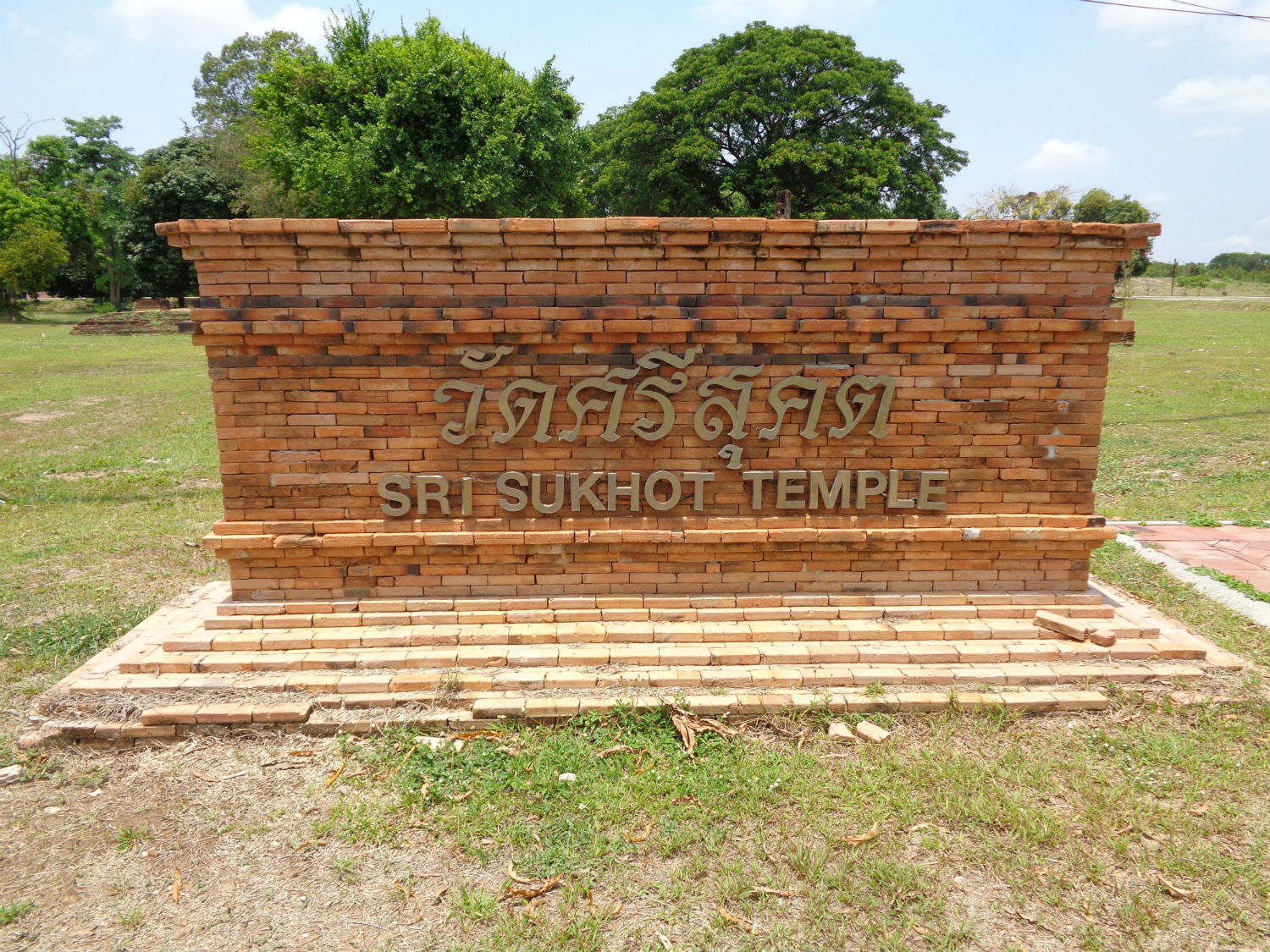
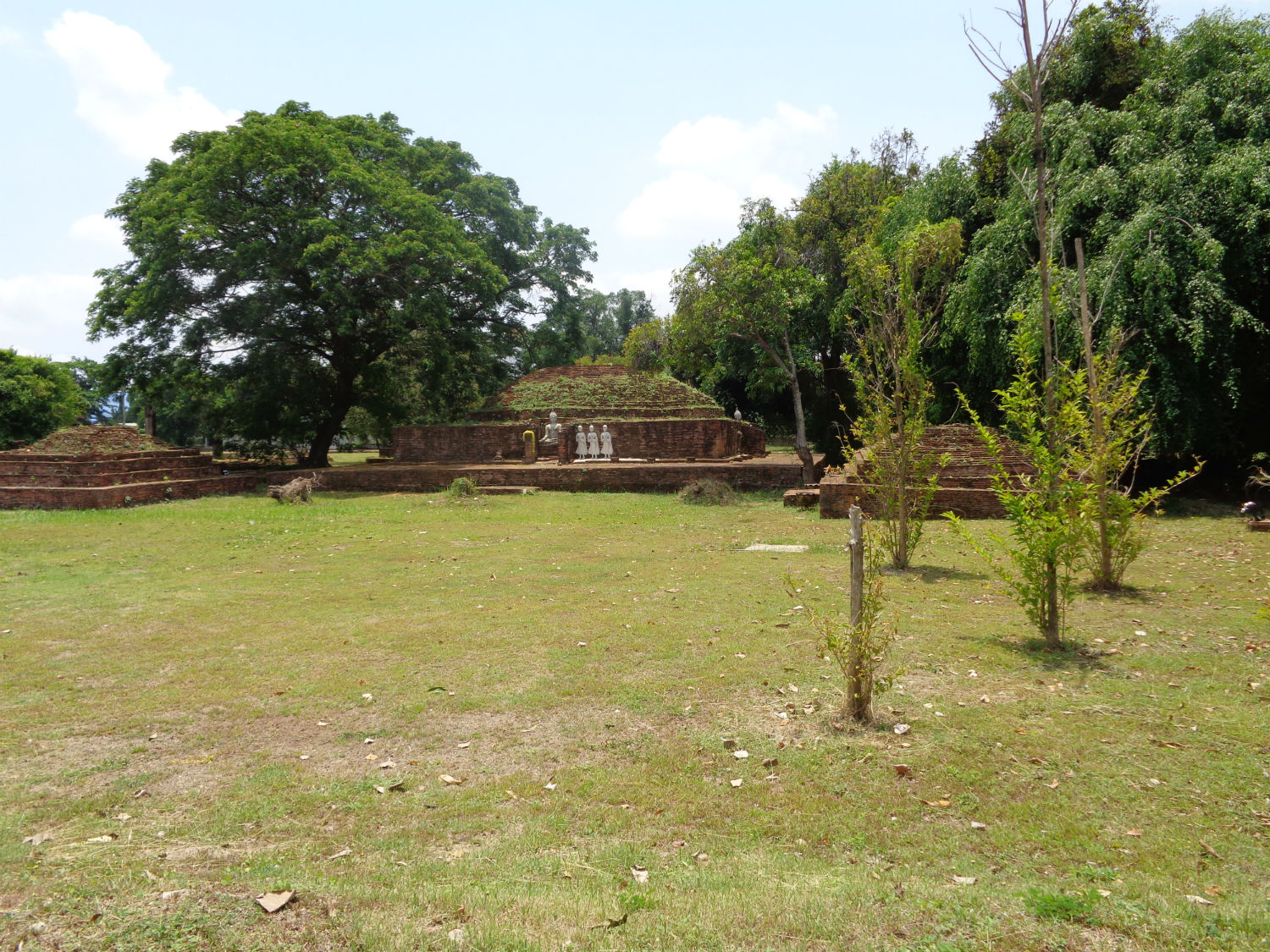
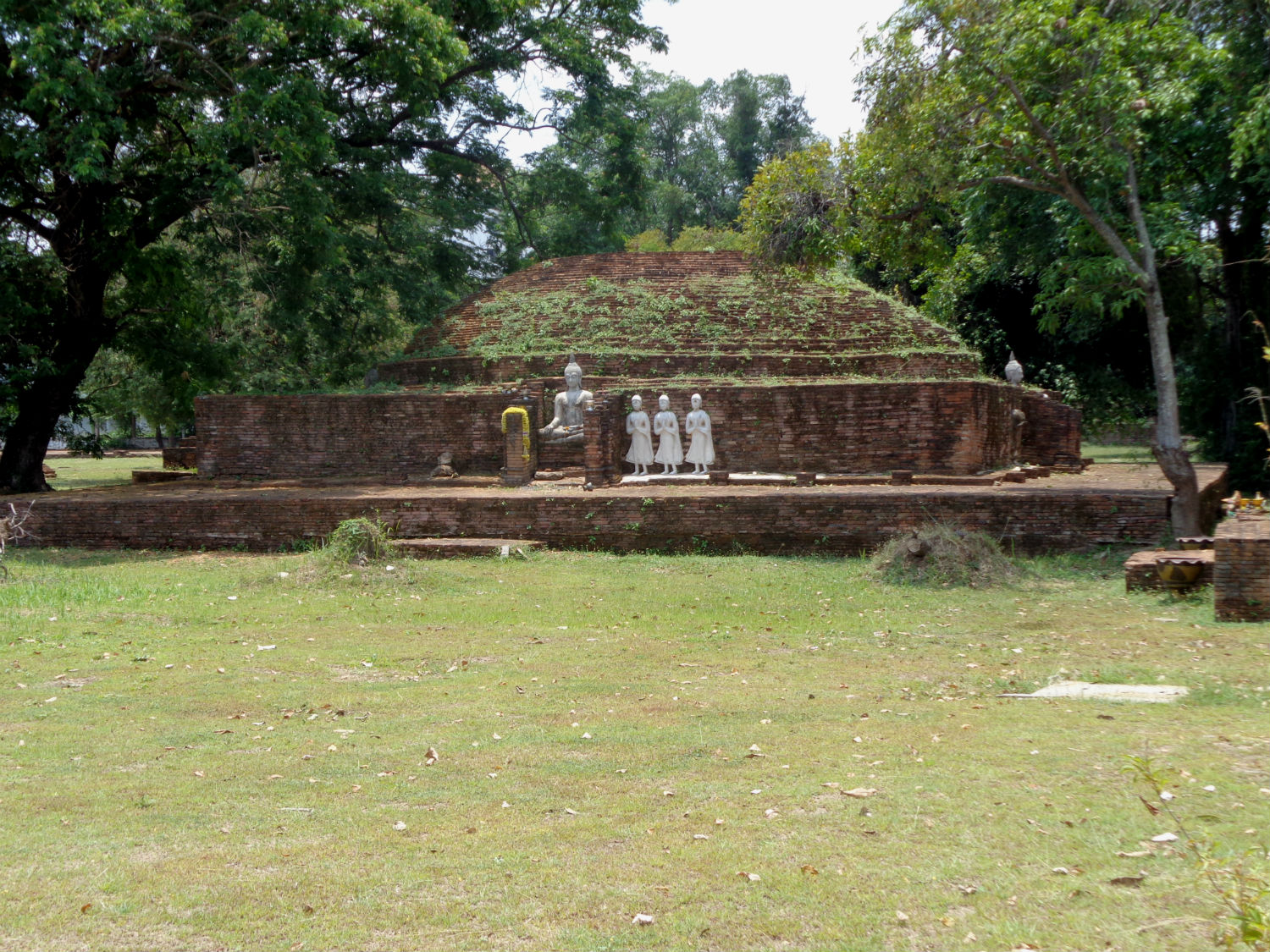
Wat Sri Sukhot
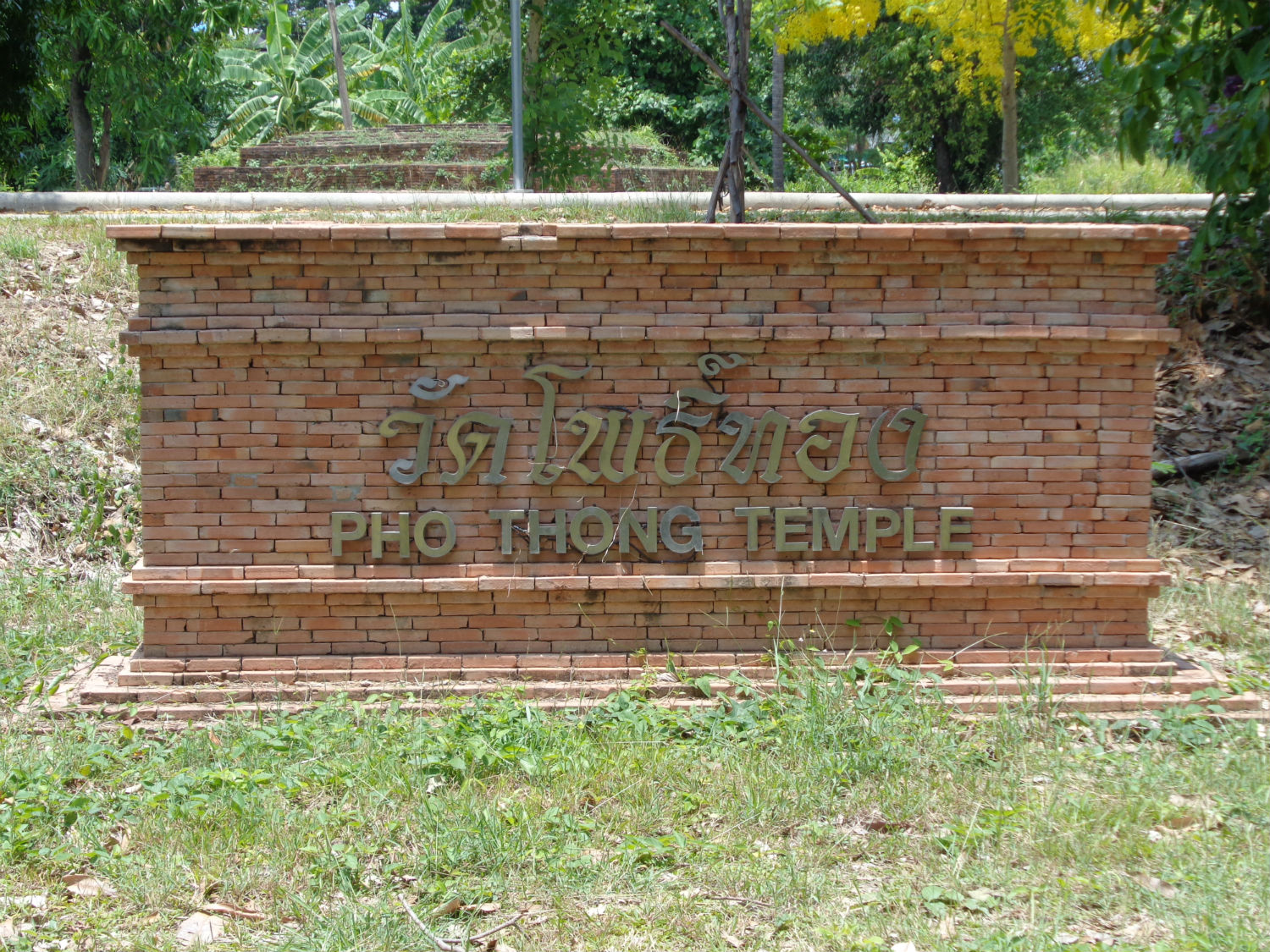
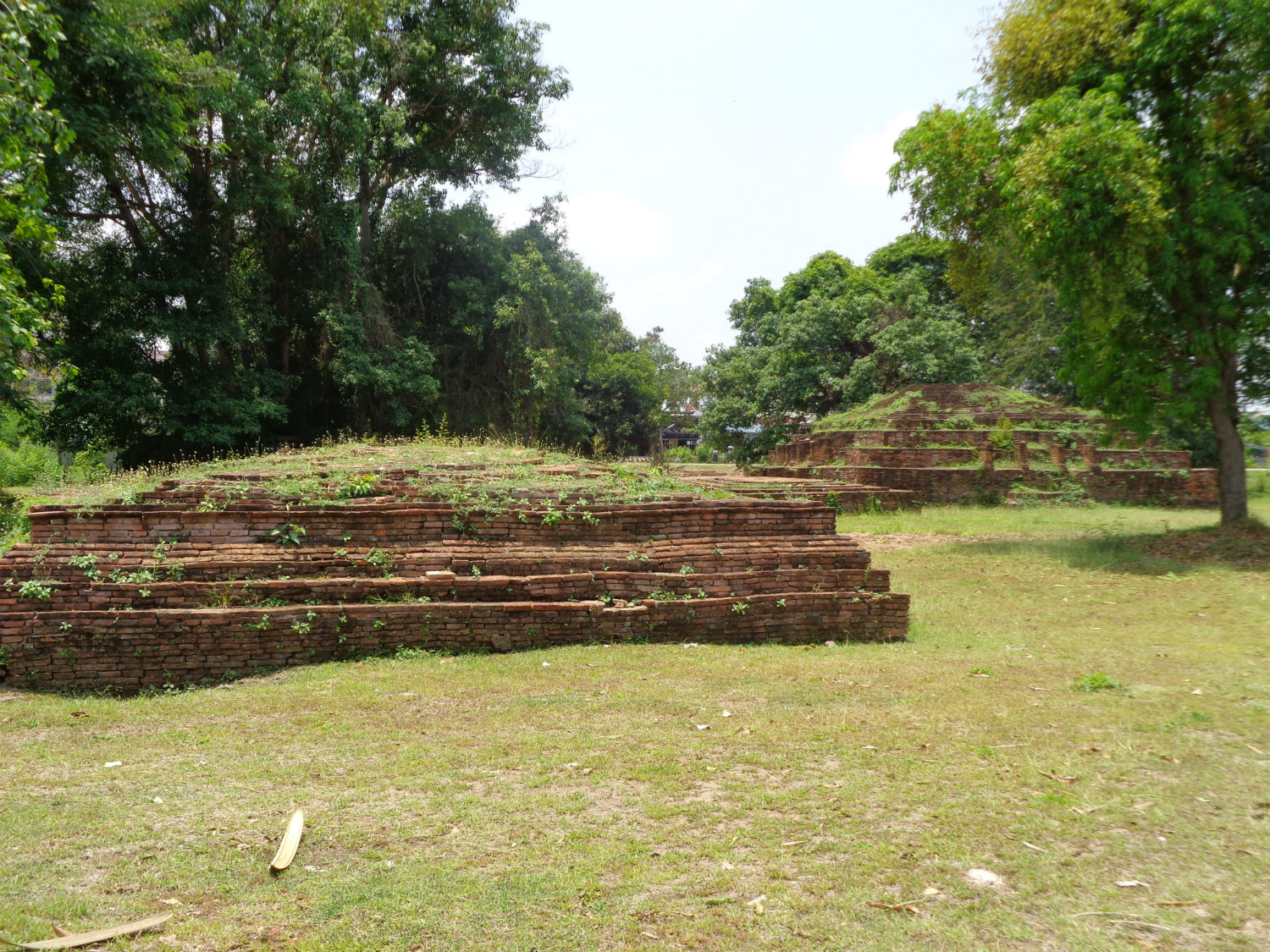
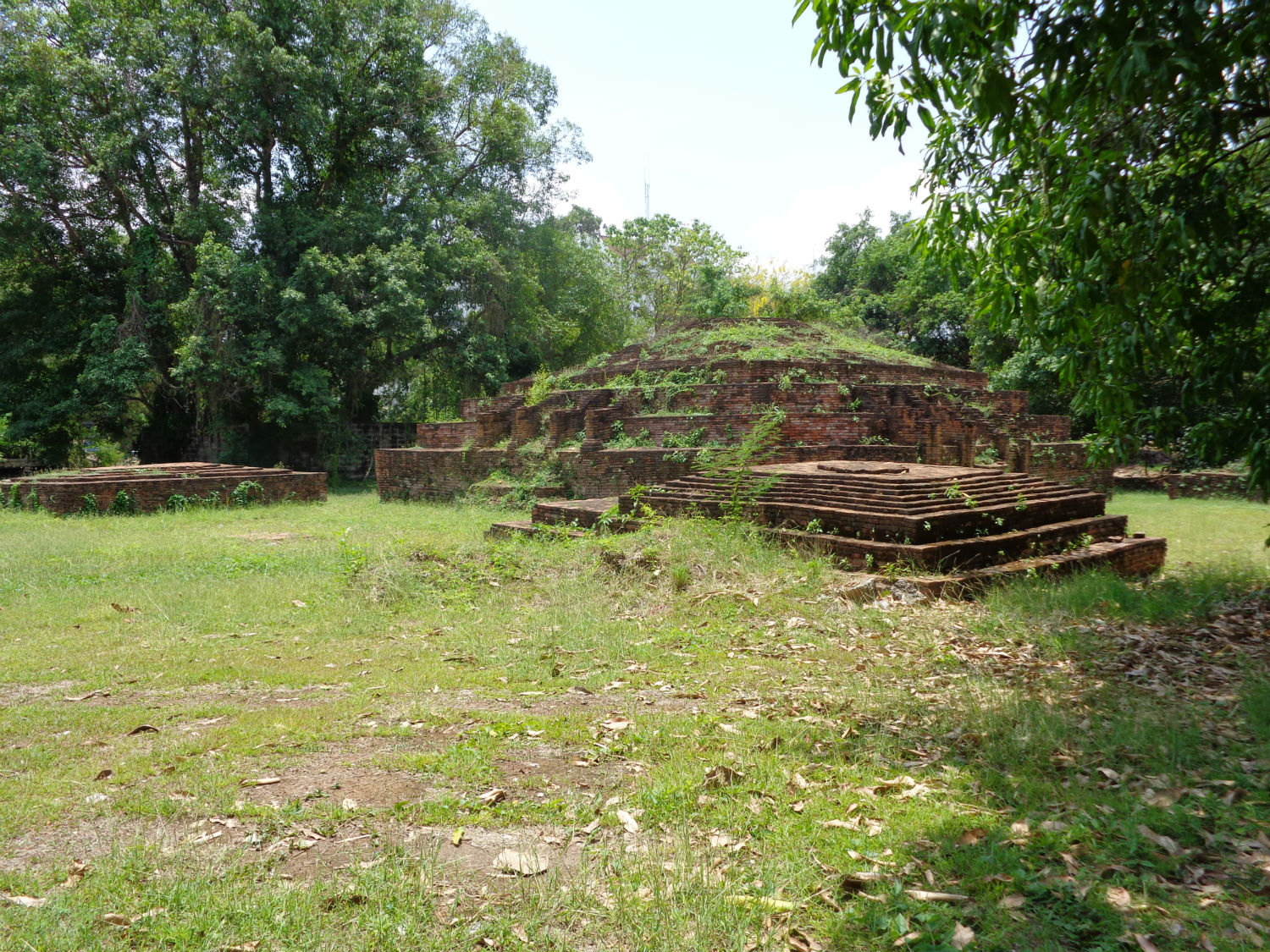 Wat Pho Thong
Wat Pho Thong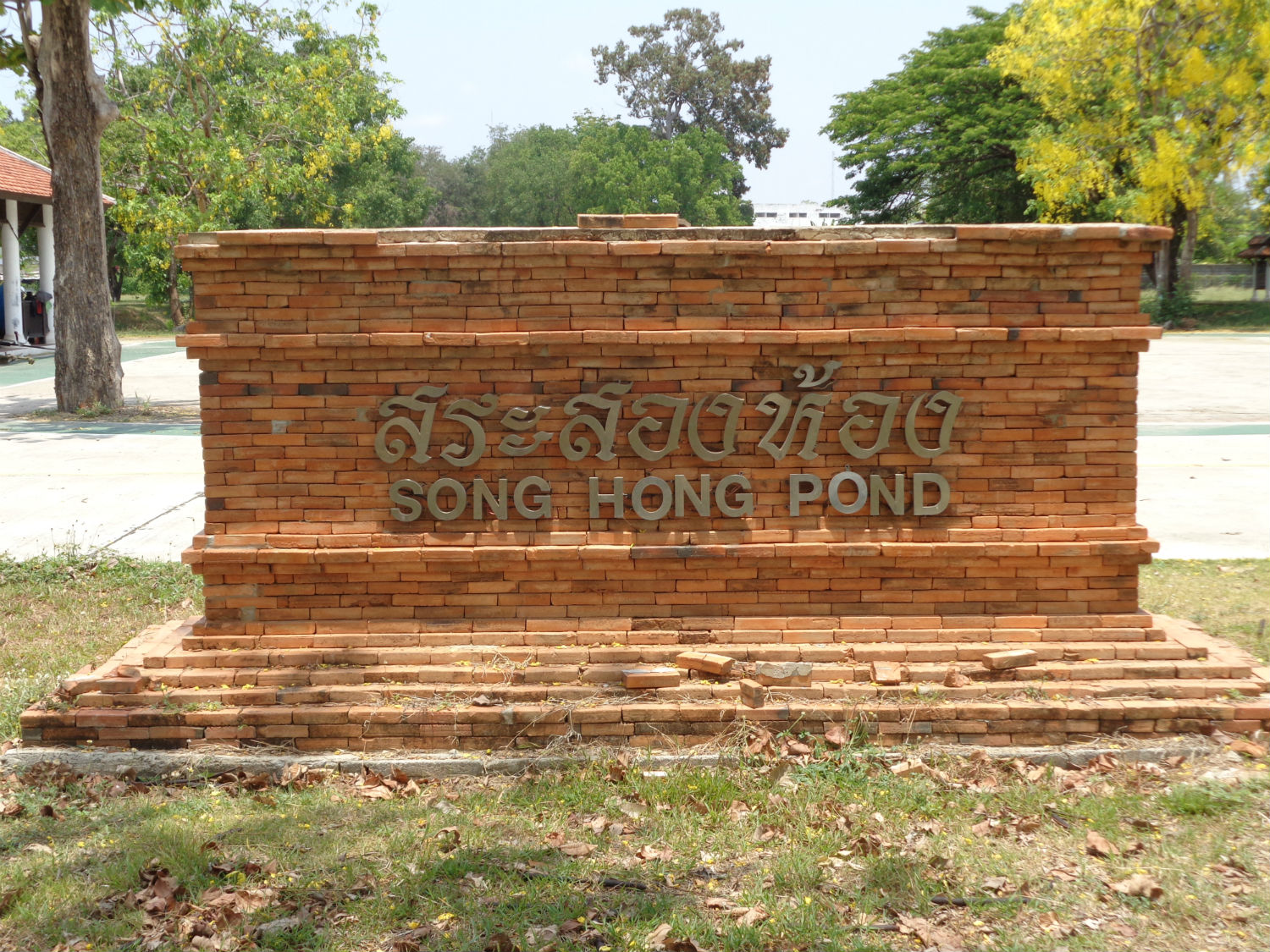
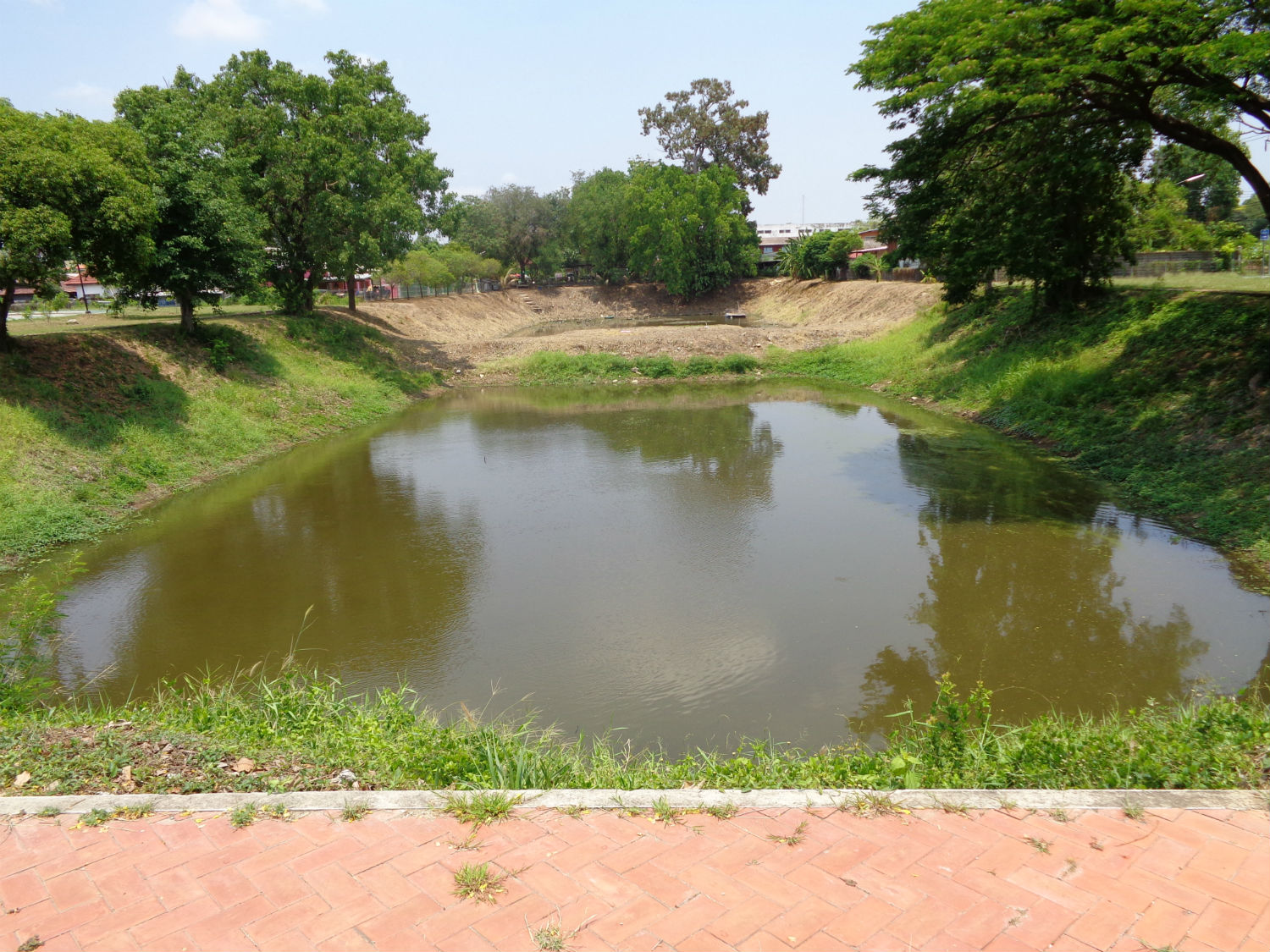
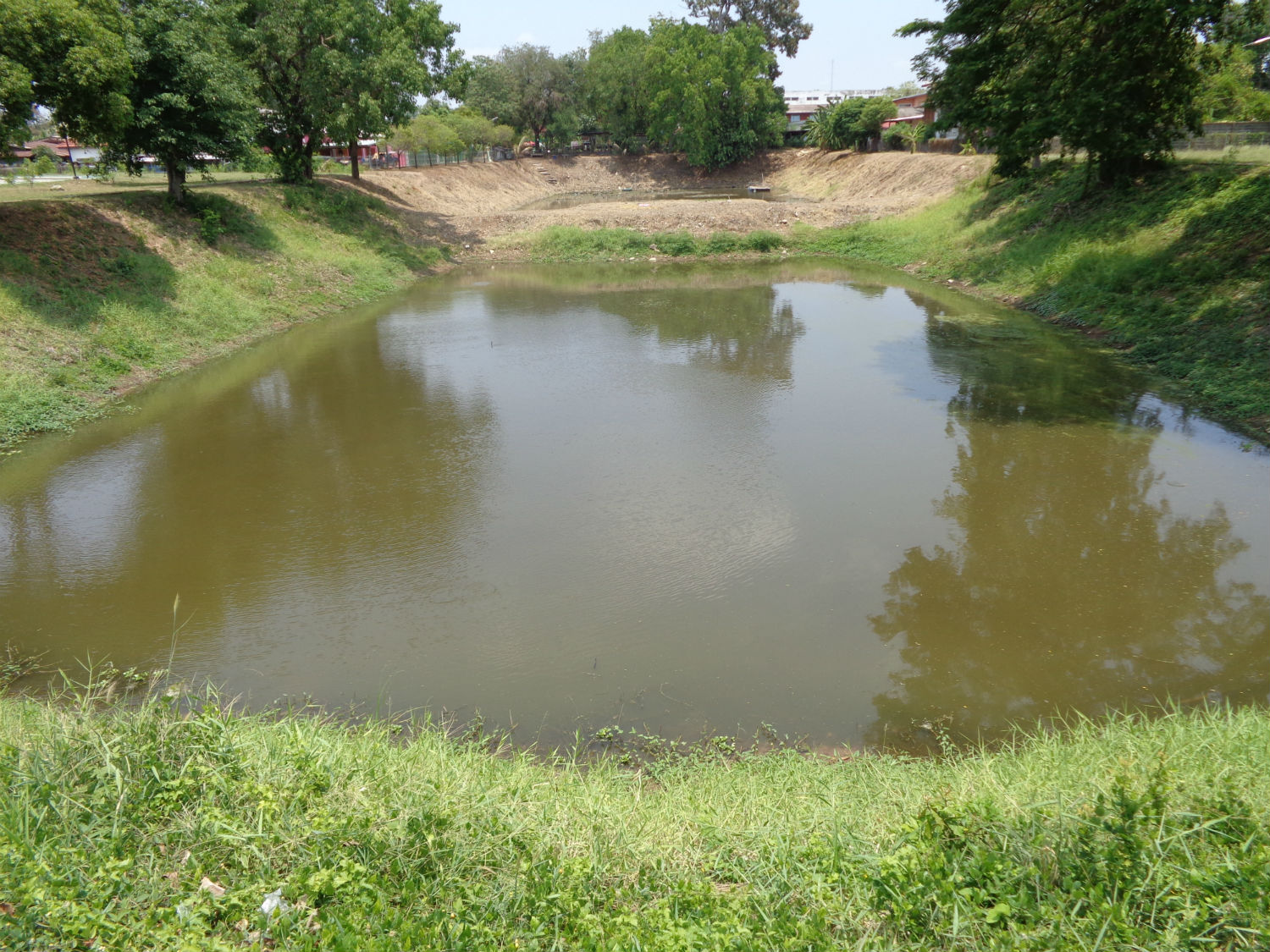 Song Hong Pond
Song Hong Pond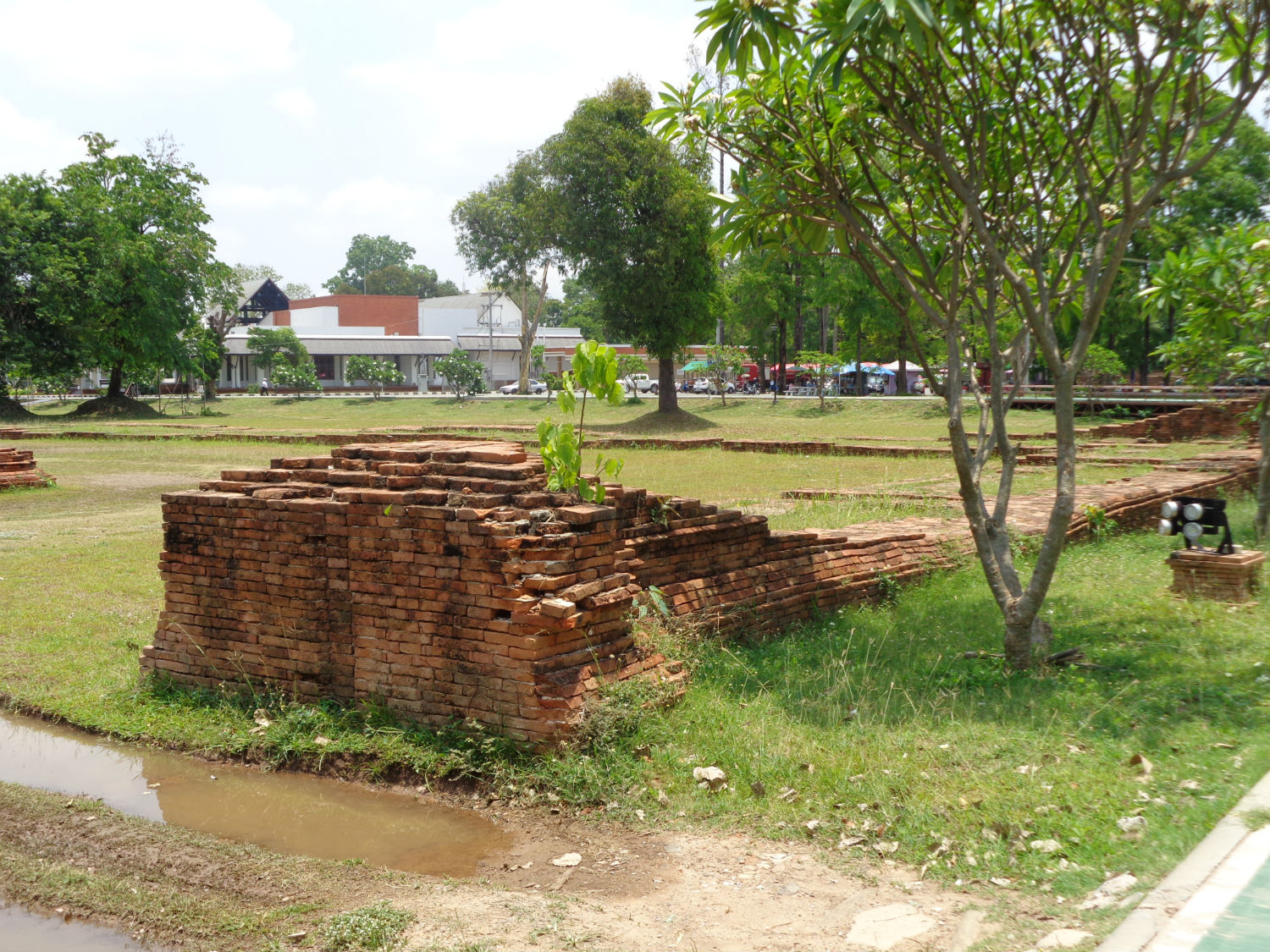
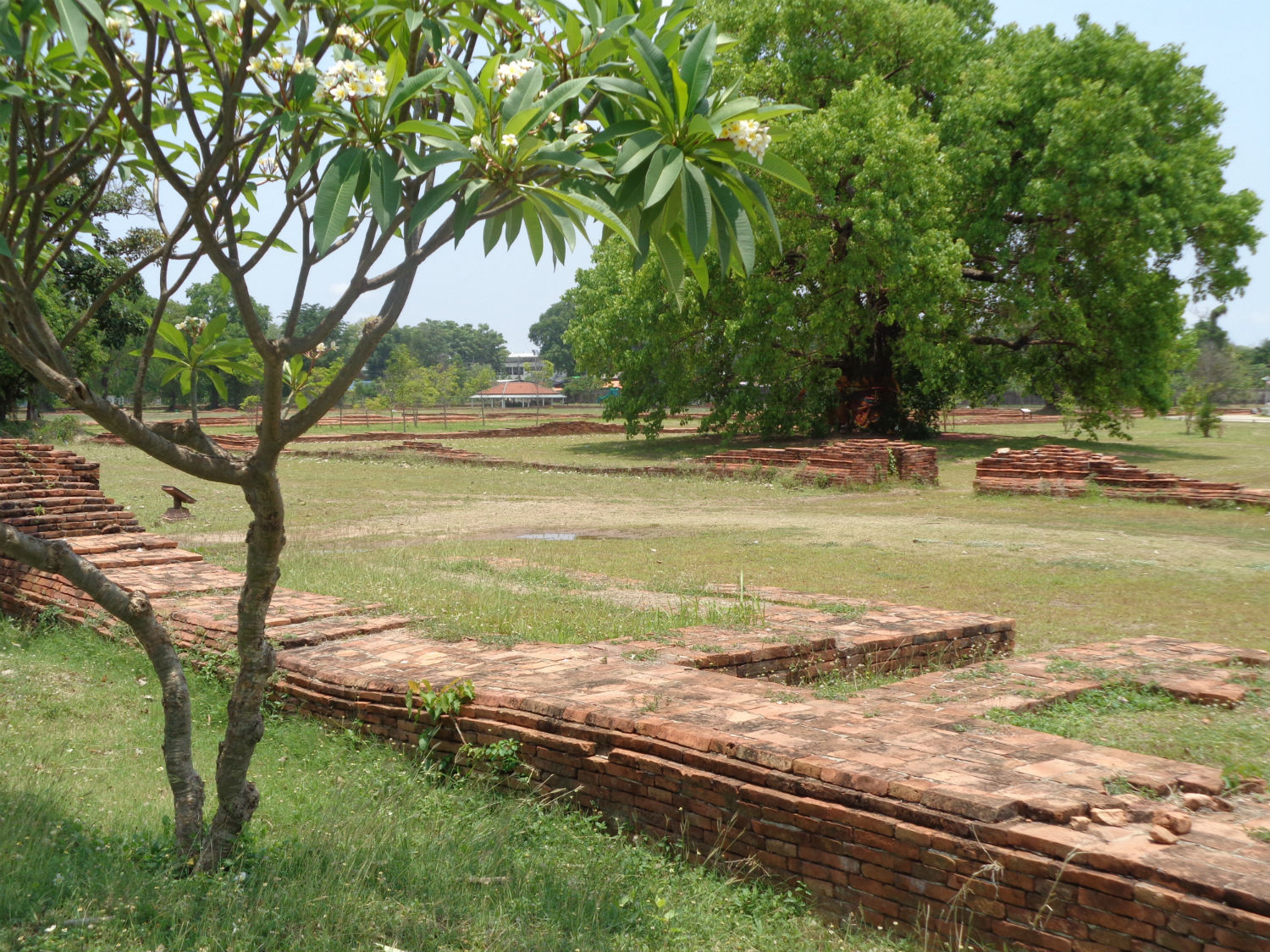
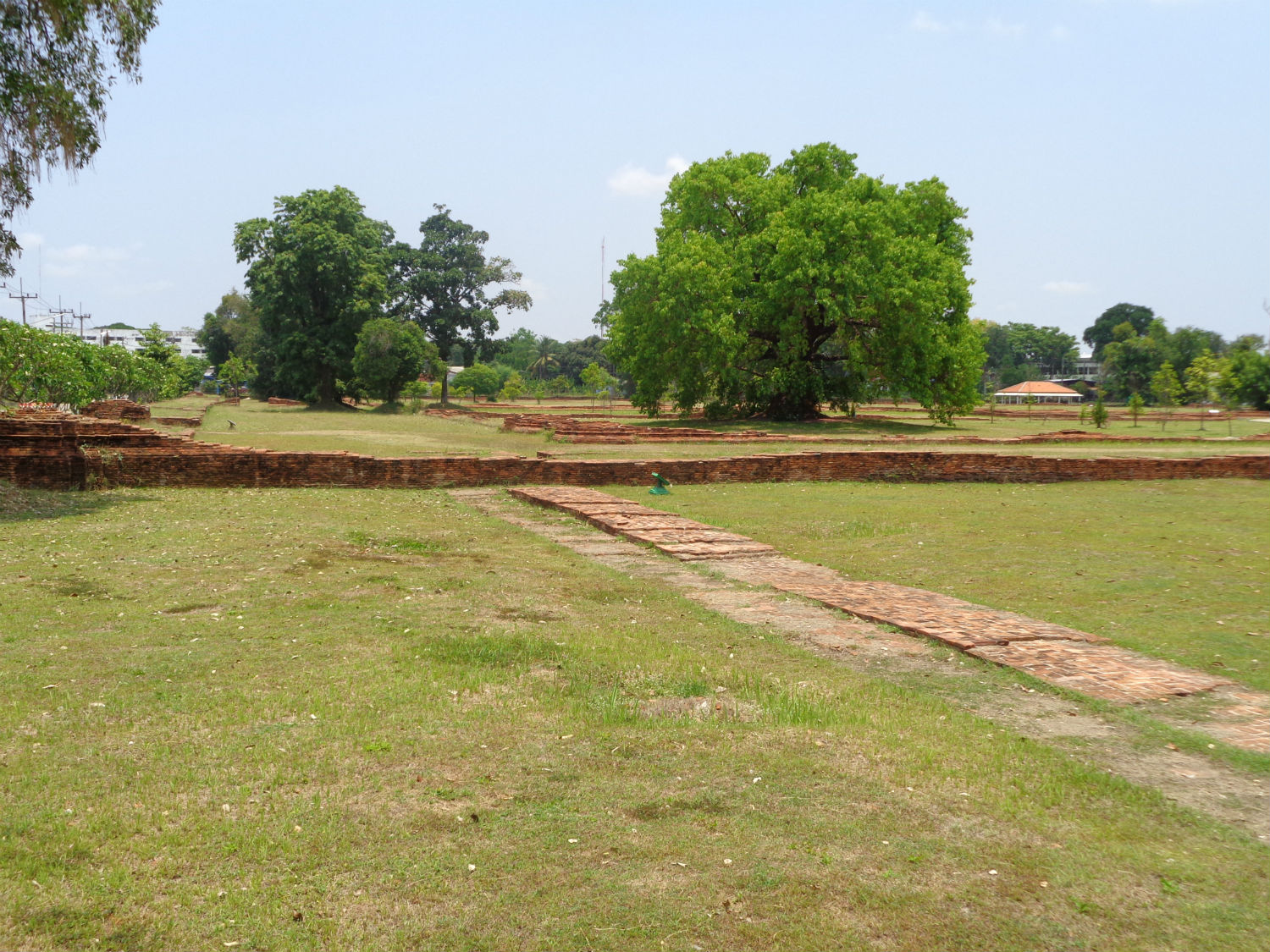 Chan Palace (site of)
Chan Palace (site of)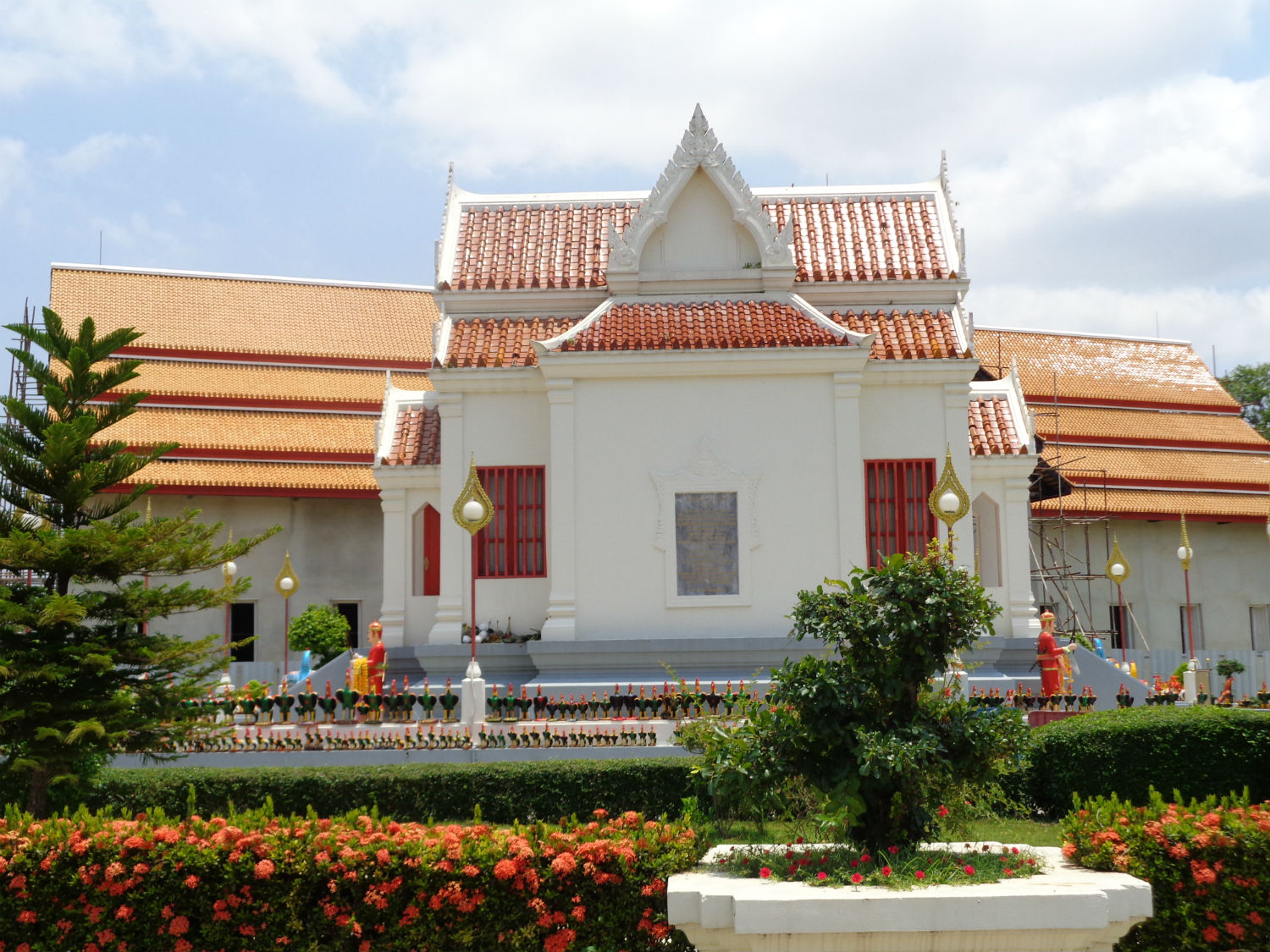
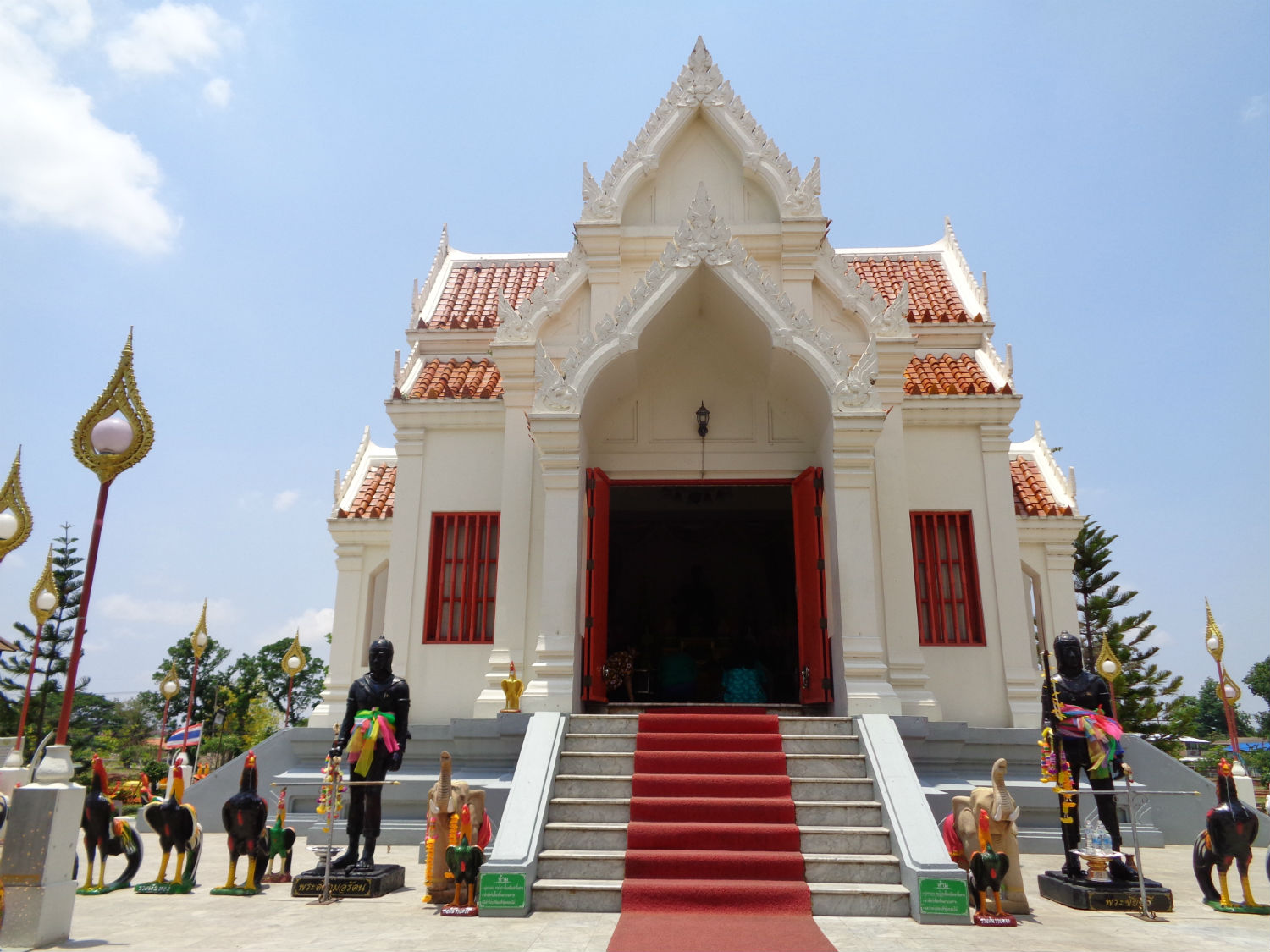
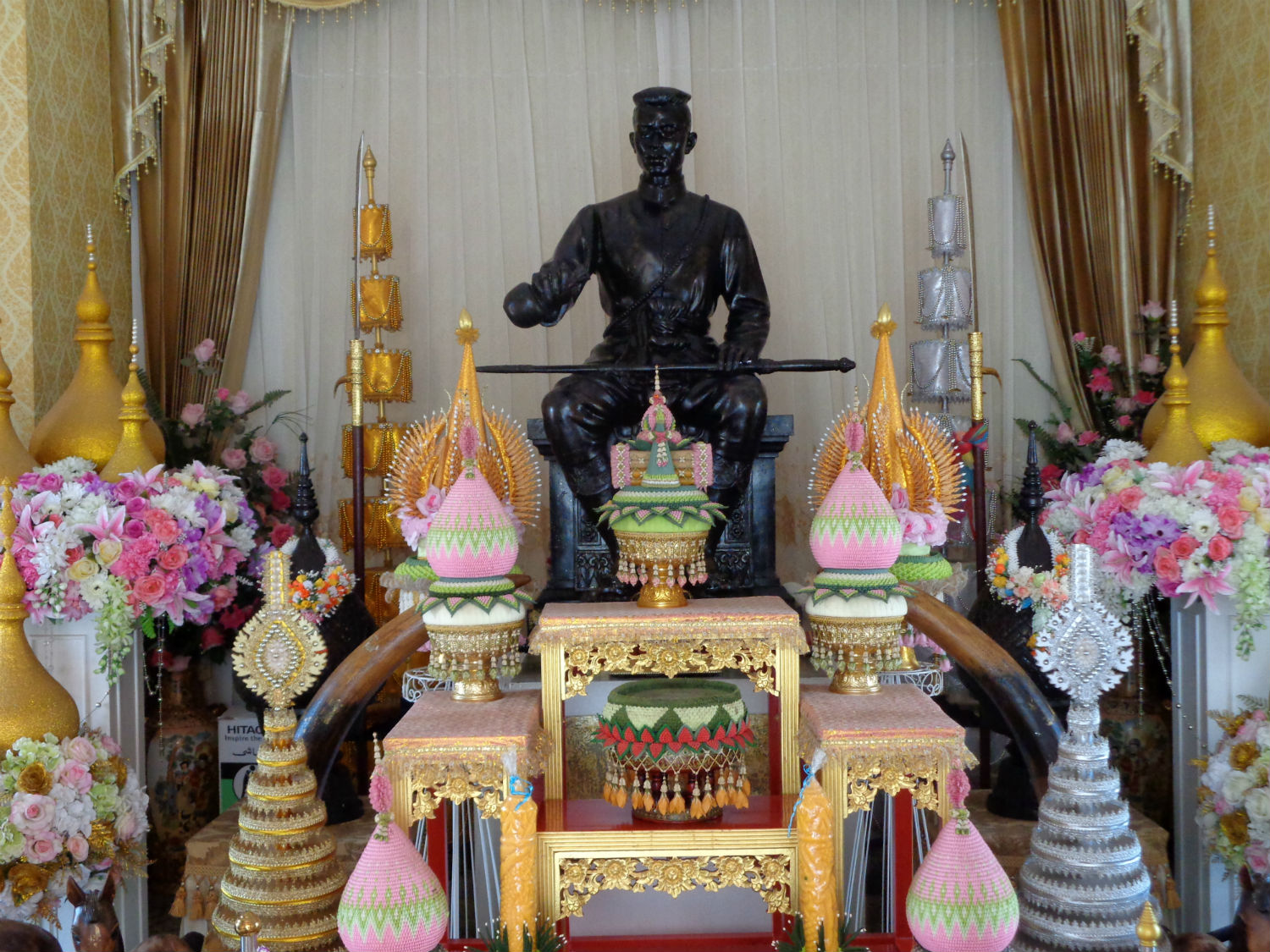 Somdej Phra Naresuan Maharat Shrine
Somdej Phra Naresuan Maharat Shrine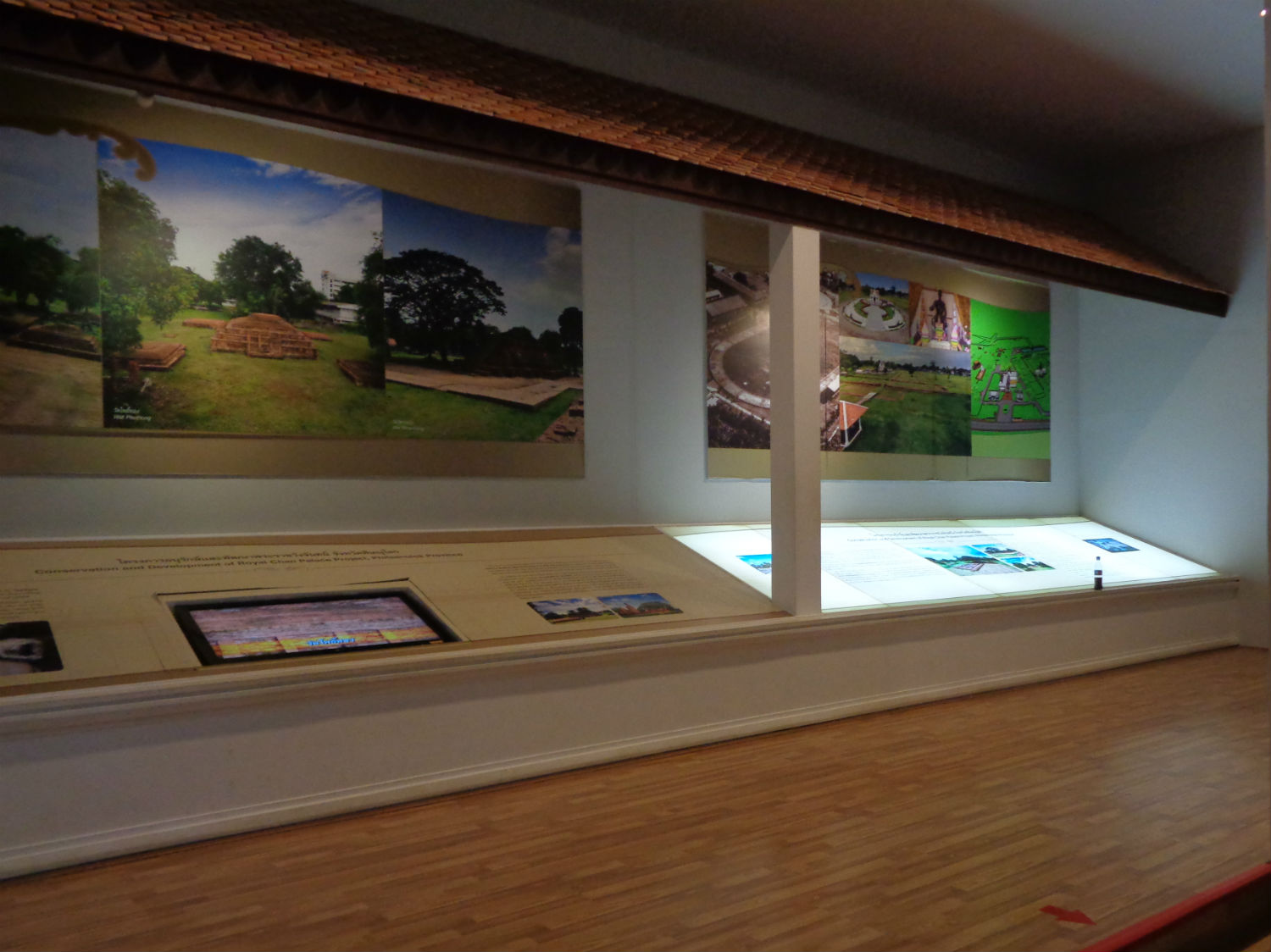

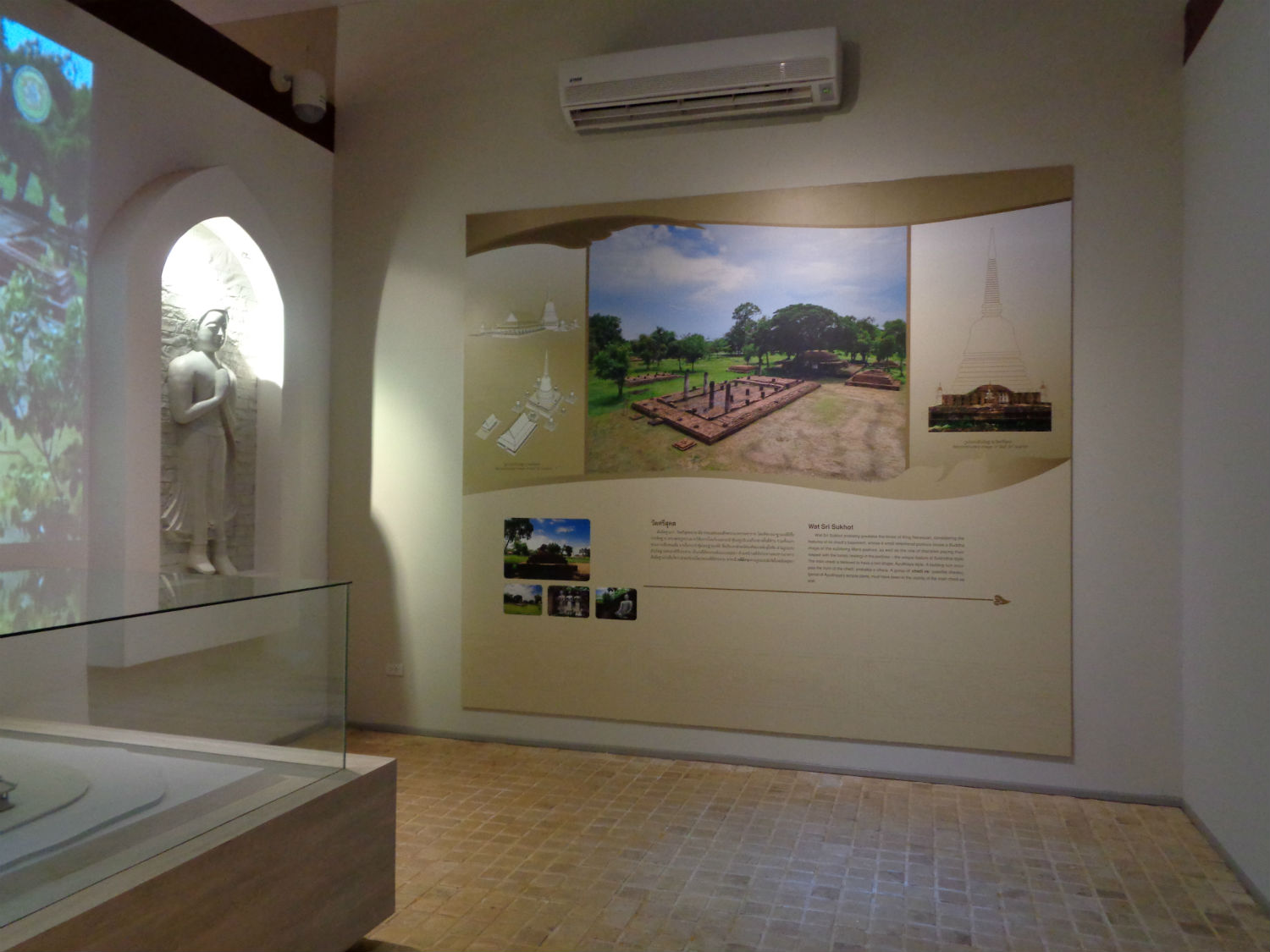
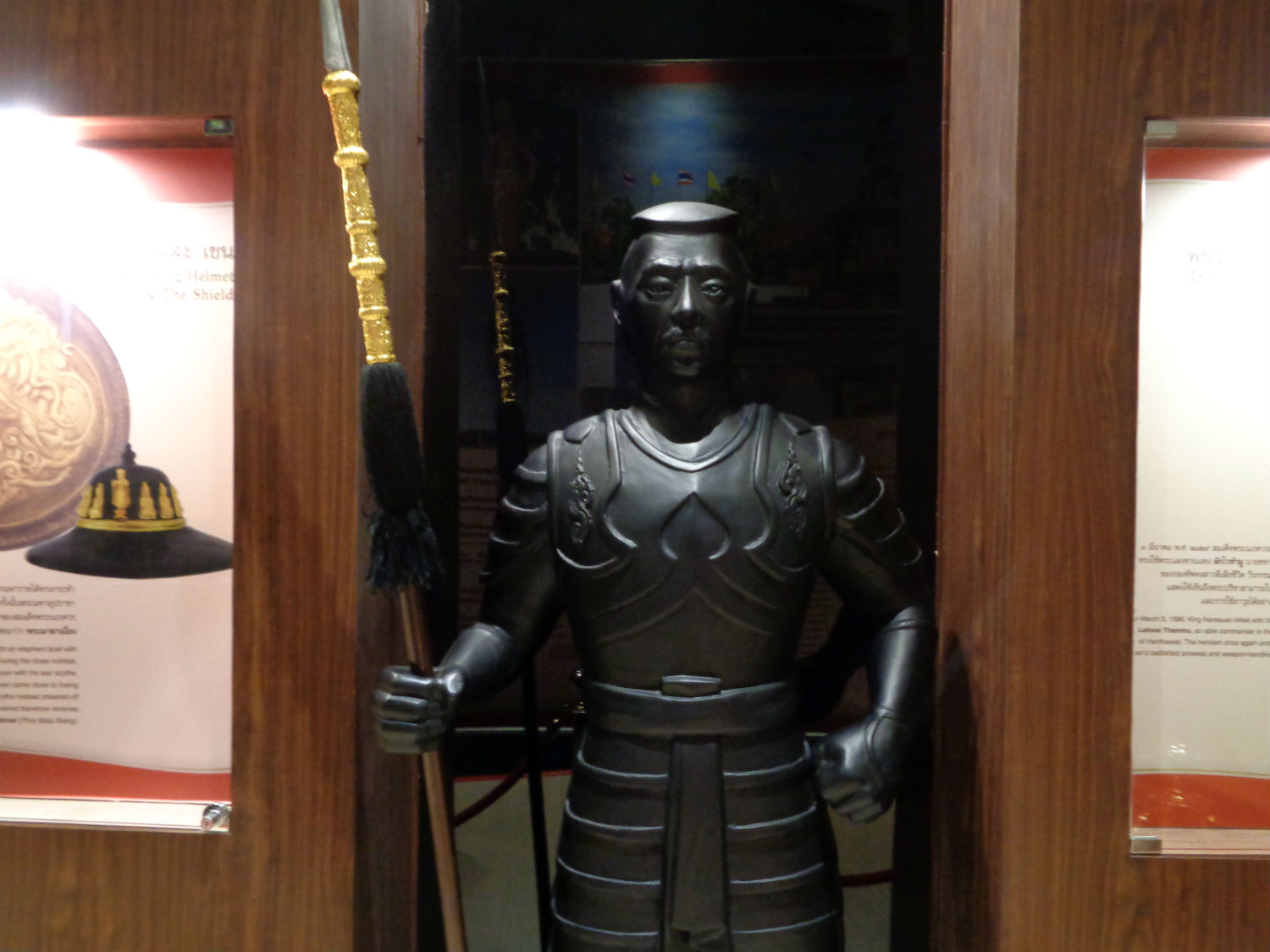
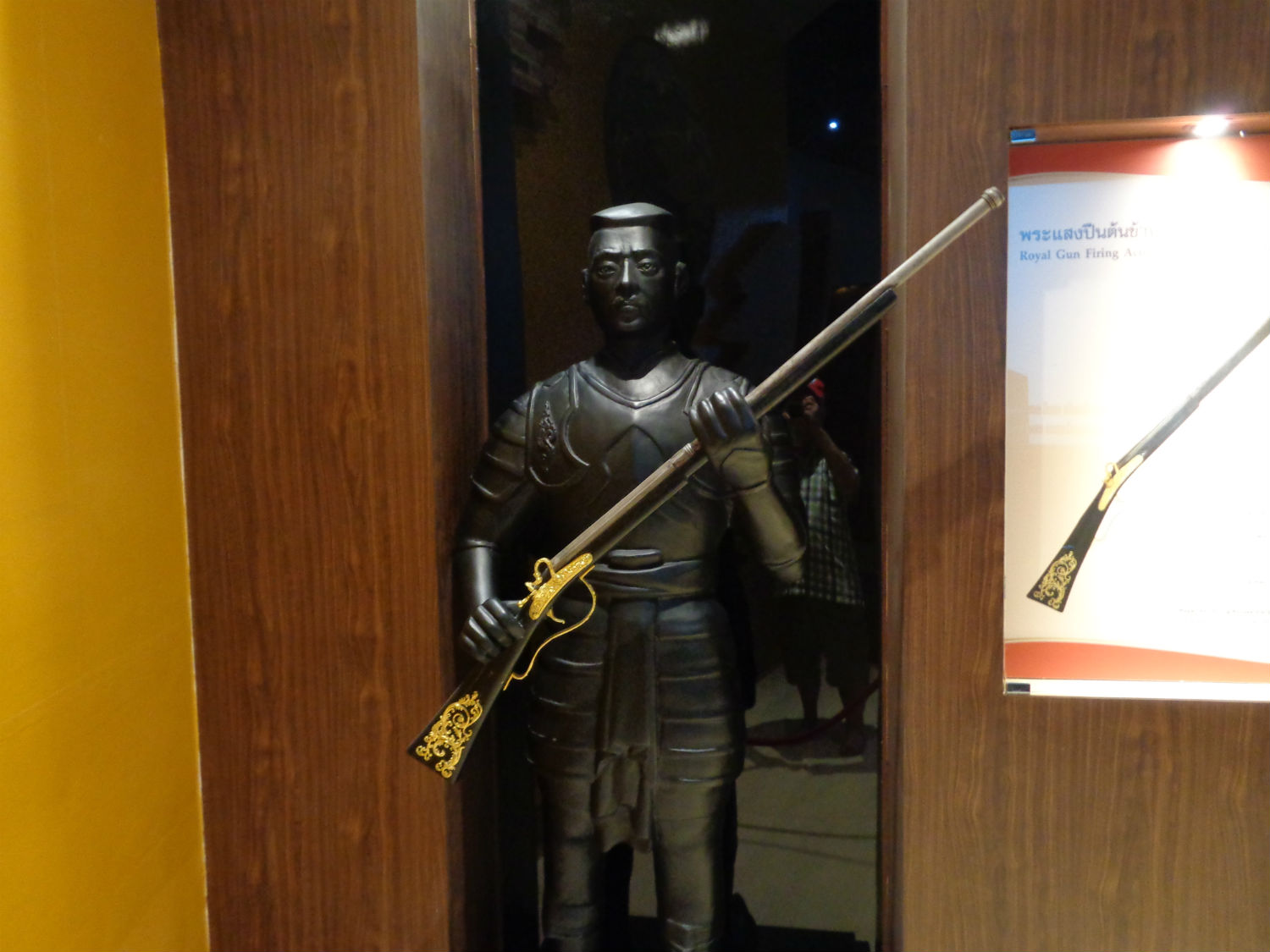
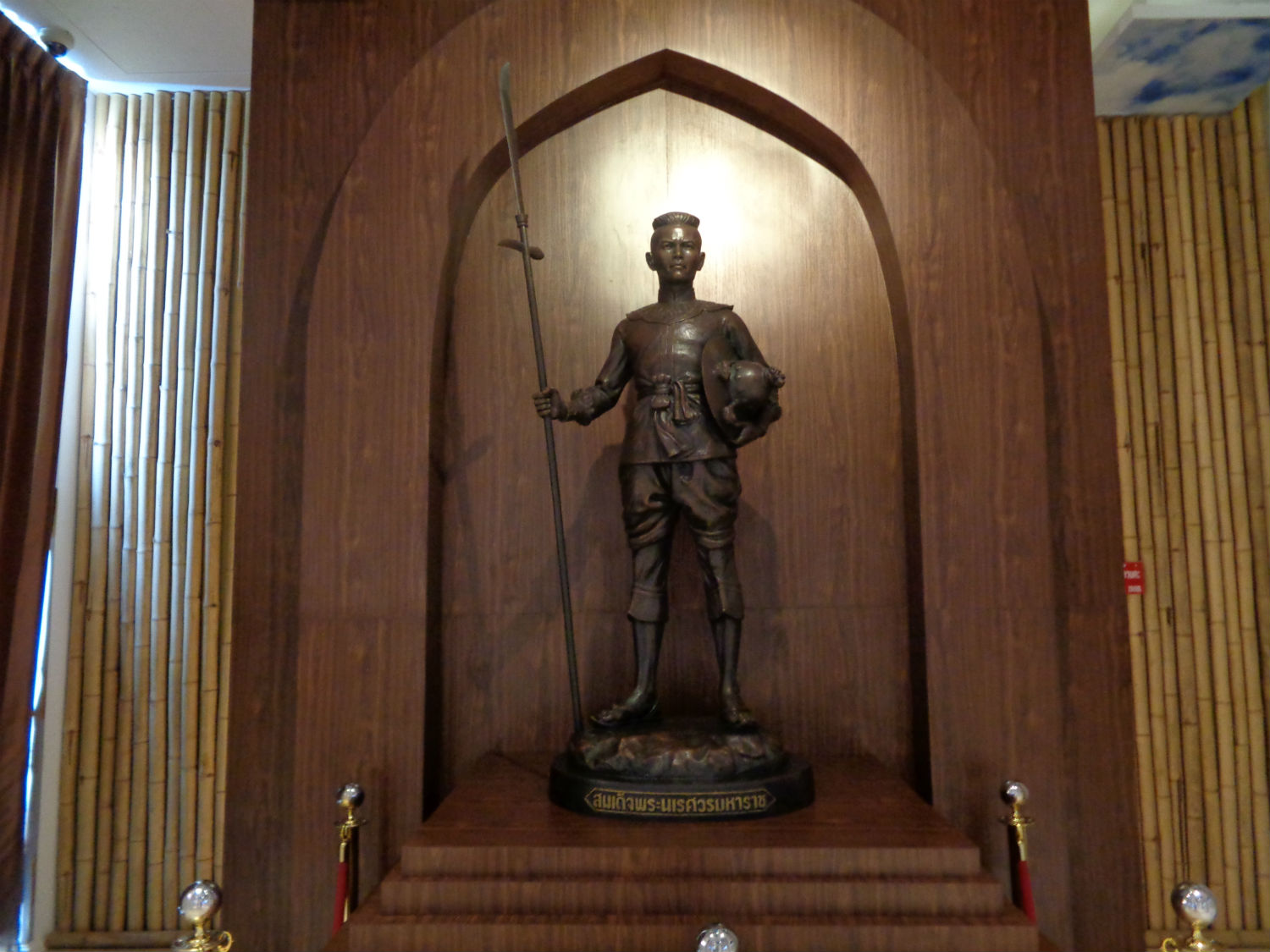 Exhibition Centre
Exhibition Centre Wat Nang Phaya........Returning back across the river we locate Wat Nang Phaya. Built during the reign of Somdej Phra Borom Trai Locanat of Ayutthaya, the temple bears similarity to the architecture of Wat Rajburana, built by the same monarch, who resided in Phitsanulok for 25 years. The famed ‘Phra Nang Phraya’ Buddha images were first found in the cellar of the temple in 1901 and more were found in 1954. One of the five most popular sets of Buddha images nationwide and widely regarded as sacred, they have become much sought after by collectors.
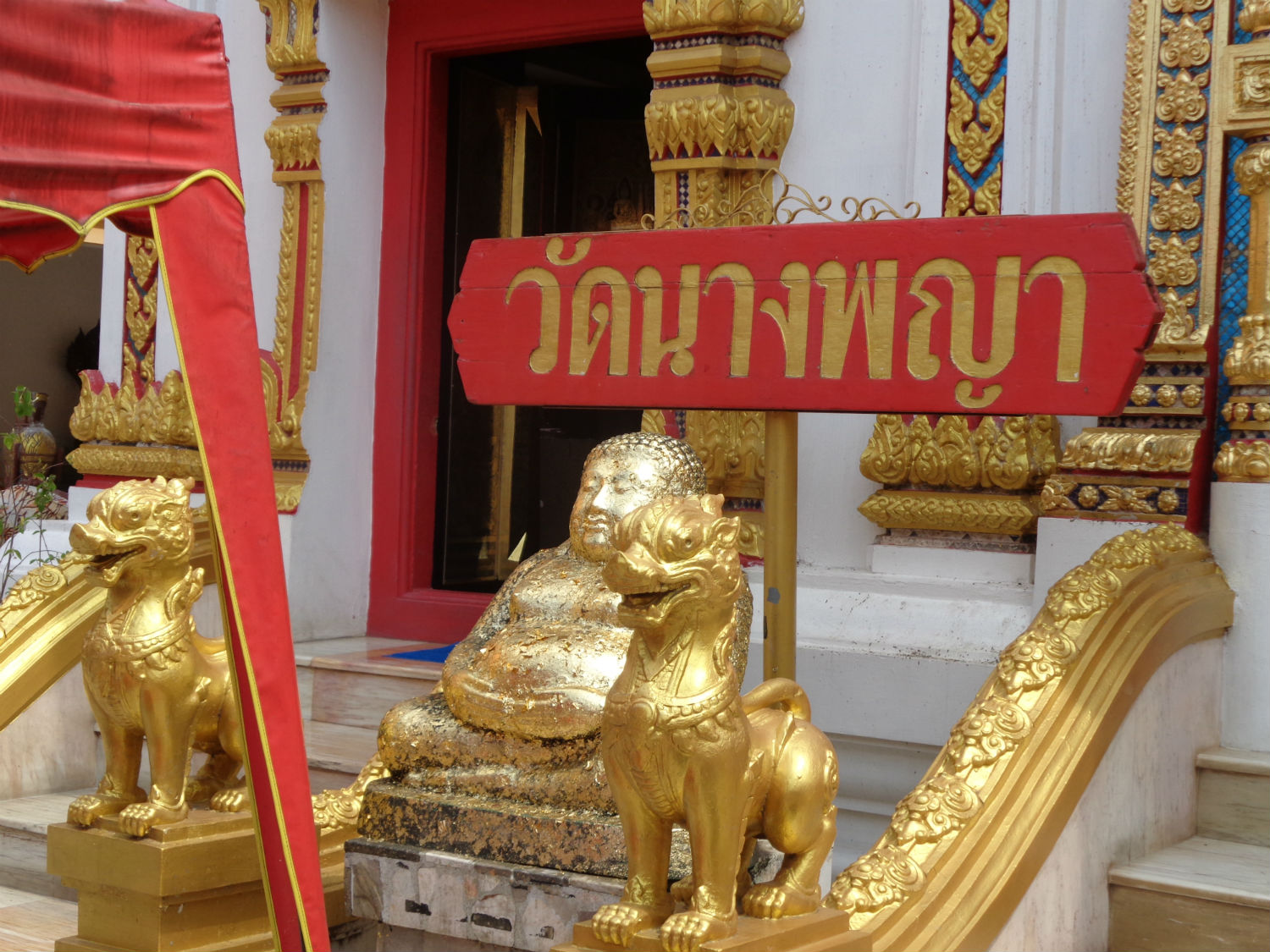
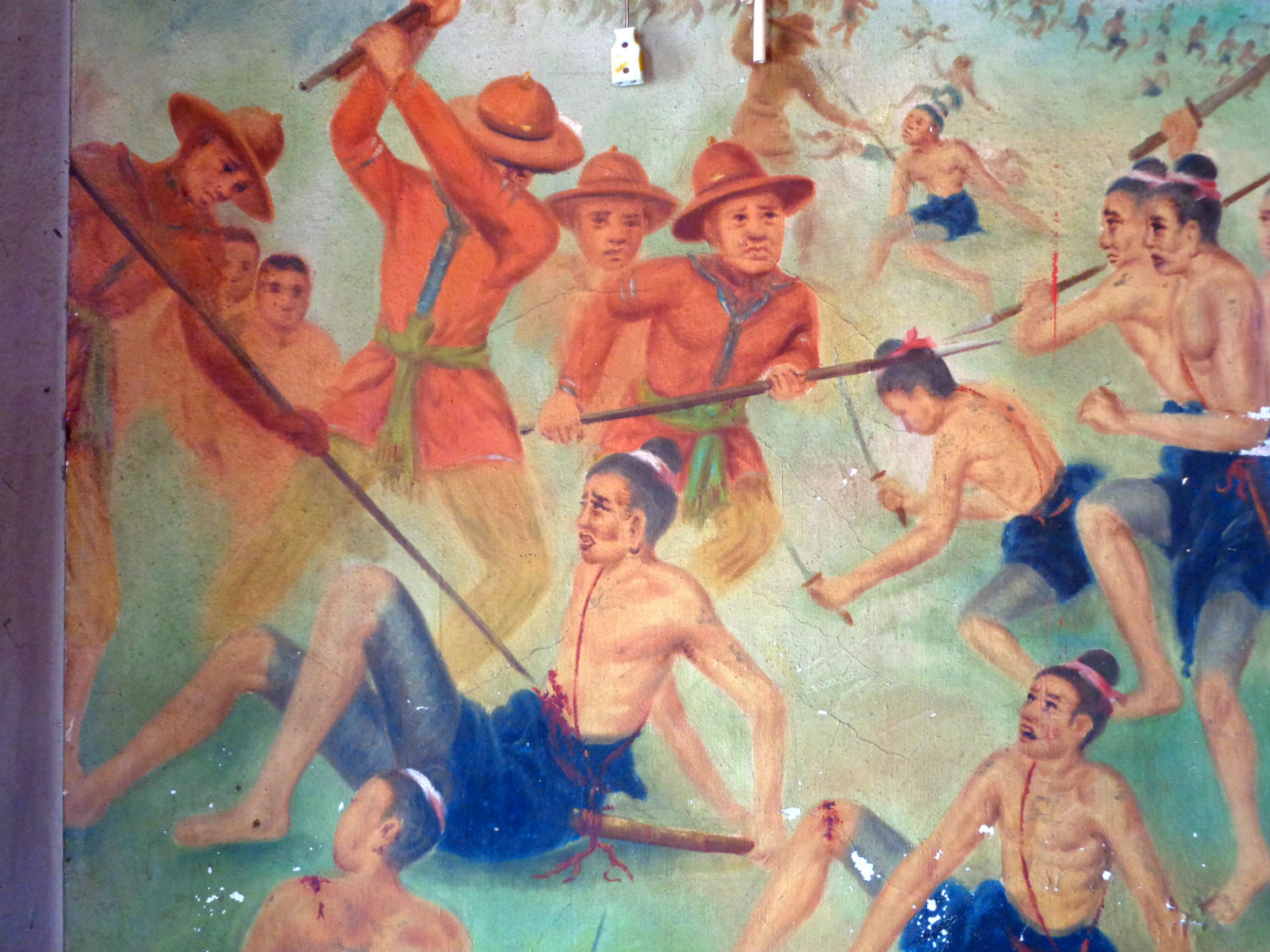
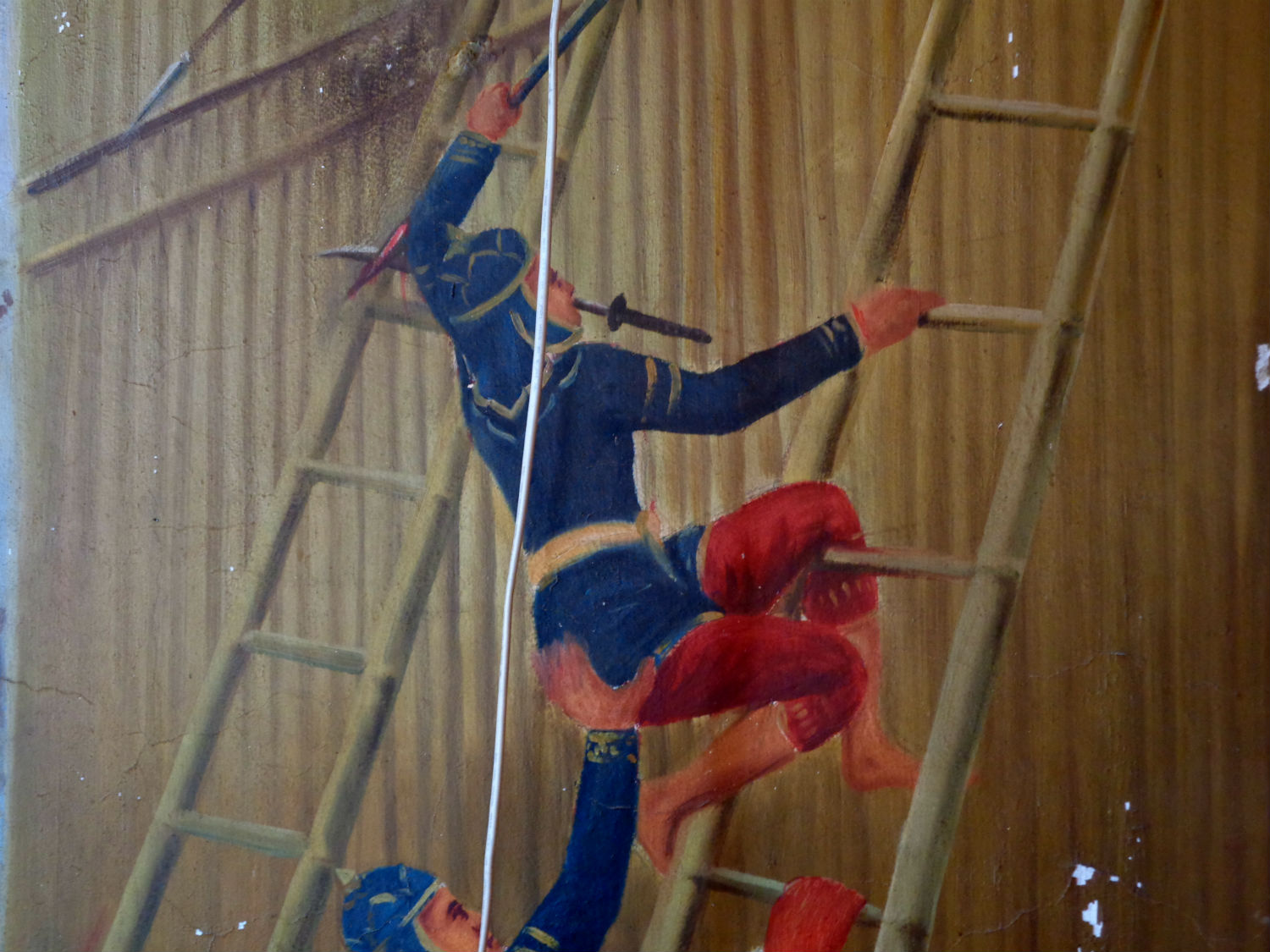
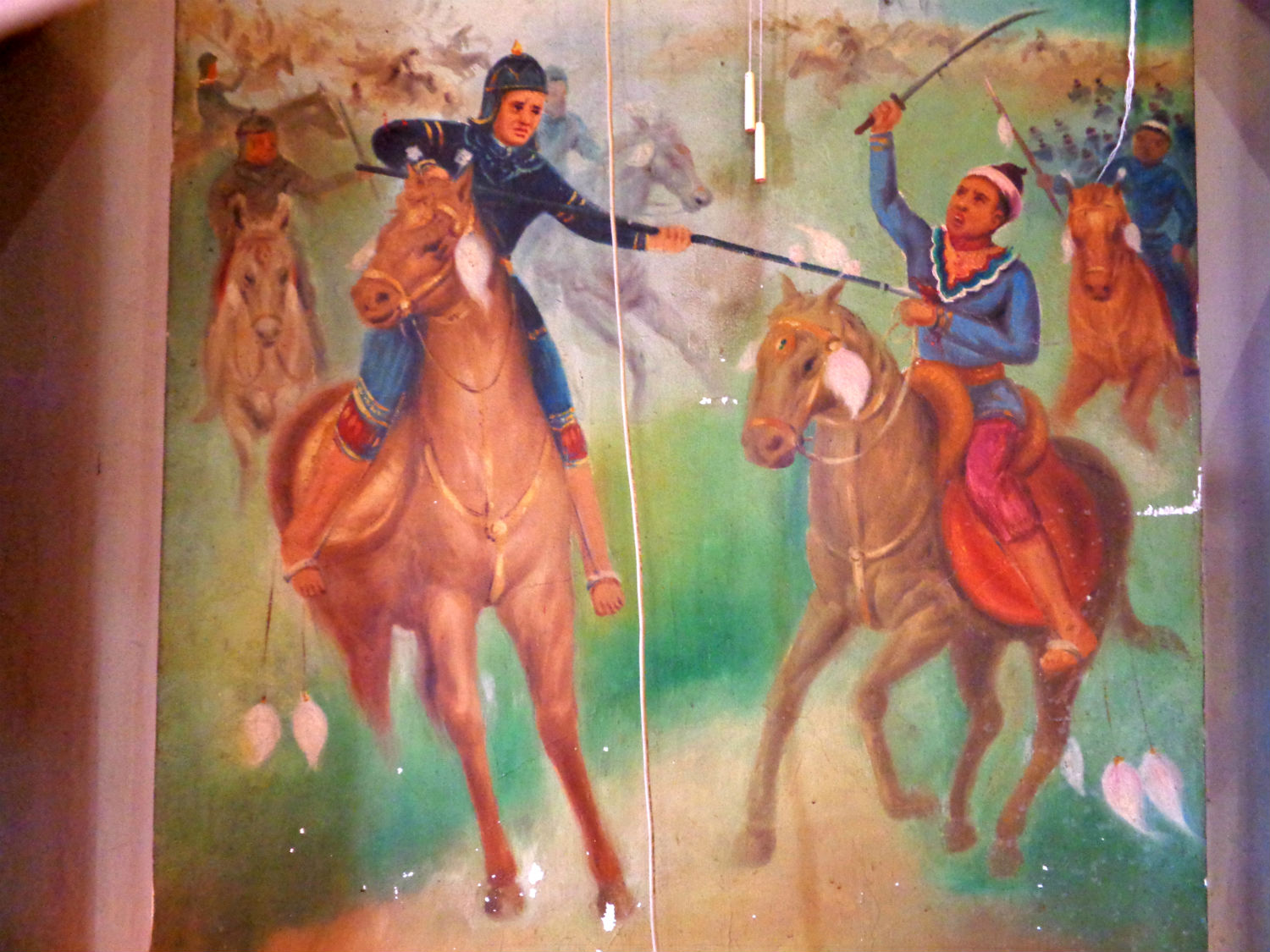
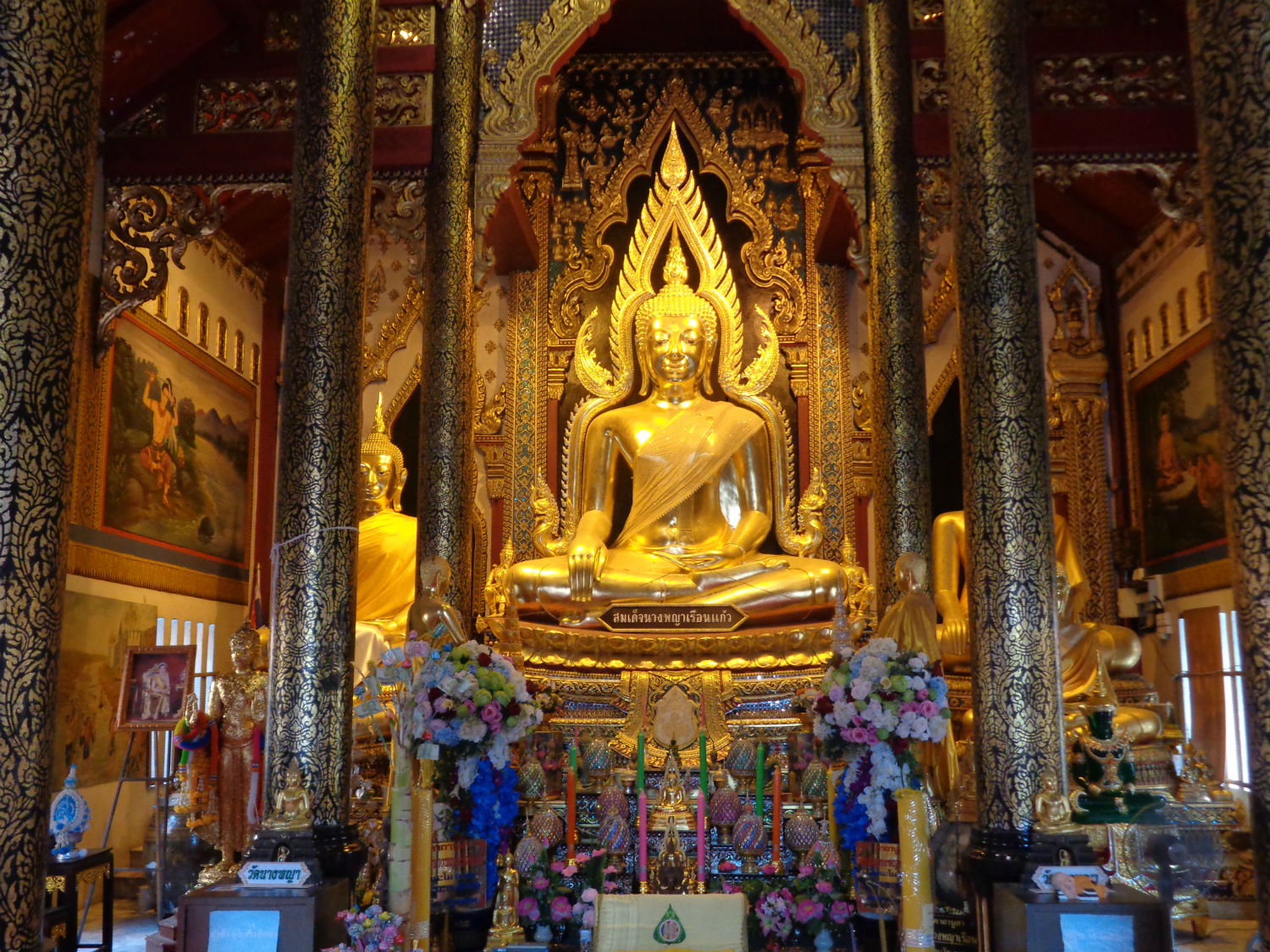
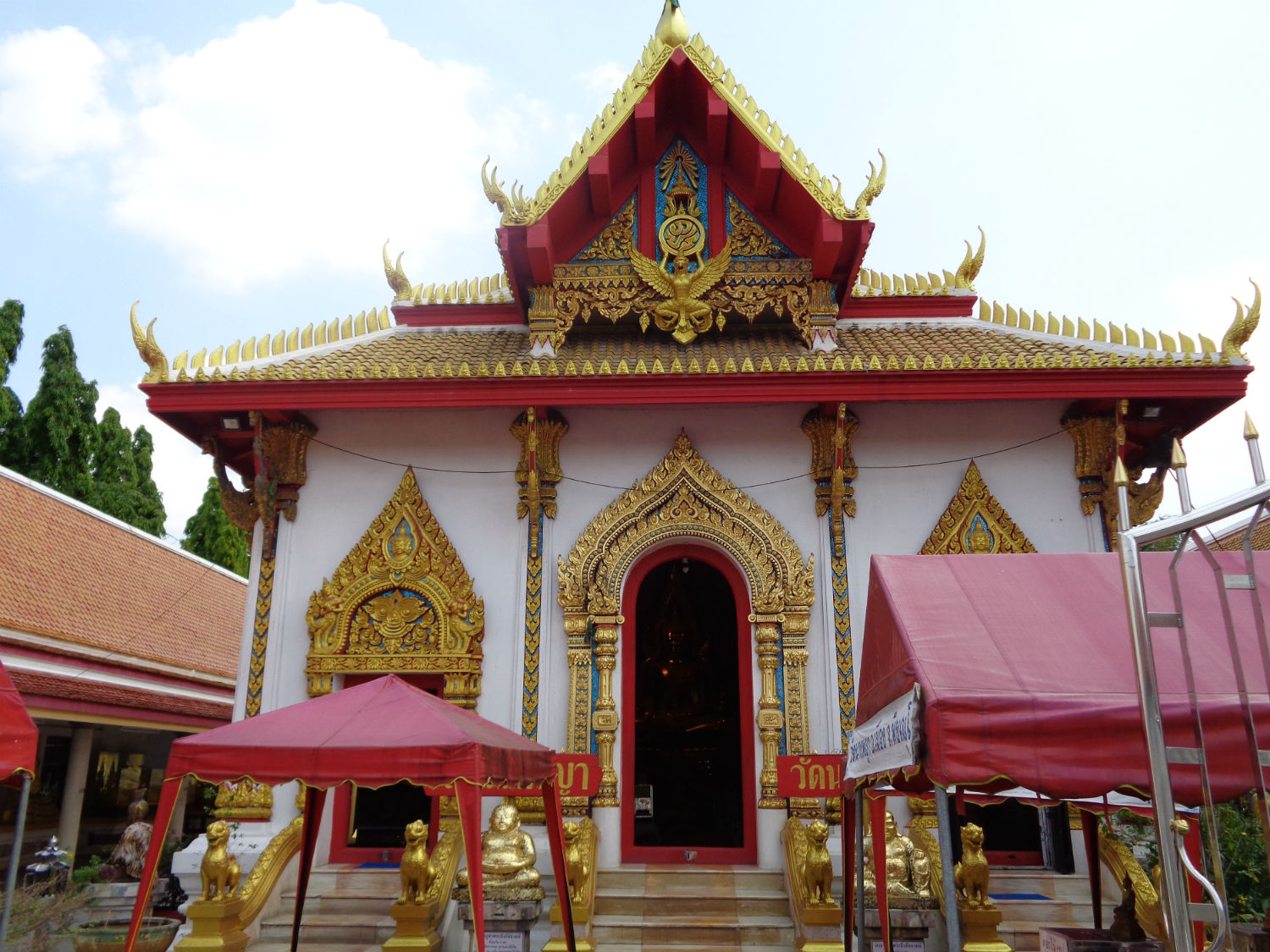 Wat Nang Phaya, Phitsanulok
Wat Nang Phaya, Phitsanulok Phra Mahathamaracha Phra Wisutthikasat Royal Palace........Phra Mahathamaracha Phra Wisutthikasat Royal Palace
is located next to Wat Nang Phraya. The feature of this palace is the standing statues of the royal family with King Naresuan himself and including his younger brother Ekathotsarot, known as the "White Prince", and an elder sister, Suphankanlaya, their combined effort sufficient to expel the Burmese and declare independence for the nation.
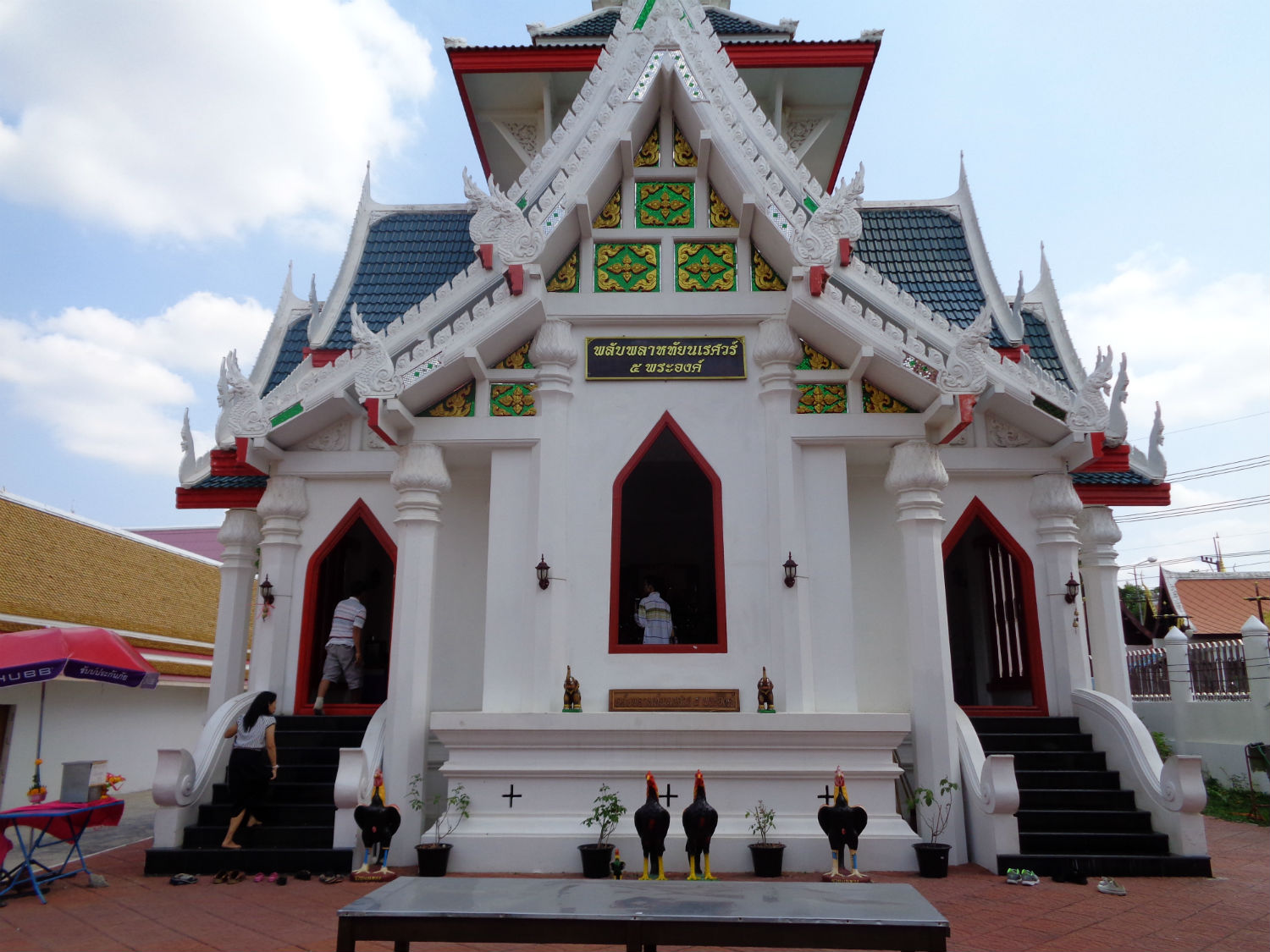
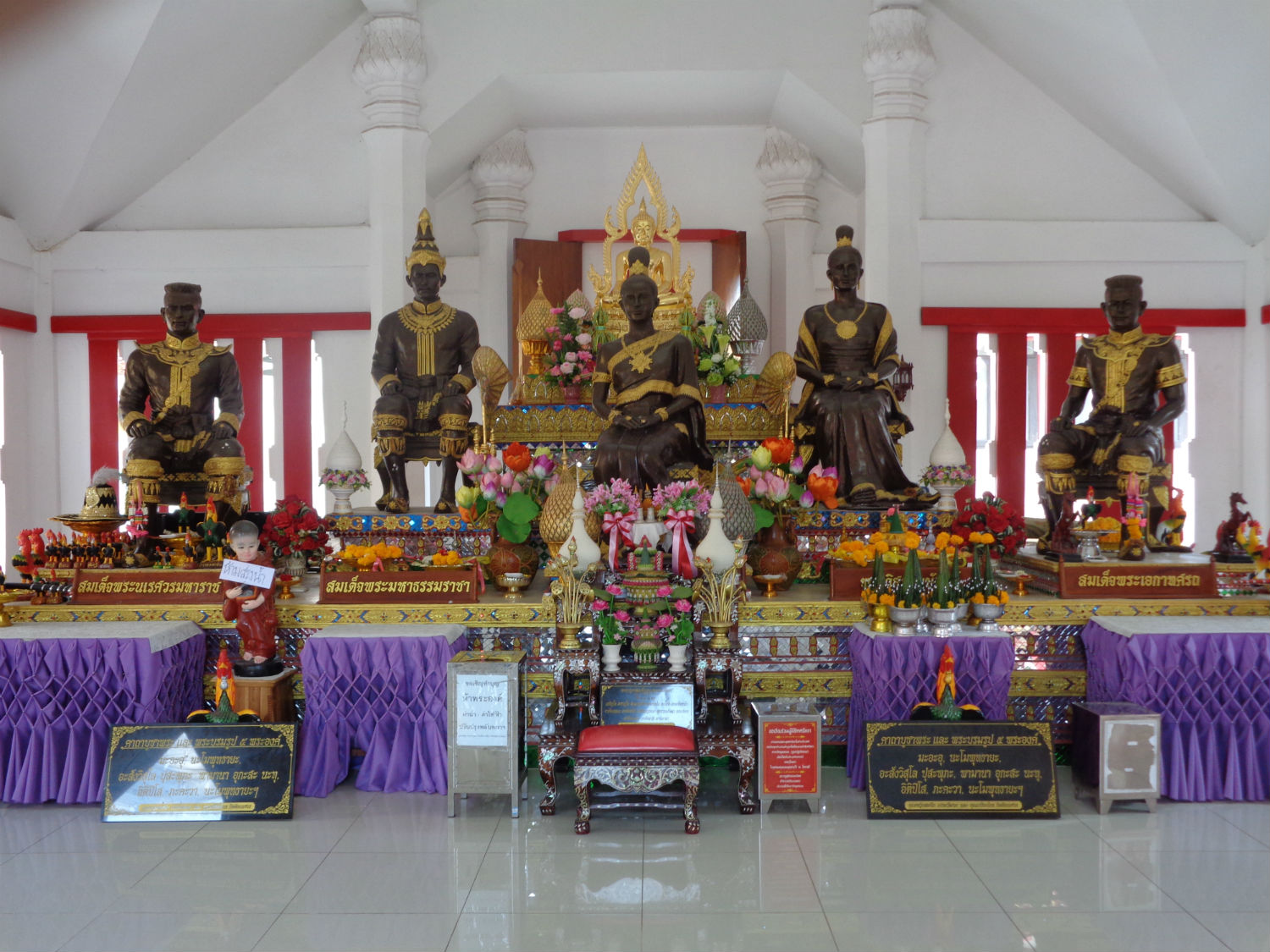
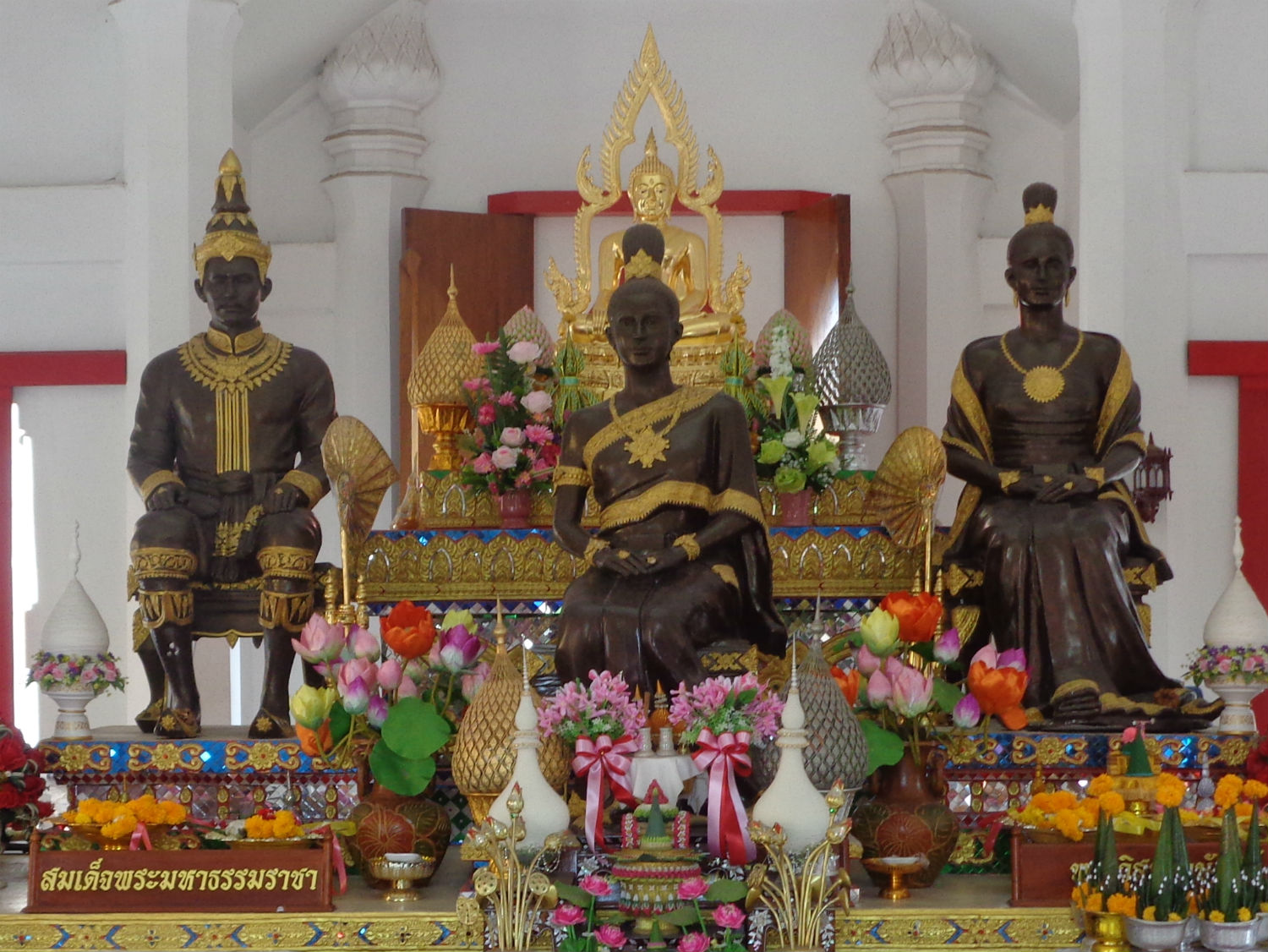 Phra Mahathamaracha Phra Wisutthikasat Royal Palace, Phitsanulok
Phra Mahathamaracha Phra Wisutthikasat Royal Palace, Phitsanulok Town Wall and moat........The City Walls and Moats of Phitsanulok were constructed in the Ayutthaya era by King Borom Trailokanat. The walls were constructed from brick and clay, similar to the Sukhothai era’s construction to prevent attacks from the Lanna and Burmese kingdoms. The city walls were destroyed during King Rama I of the Rattanakosin era and were demolished to prevent enemies from using the walls as shelter. The best evidence of what remains is located near the river at Wat Poethiyan.
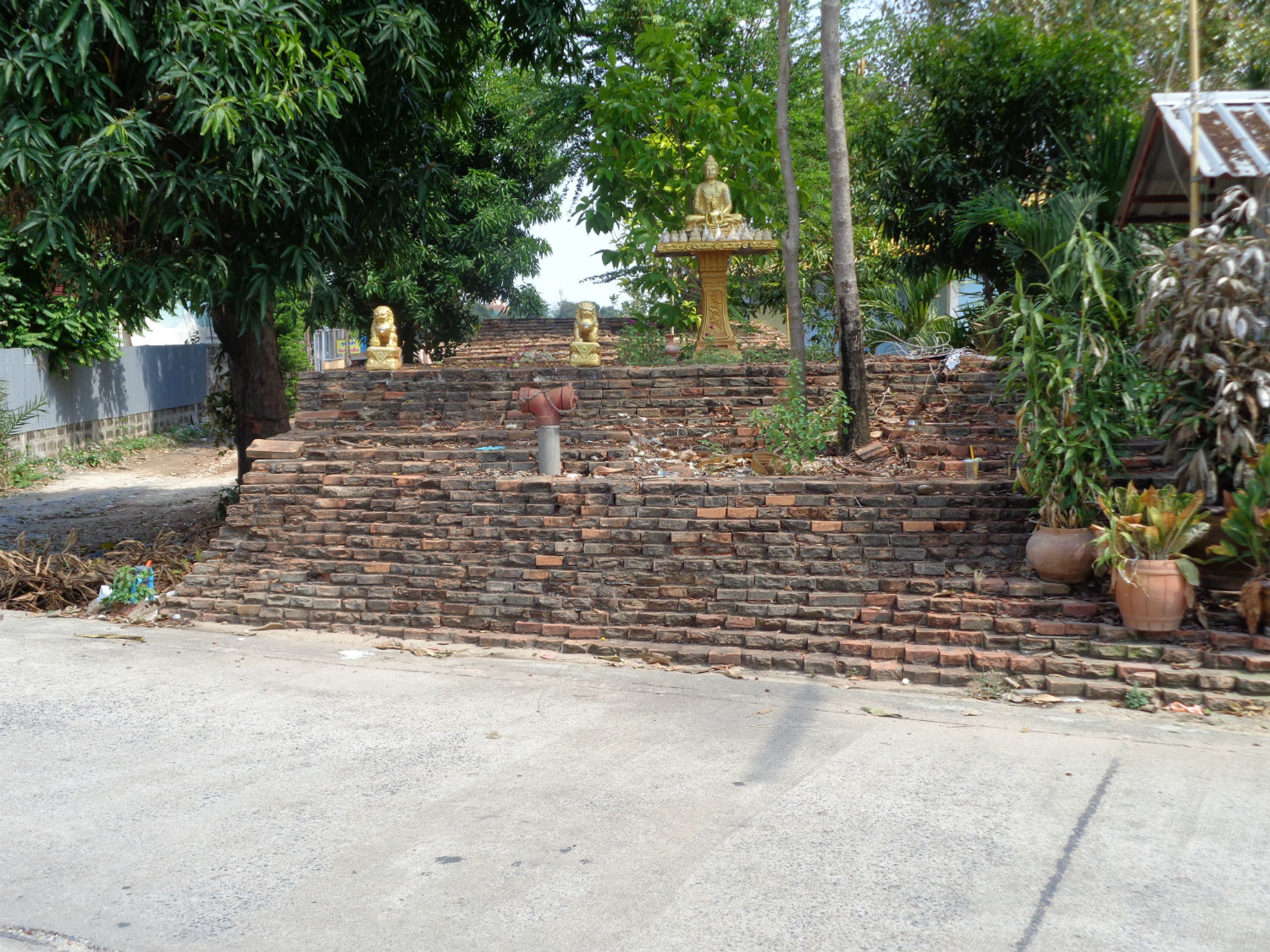
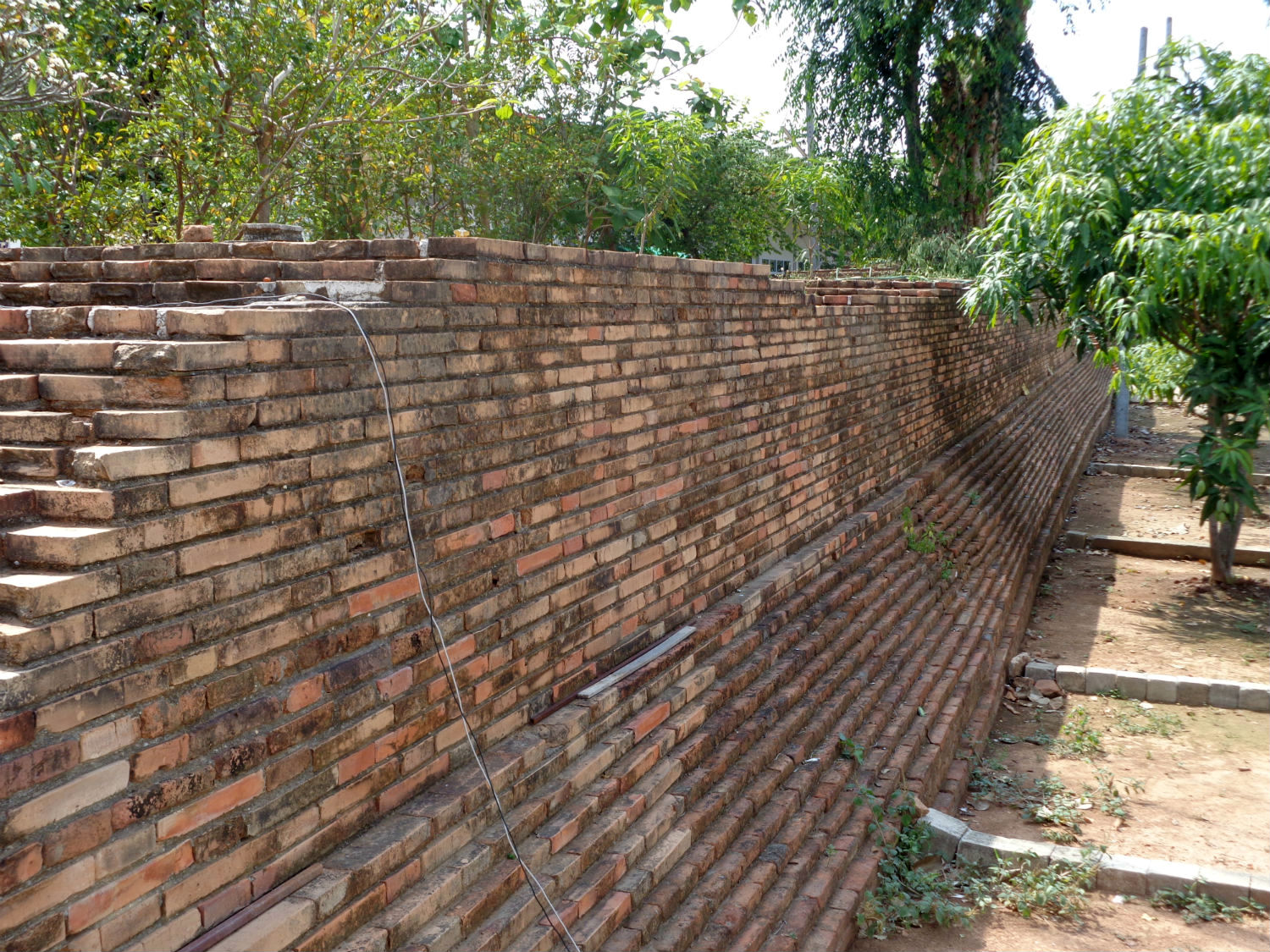
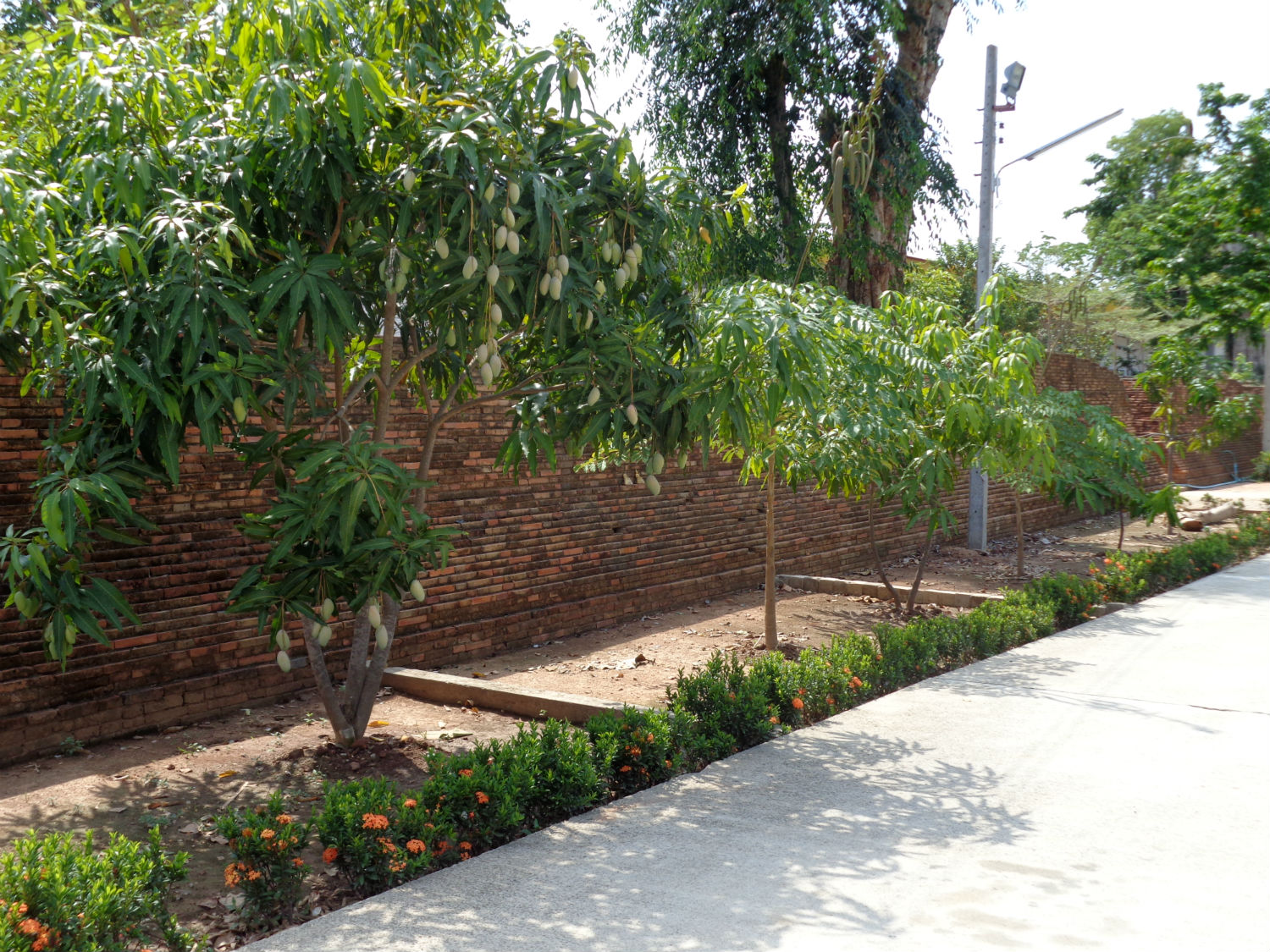
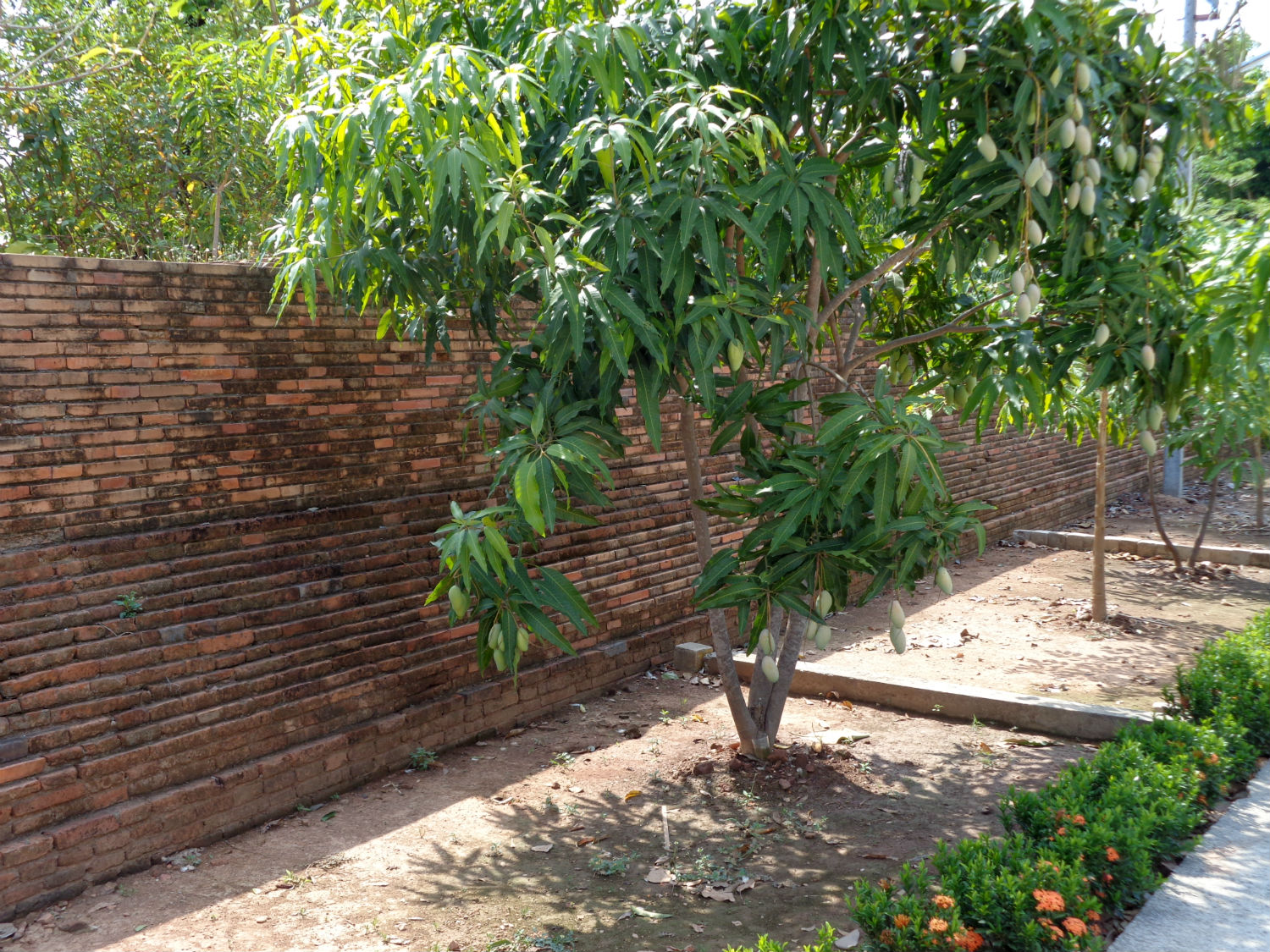
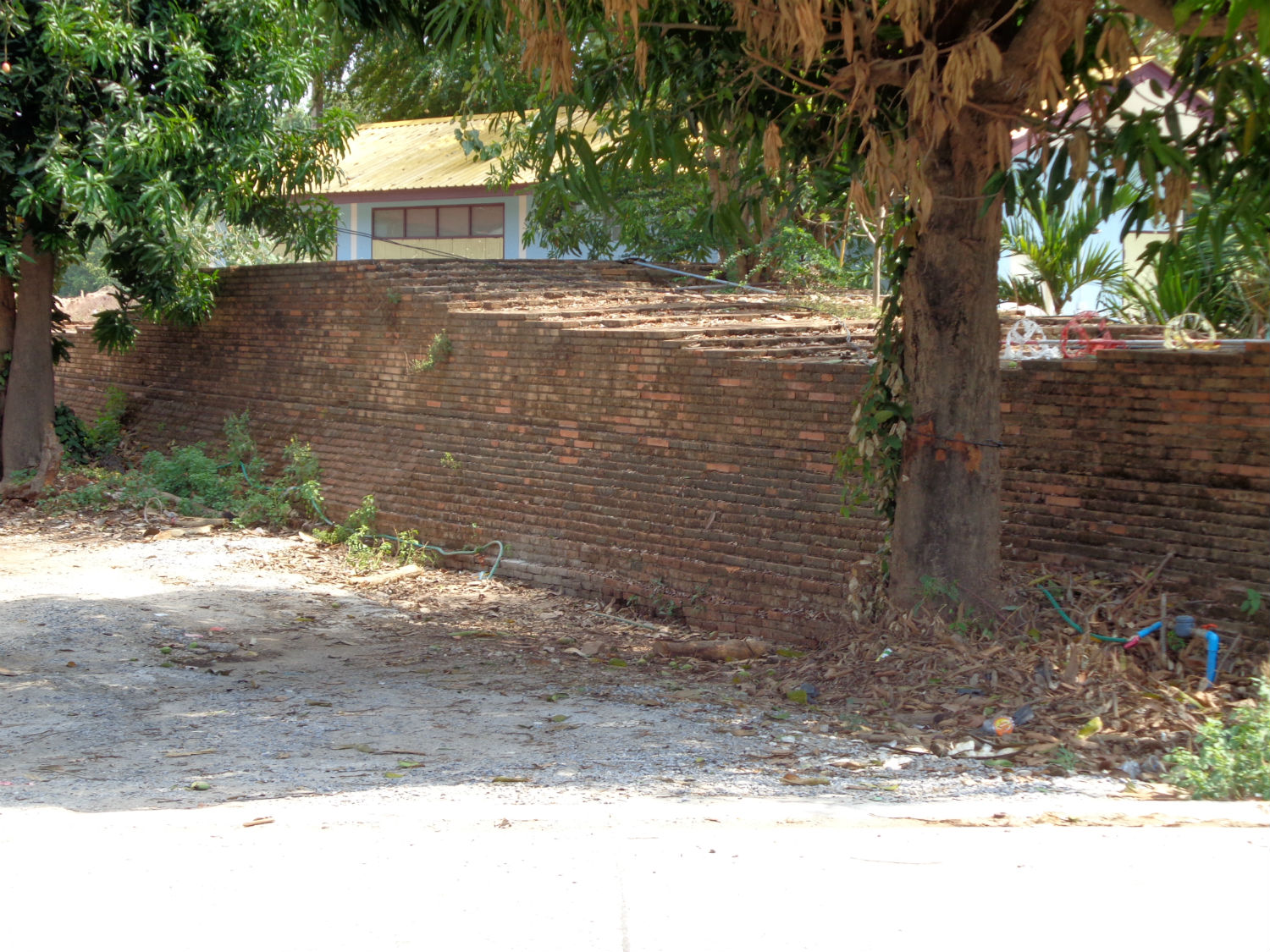
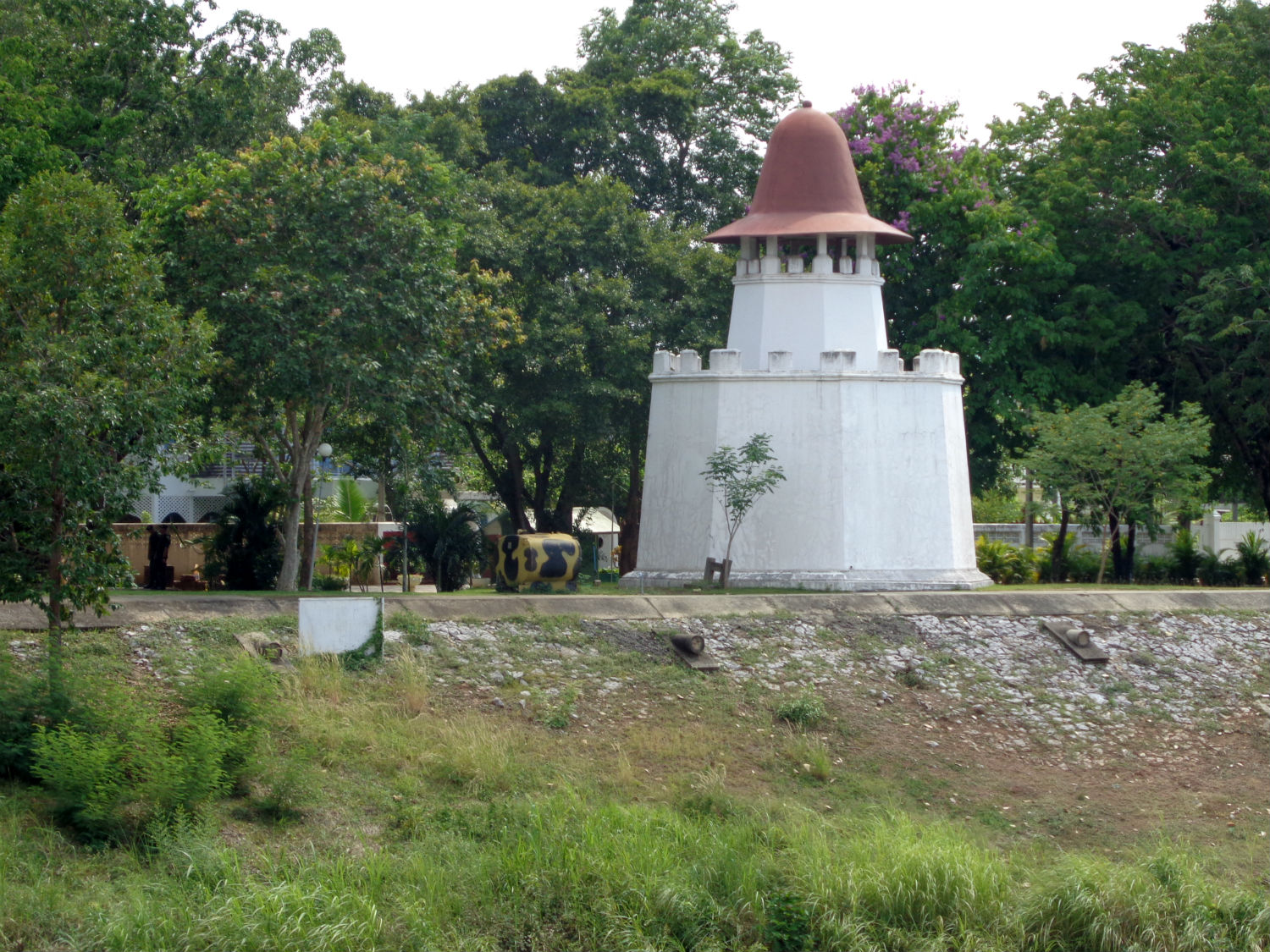 Town Wall and Moat, Phitsanulok
Town Wall and Moat, Phitsanulok Wat Poethiyan........
Wat Poethiyan is a working temple located near the Nan River. A floating platform moored at the water’s edge allows visitors to feed the catfish as a ritual offering to the temple. The temple also encloses the ruins of a small brick chedi and viharn where there are also Buddha images in ruin.
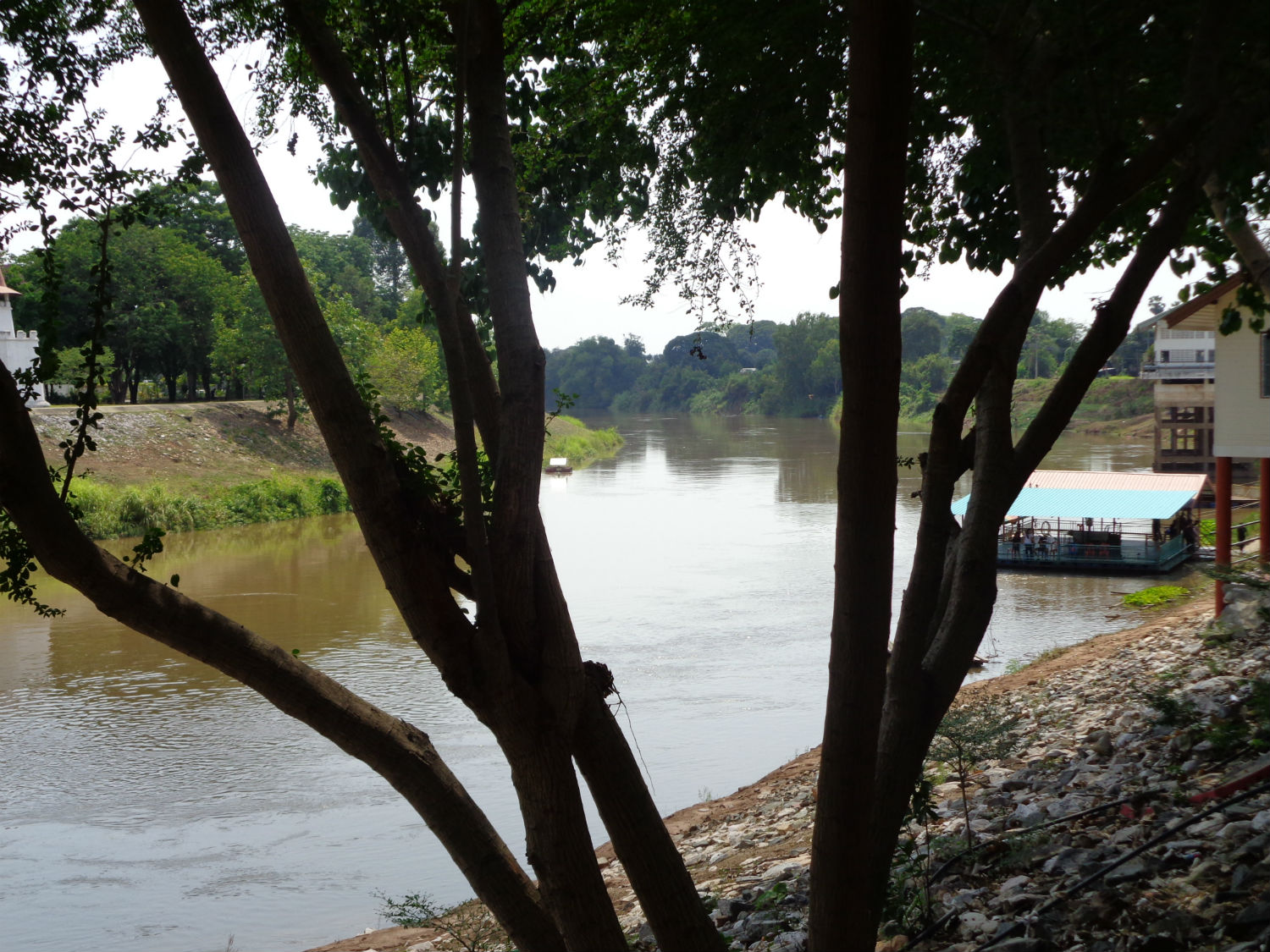
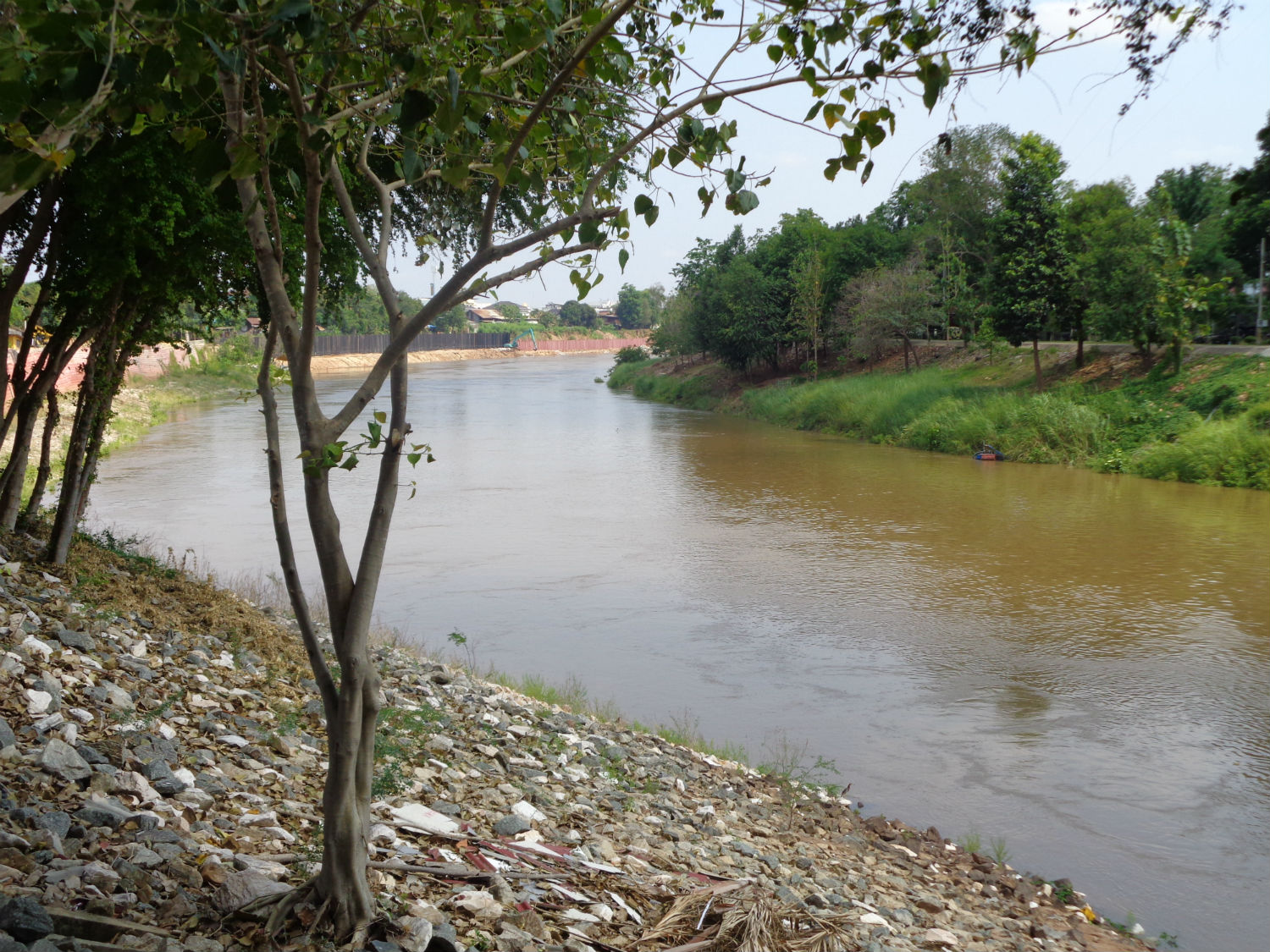
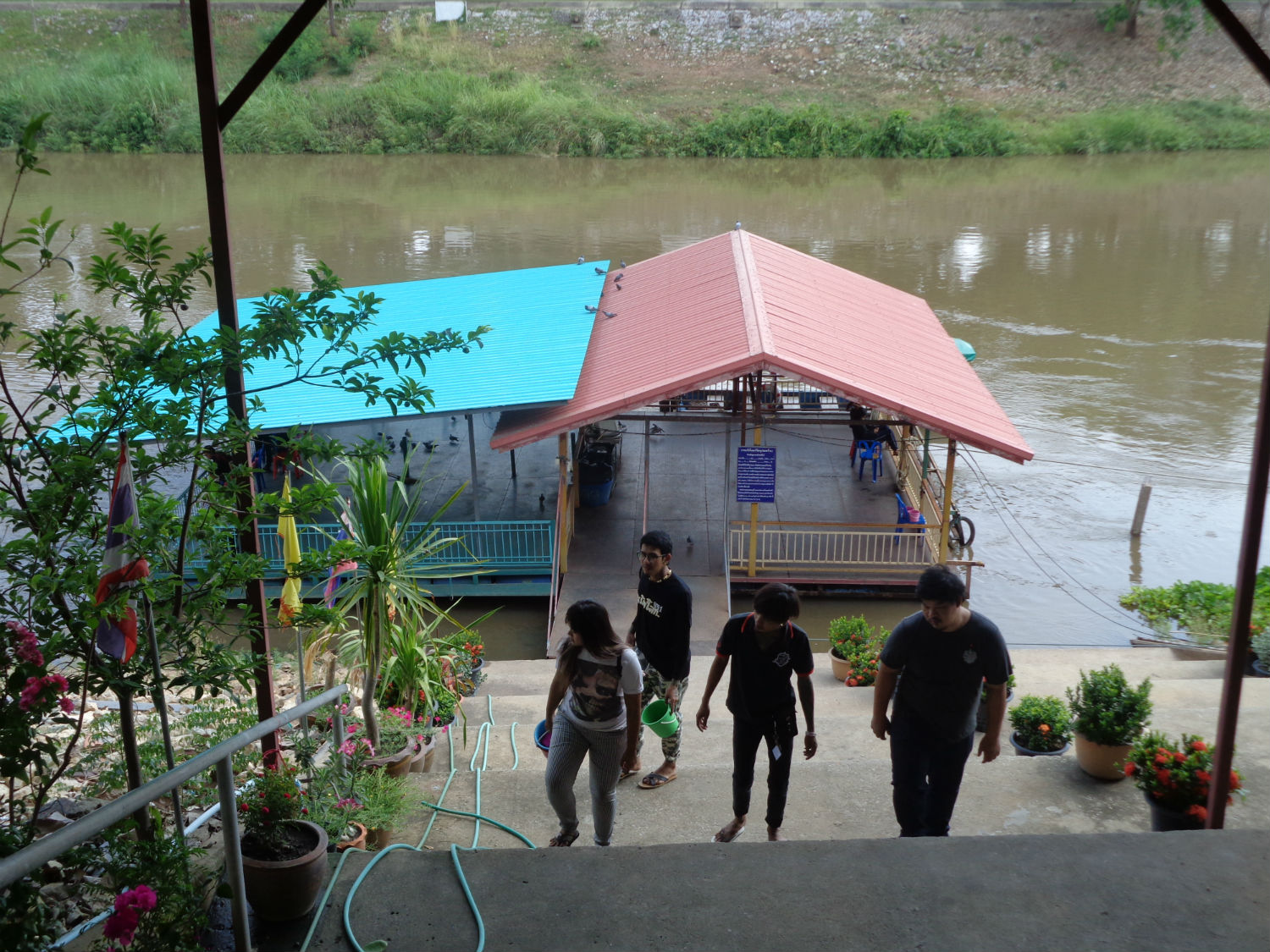
Nan River at Wat Poethiyan, Phitsanulok
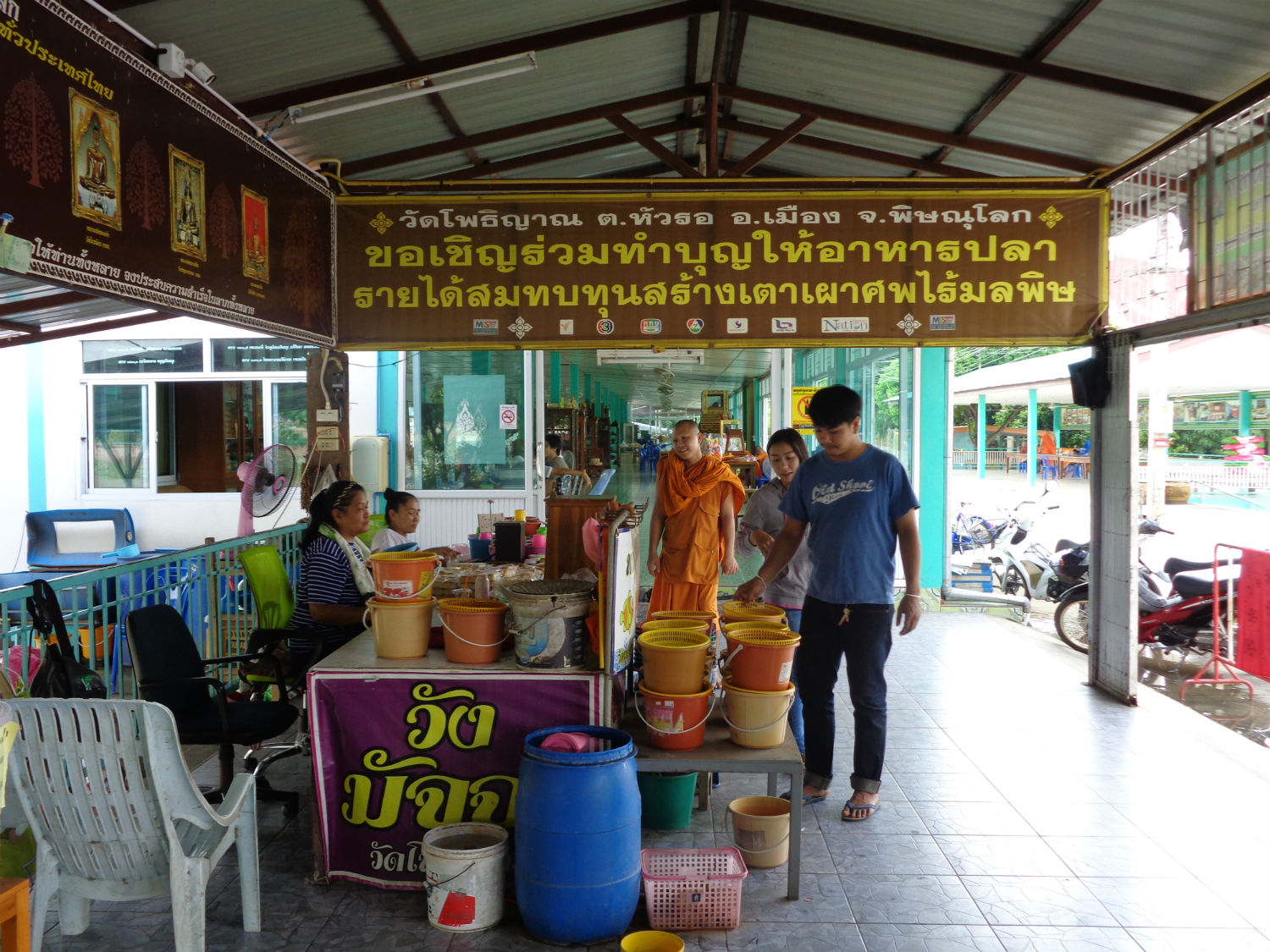
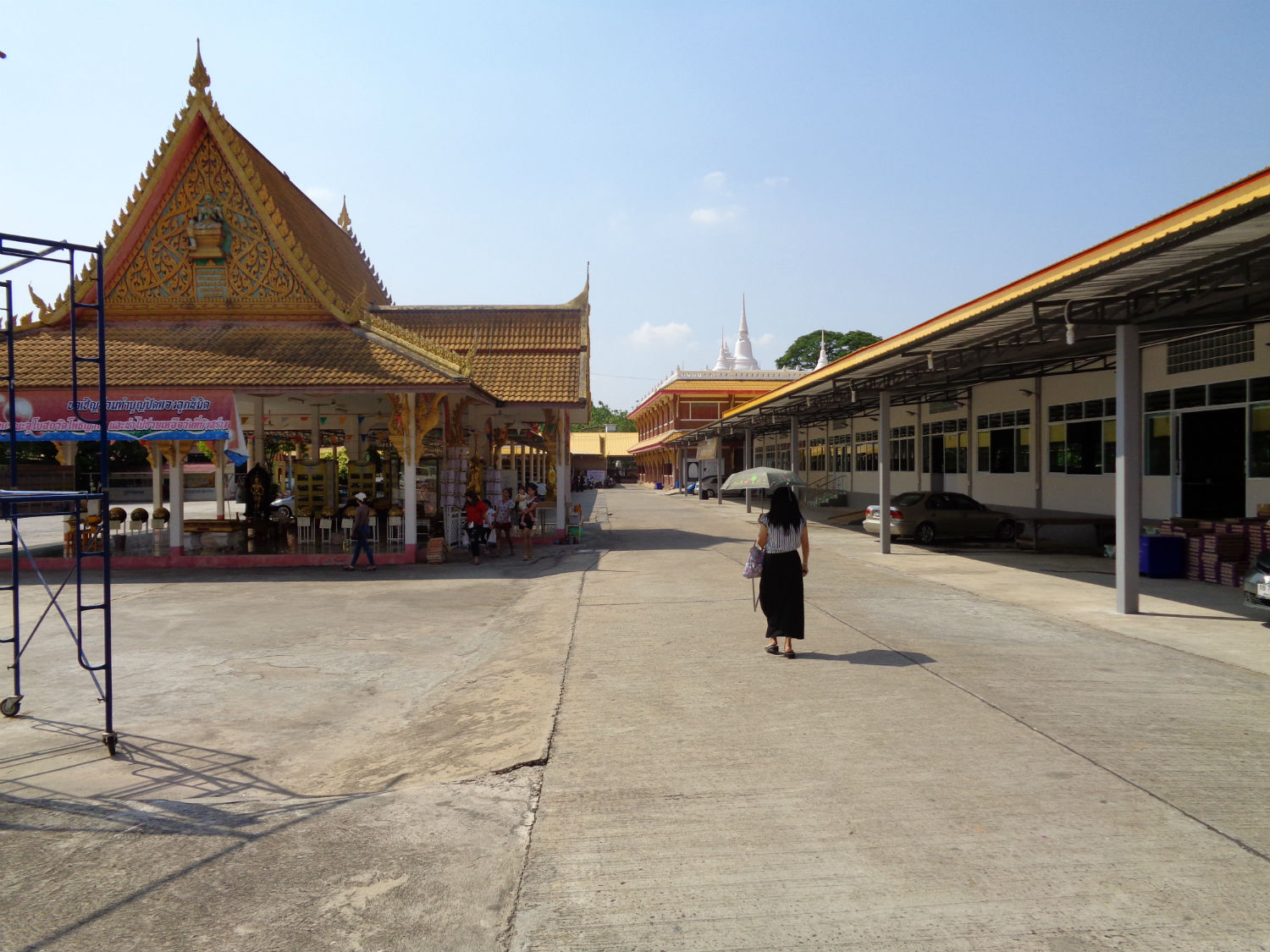
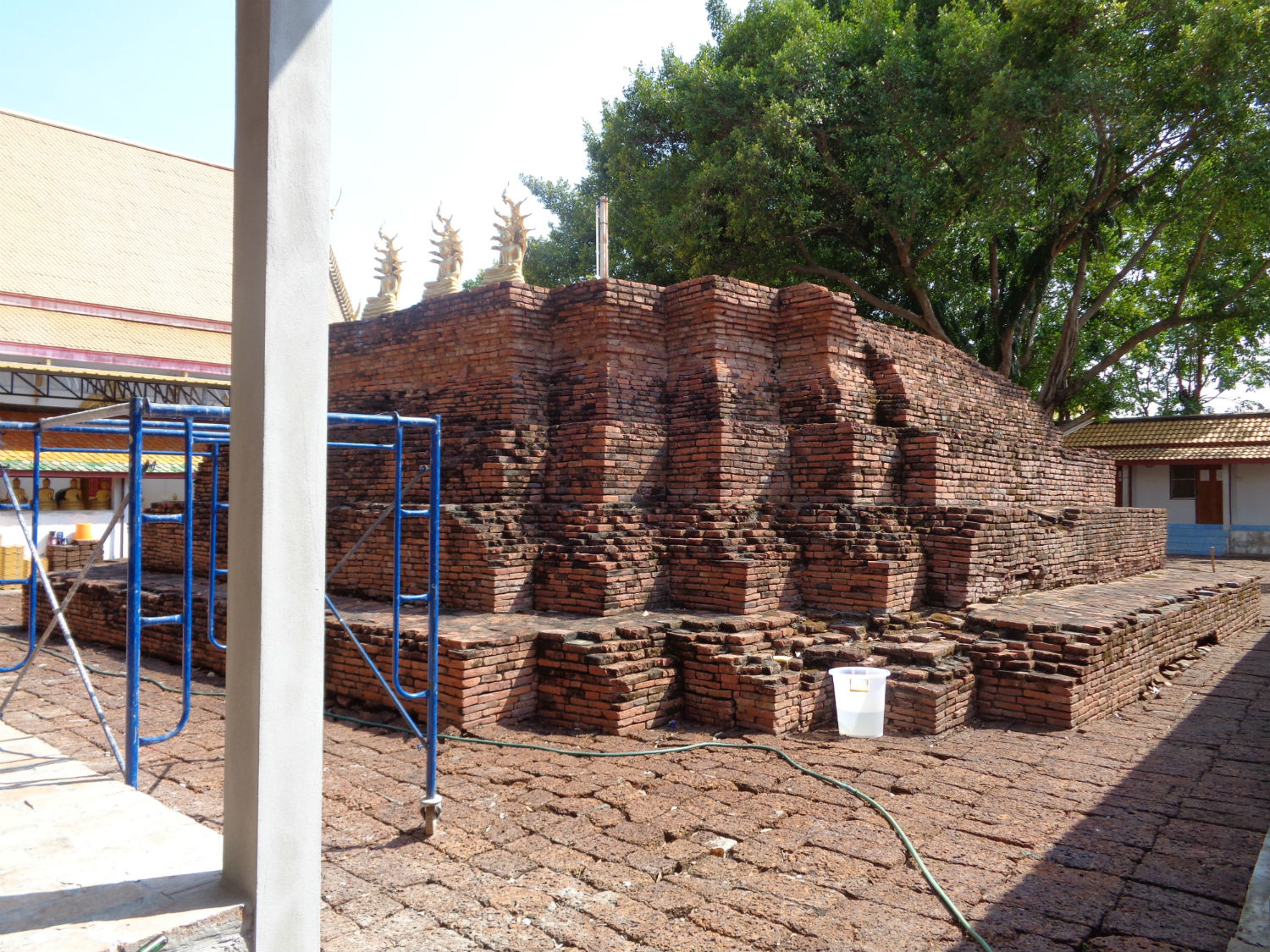
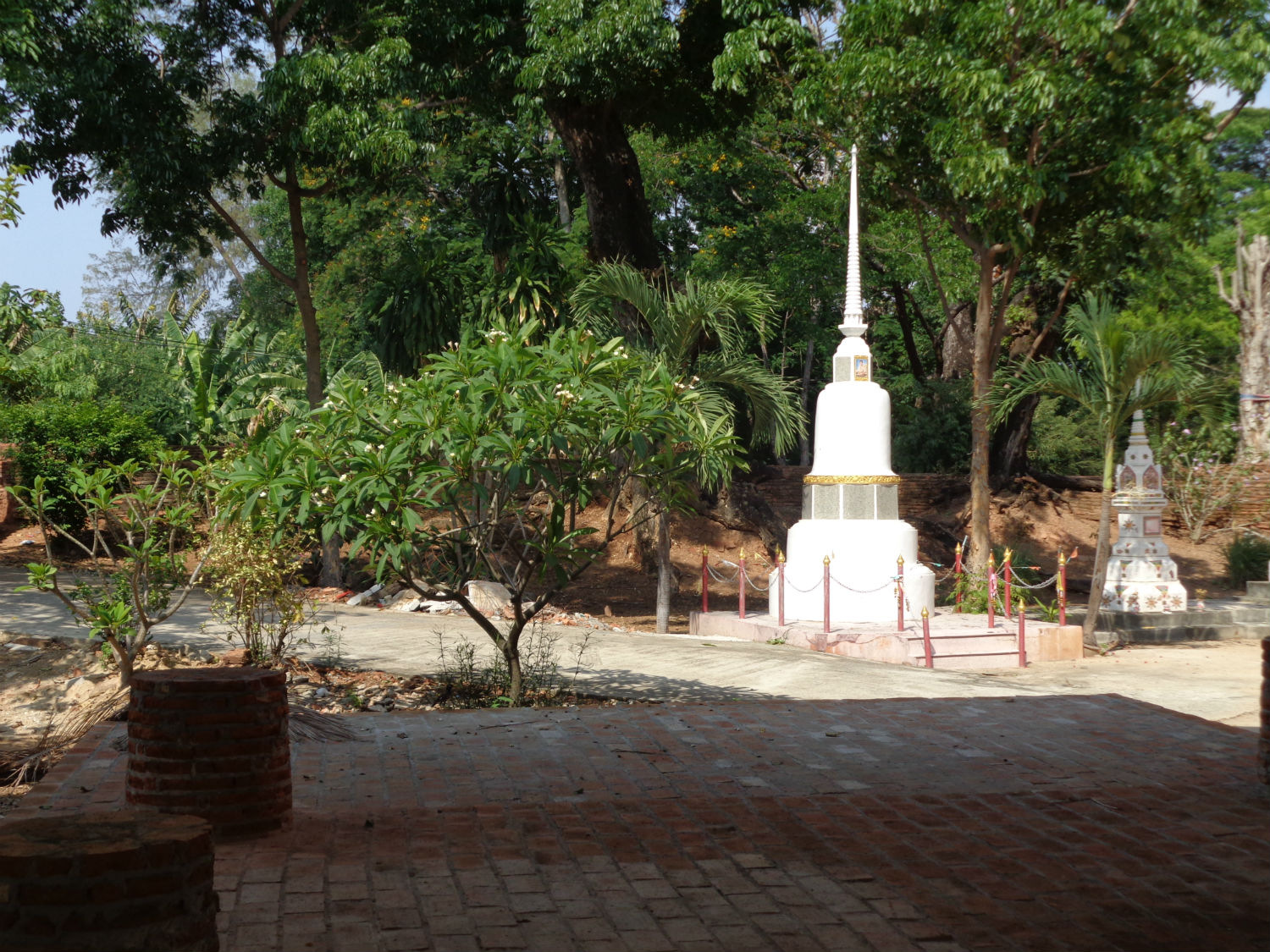
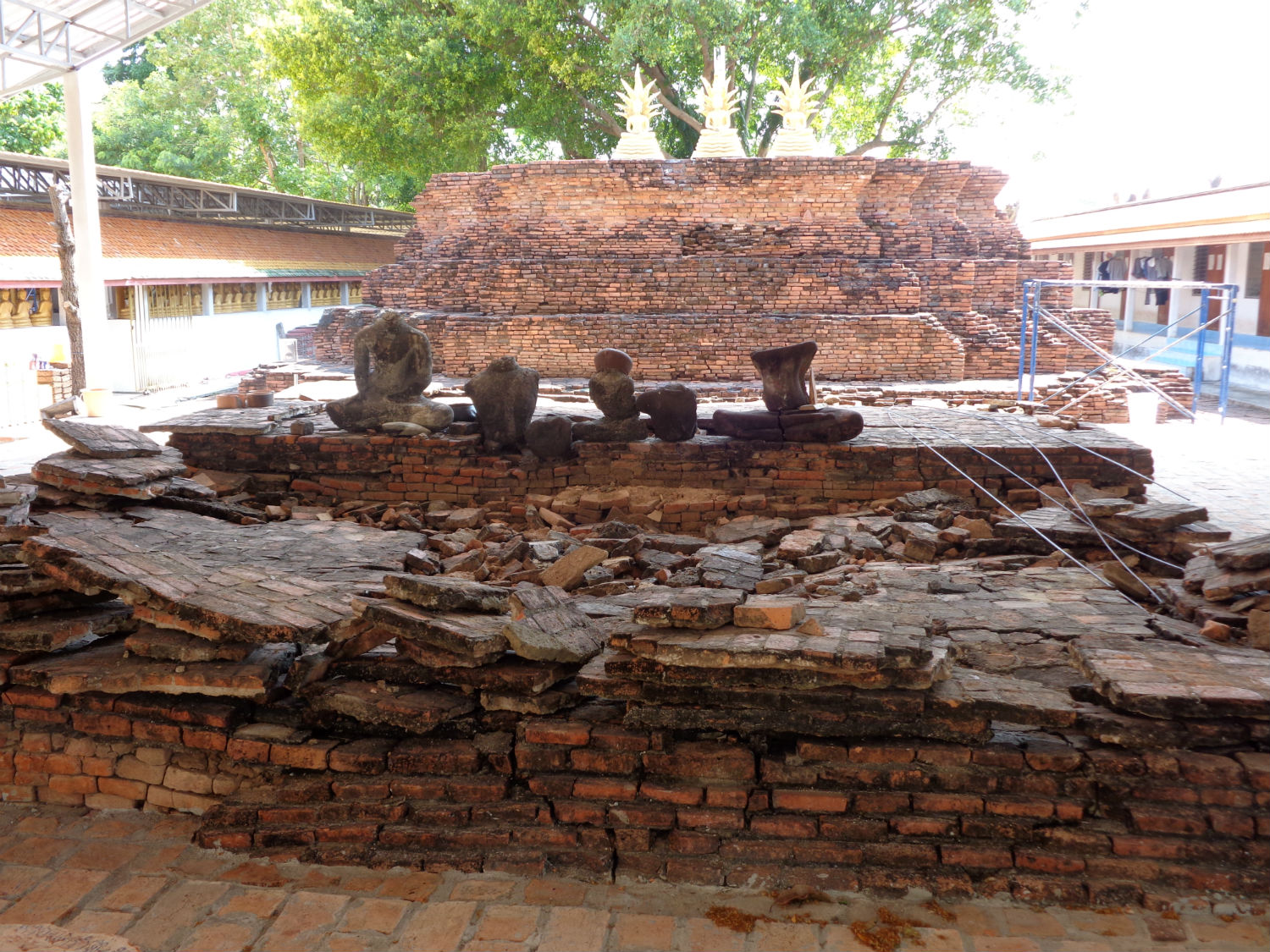
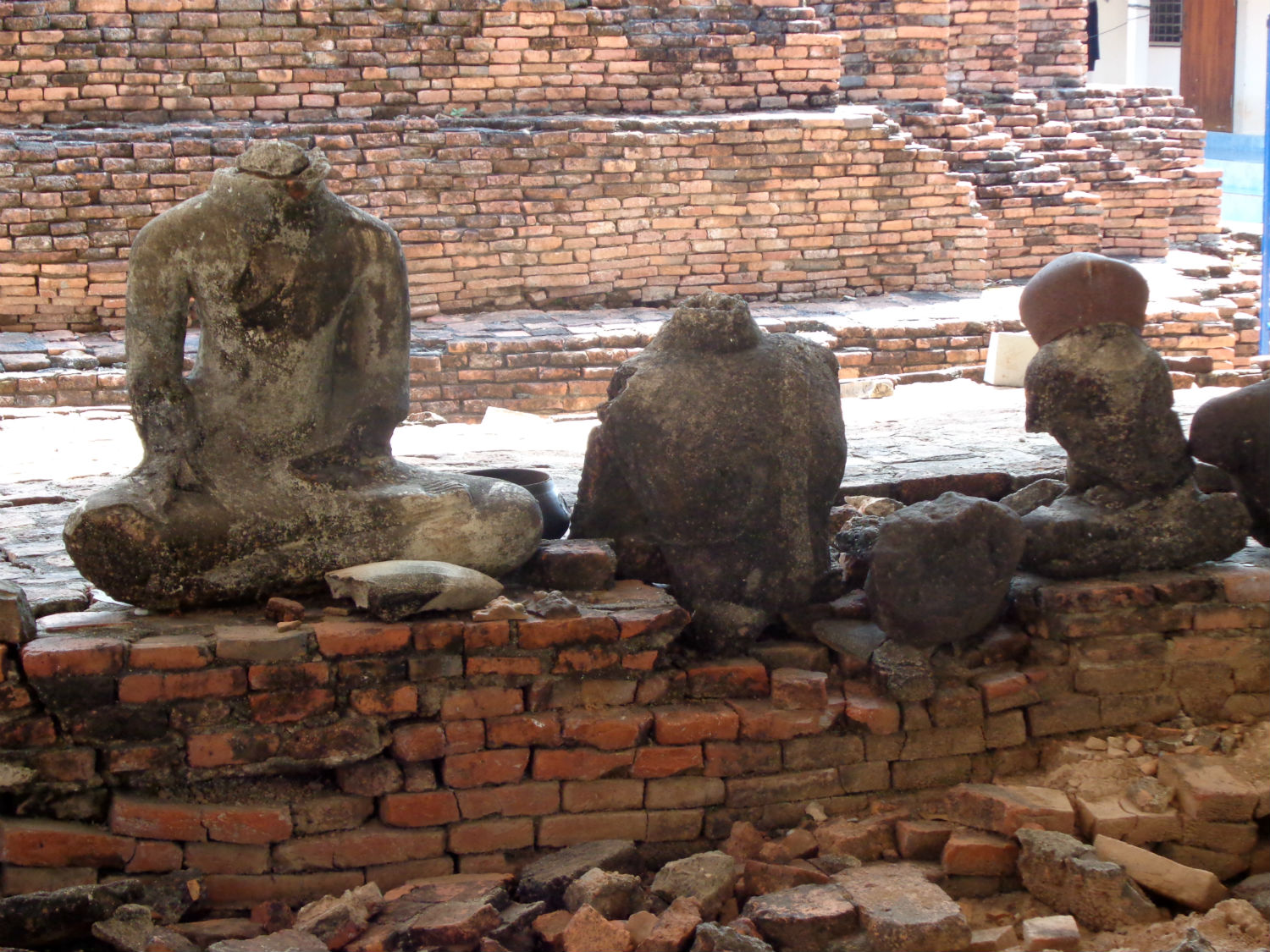 Wat Poethiyan, Phitsanulok
Wat Poethiyan, Phitsanulok Wat Chedi Yot Thong........Wat Chedi Yot Thong is situated outside Muang Phitsanulok city wall not far from Wat Aranyik. There is no evidence to show exactly when the temple was built but by design it looks like this temple was constructed during Phra Maha Thammaraja I (Phraya Lithai) period as Phraya Lithai took power over Phitsanulok in the seven years between 1362-1369. Later in Sukhothai period, the temple was renovated then again in the Ayutthaya and Rattanakosin periods. The main chedi is lotus shaped showing signs of modification over time.
Wat Aranyik........Wat Aranyik was constructed during the Sukhothai period. In the temple grounds, there is a working temple with a monastery and temple buildings while in the large area of original temple grounds are an historic chedi and a number of Buddha images. A unique feature of the temple is that it is surrounded by moats.
Wat Aranyik........Wat Aranyik was constructed during the Sukhothai period. In the temple grounds, there is a working temple with a monastery and temple buildings while in the large area of original temple grounds are an historic chedi and a number of Buddha images. A unique feature of the temple is that it is surrounded by moats.
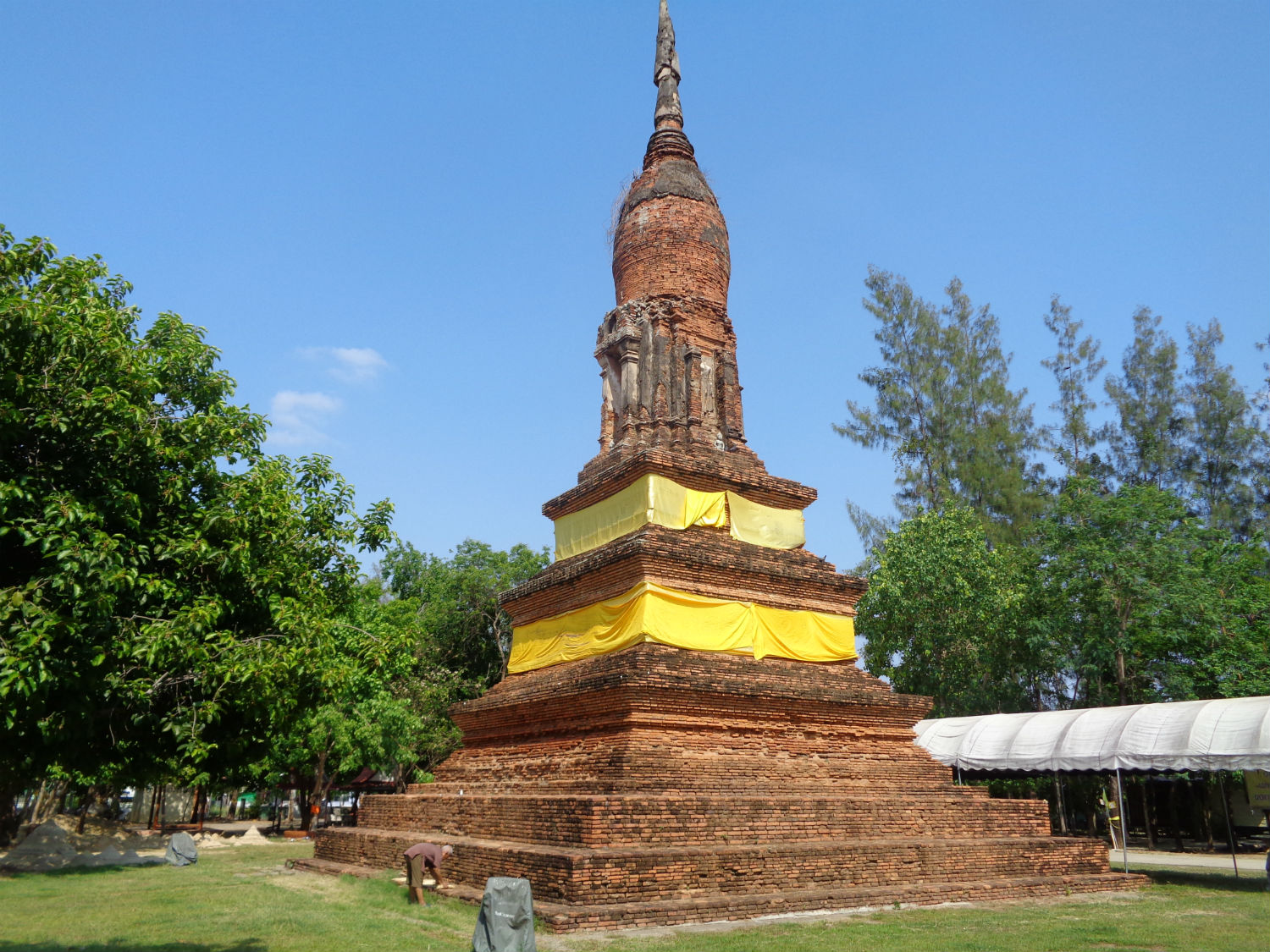
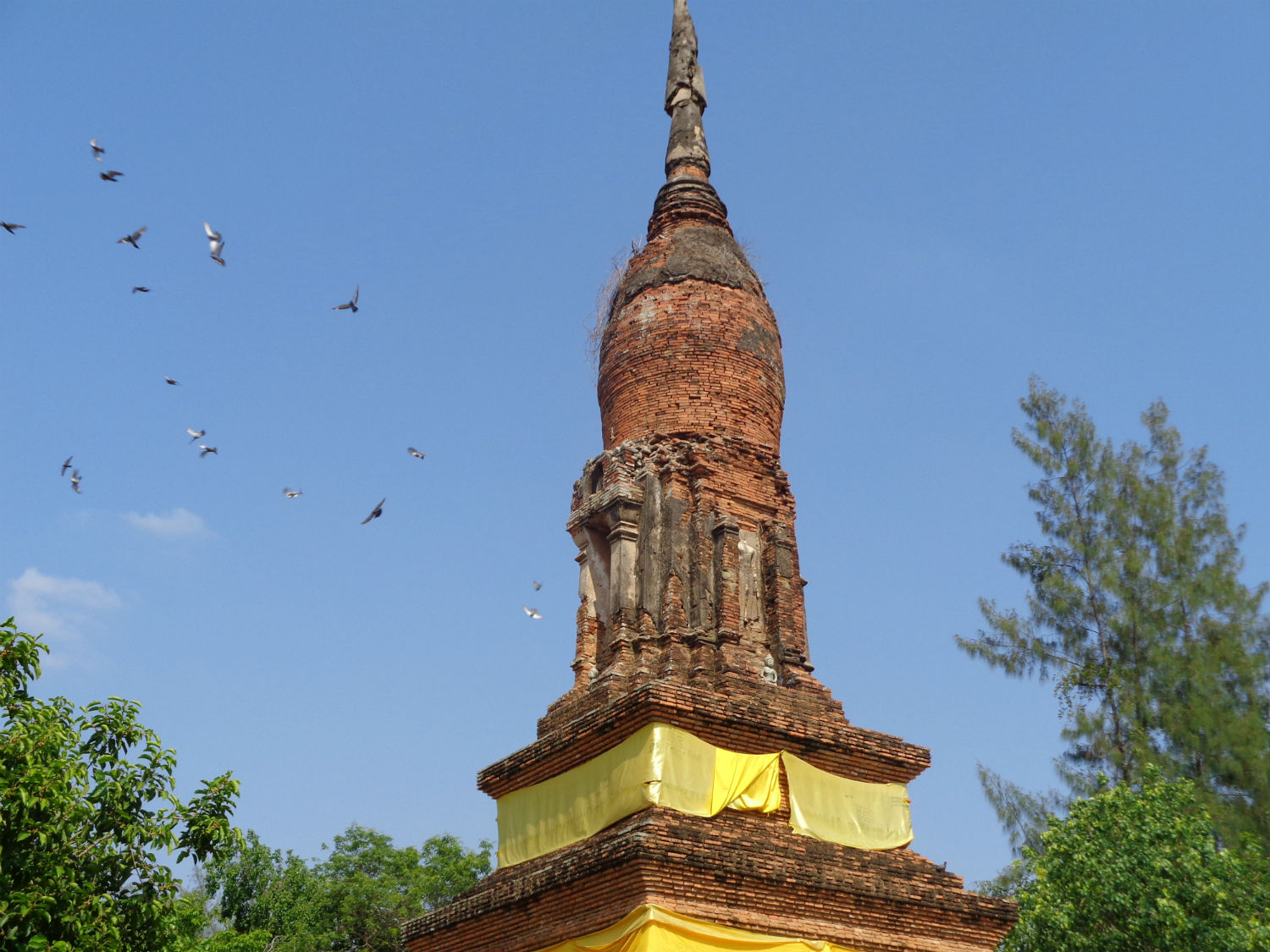
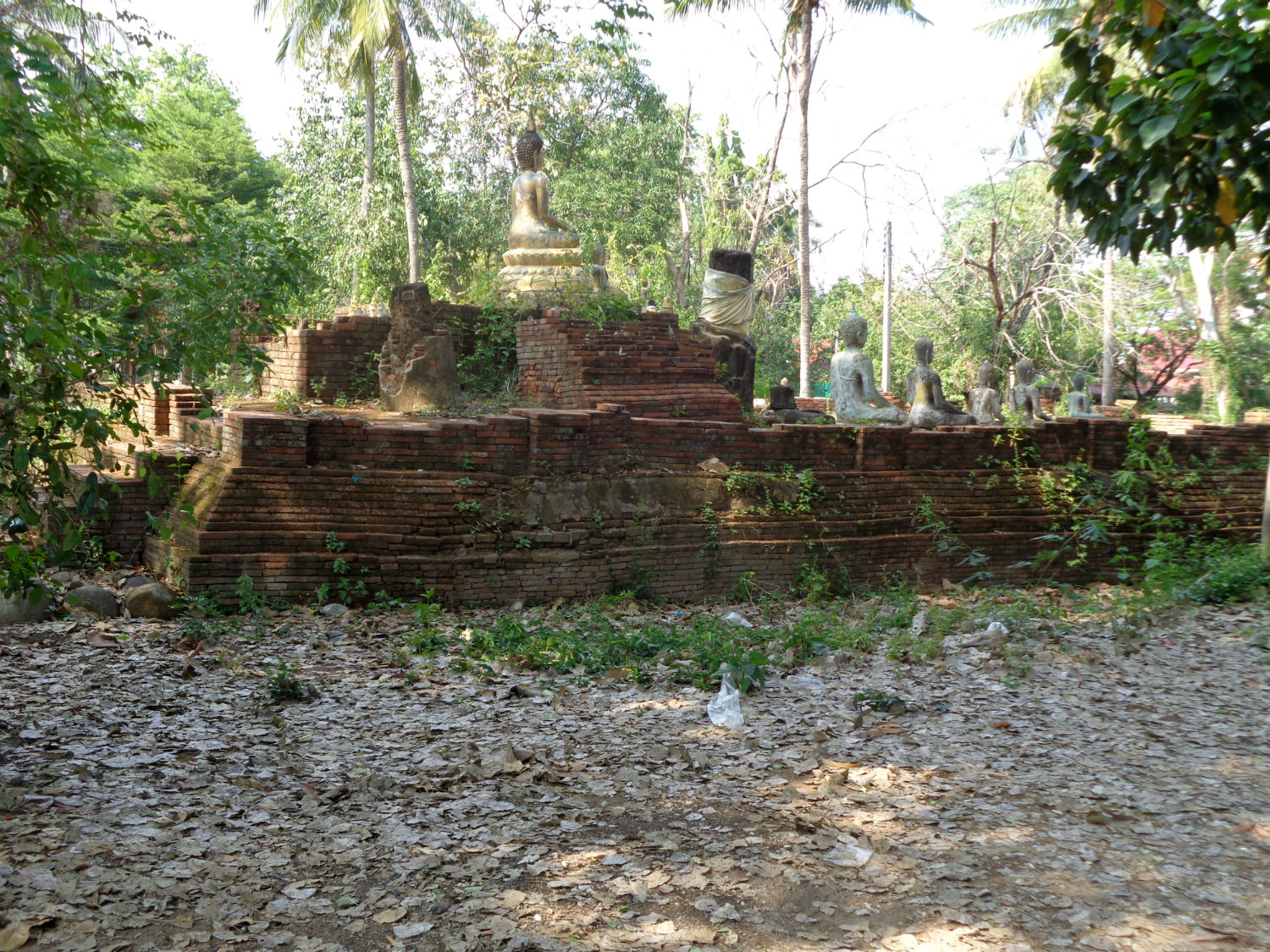
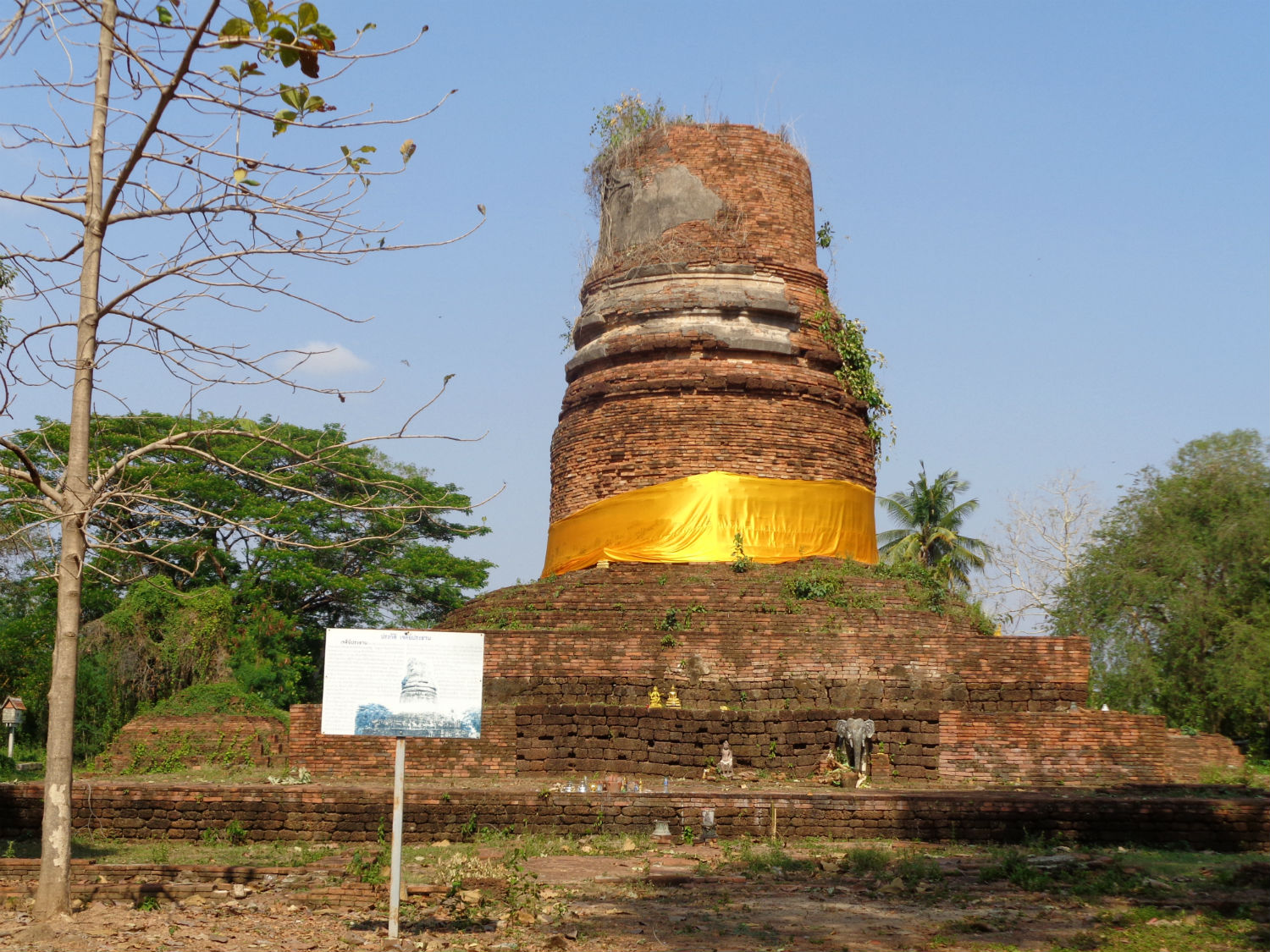
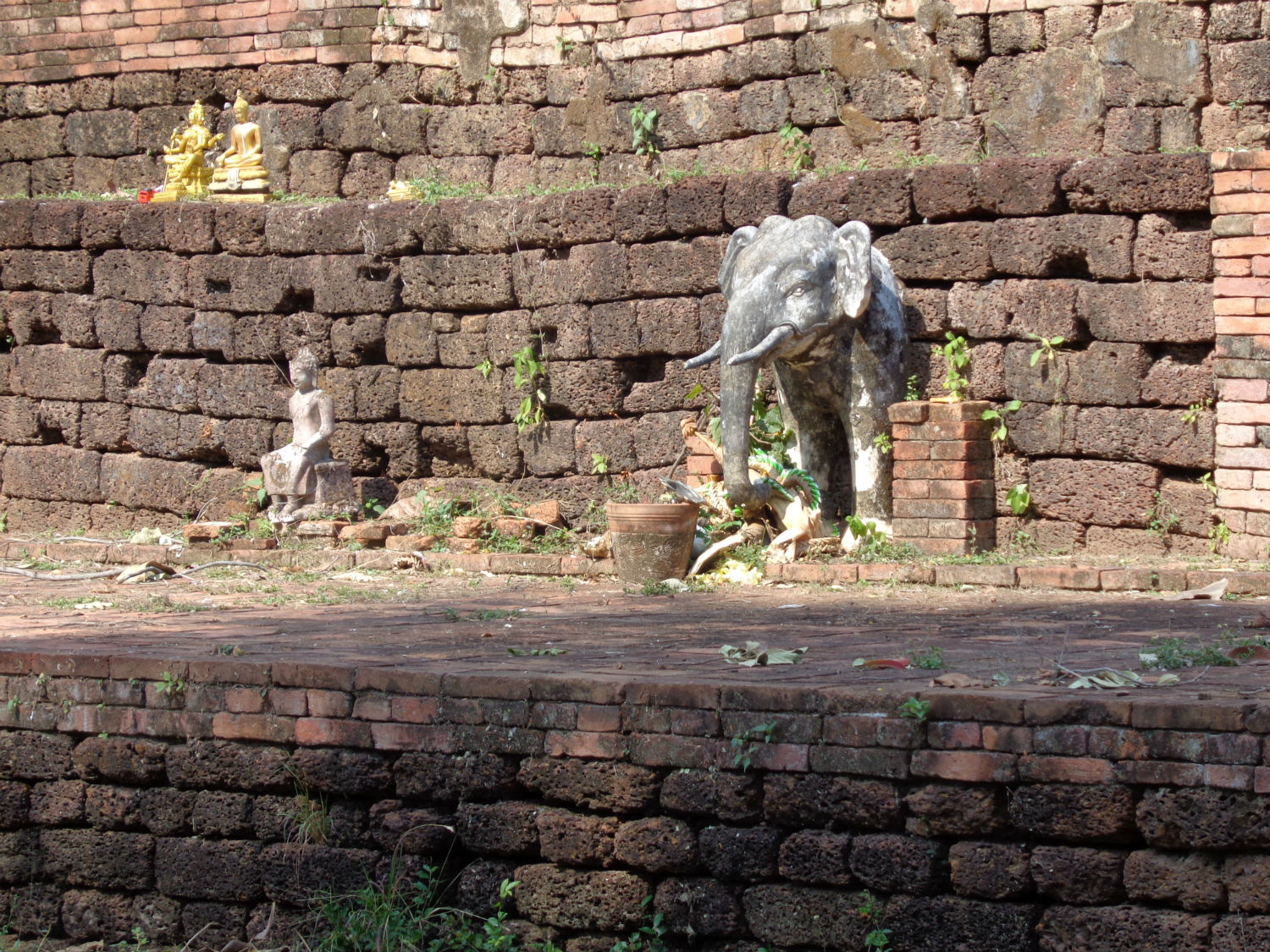
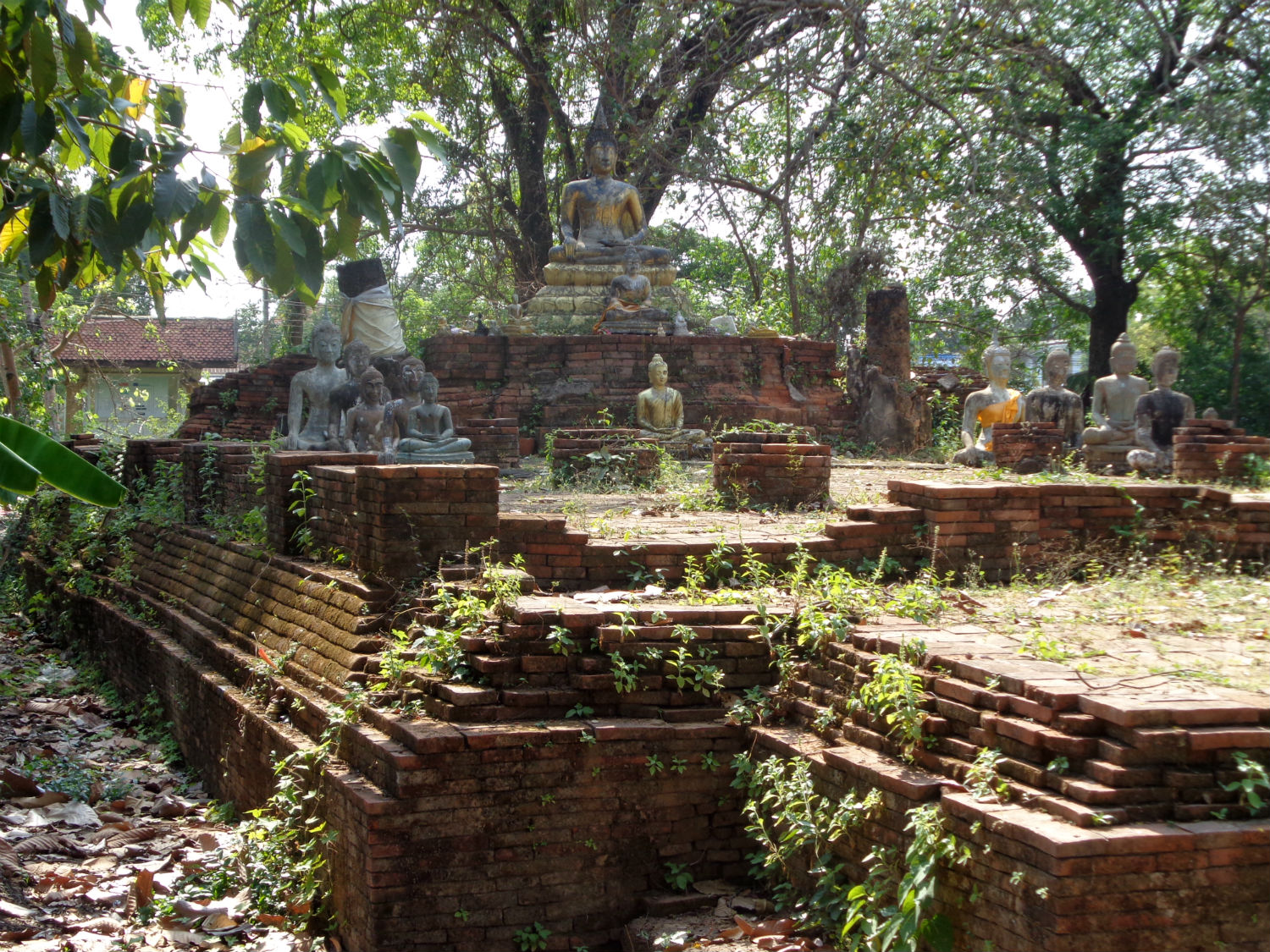 Wat Chedi Thong (top left and middle), Wat Aranyik (top right and bottom), Phitsanulok
Wat Chedi Thong (top left and middle), Wat Aranyik (top right and bottom), Phitsanulok
Wat Chula Mani........
With the temples in the city now effectively covered there is another on my list that seems illusive. Here again the GPS has let me down. I don't mind if the GPS fails to locate it; there are other ways to find it but on account of a minor spelling issue it sends us on a wild goose chase. We finally locate it 5 km southwest along Highway 117.
Wat Chula Mani is the oldest temple in the former city of Phitsanulok. Historical records indicate that King Borommatrai Locanath built the viharn where he himself was ordained in 1464. For 8 months and 15 days along with 2,348 aids.
Some outstanding features of the temple are the shrine of the model footprint and inscription stones that King Narai the Great had built. The inscription relates that in 1678 the King ordered a piece of cloth to lay on the footprint and engrave it on the rock for the people to pay homage. Beside the viharn is a Khmer style prang adorned with ornamental stucco of graceful swan figures.
Wat Chula Mani is the oldest temple in the former city of Phitsanulok. Historical records indicate that King Borommatrai Locanath built the viharn where he himself was ordained in 1464. For 8 months and 15 days along with 2,348 aids.
Some outstanding features of the temple are the shrine of the model footprint and inscription stones that King Narai the Great had built. The inscription relates that in 1678 the King ordered a piece of cloth to lay on the footprint and engrave it on the rock for the people to pay homage. Beside the viharn is a Khmer style prang adorned with ornamental stucco of graceful swan figures.
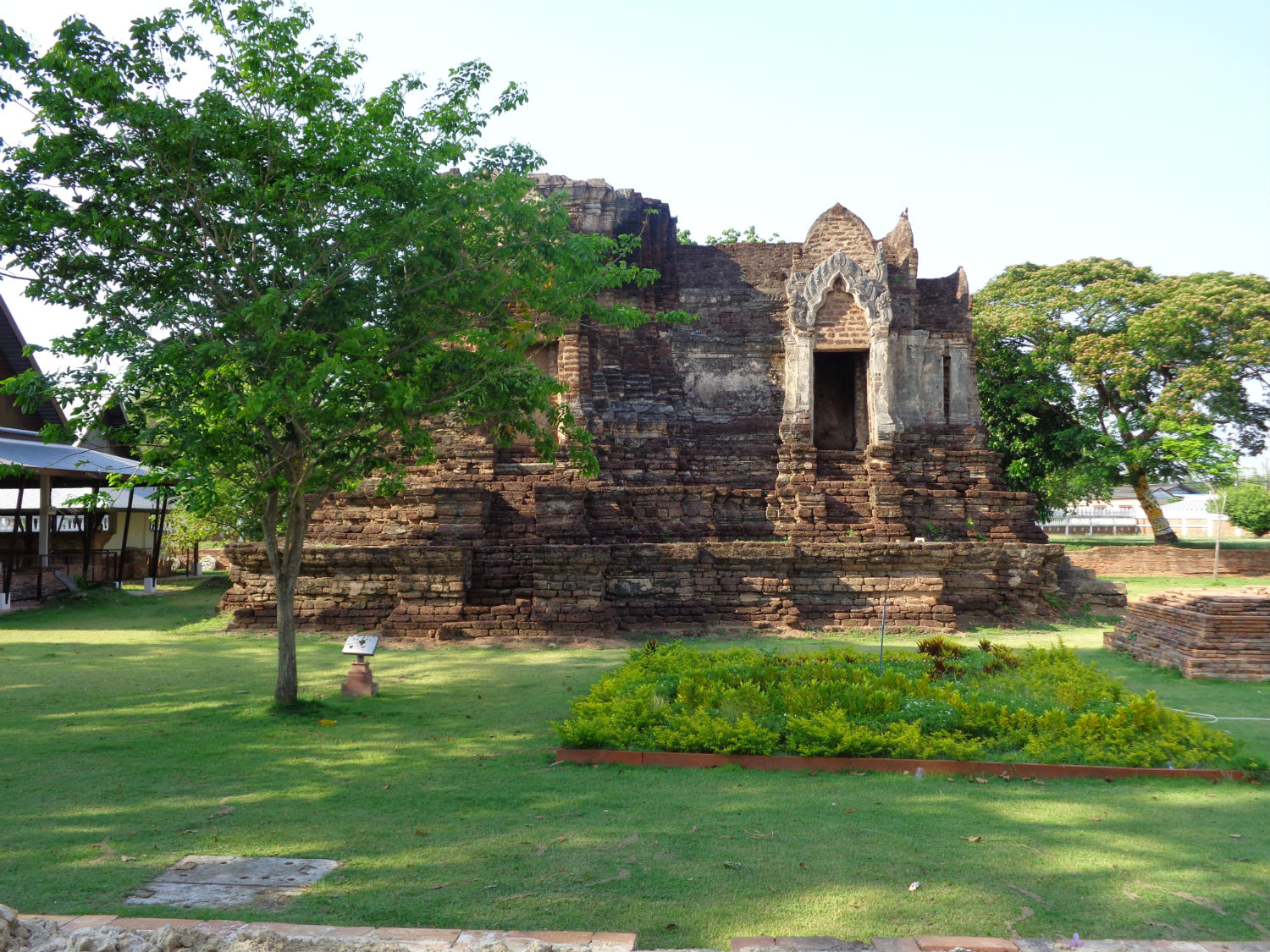
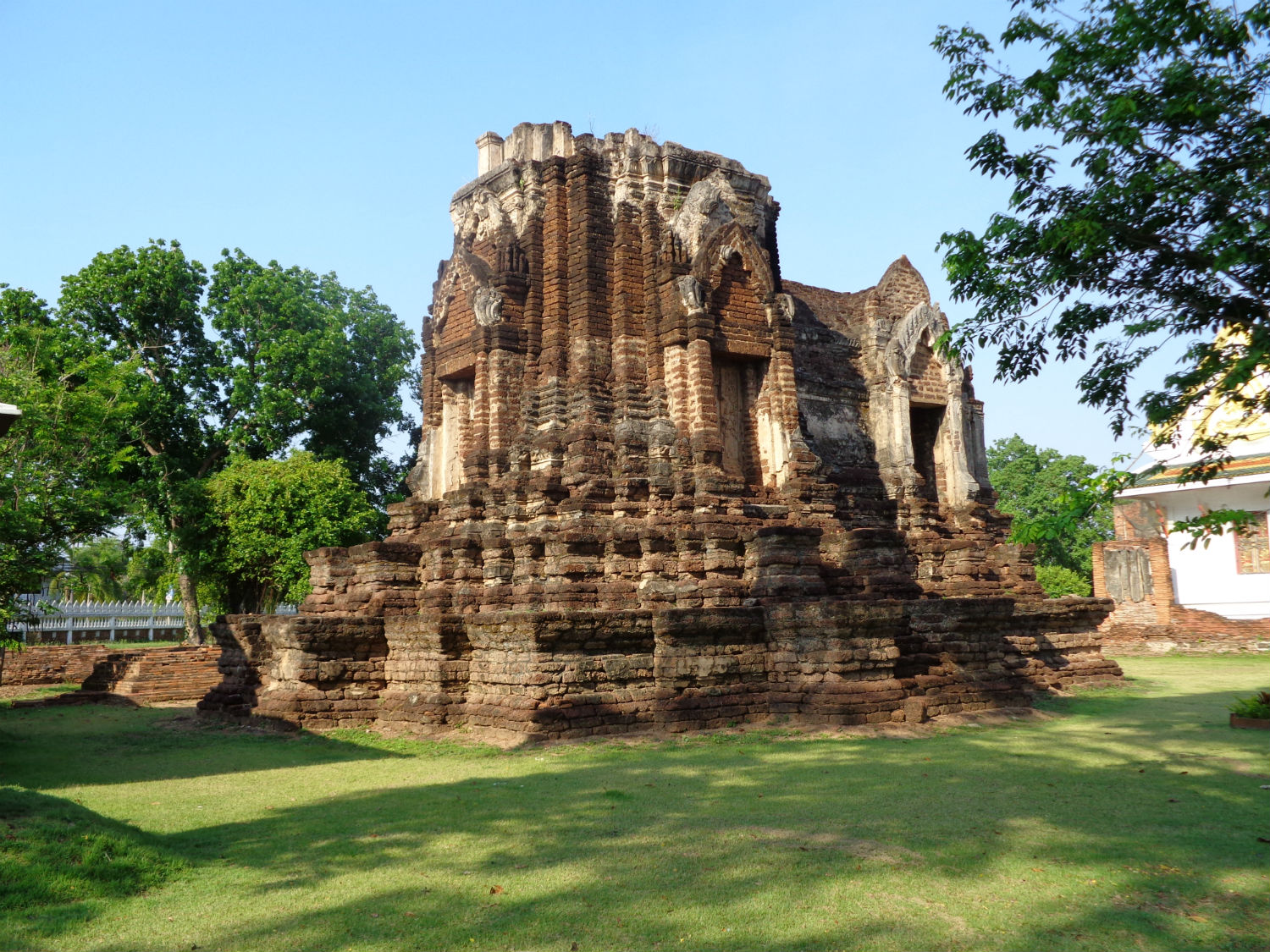
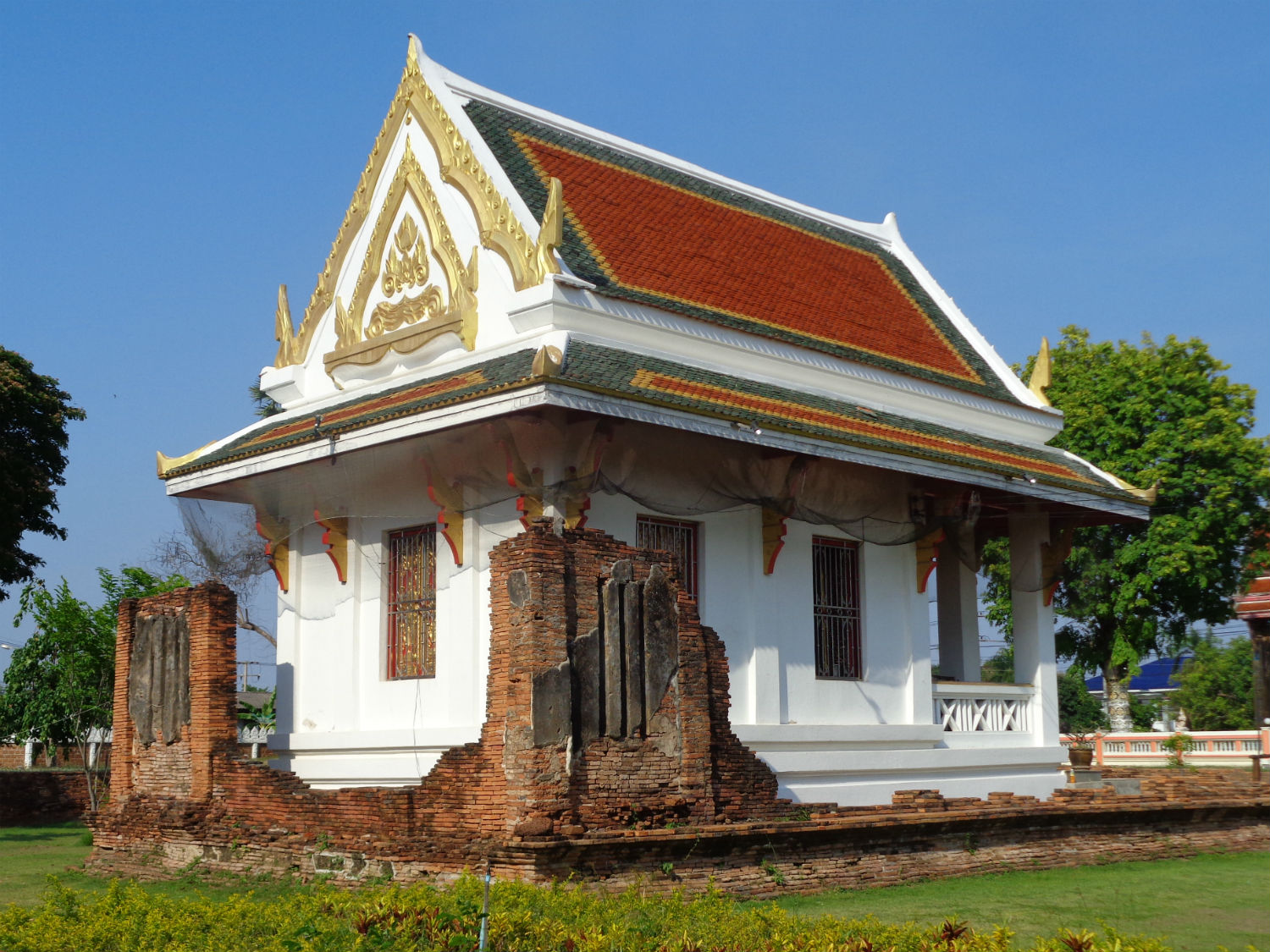
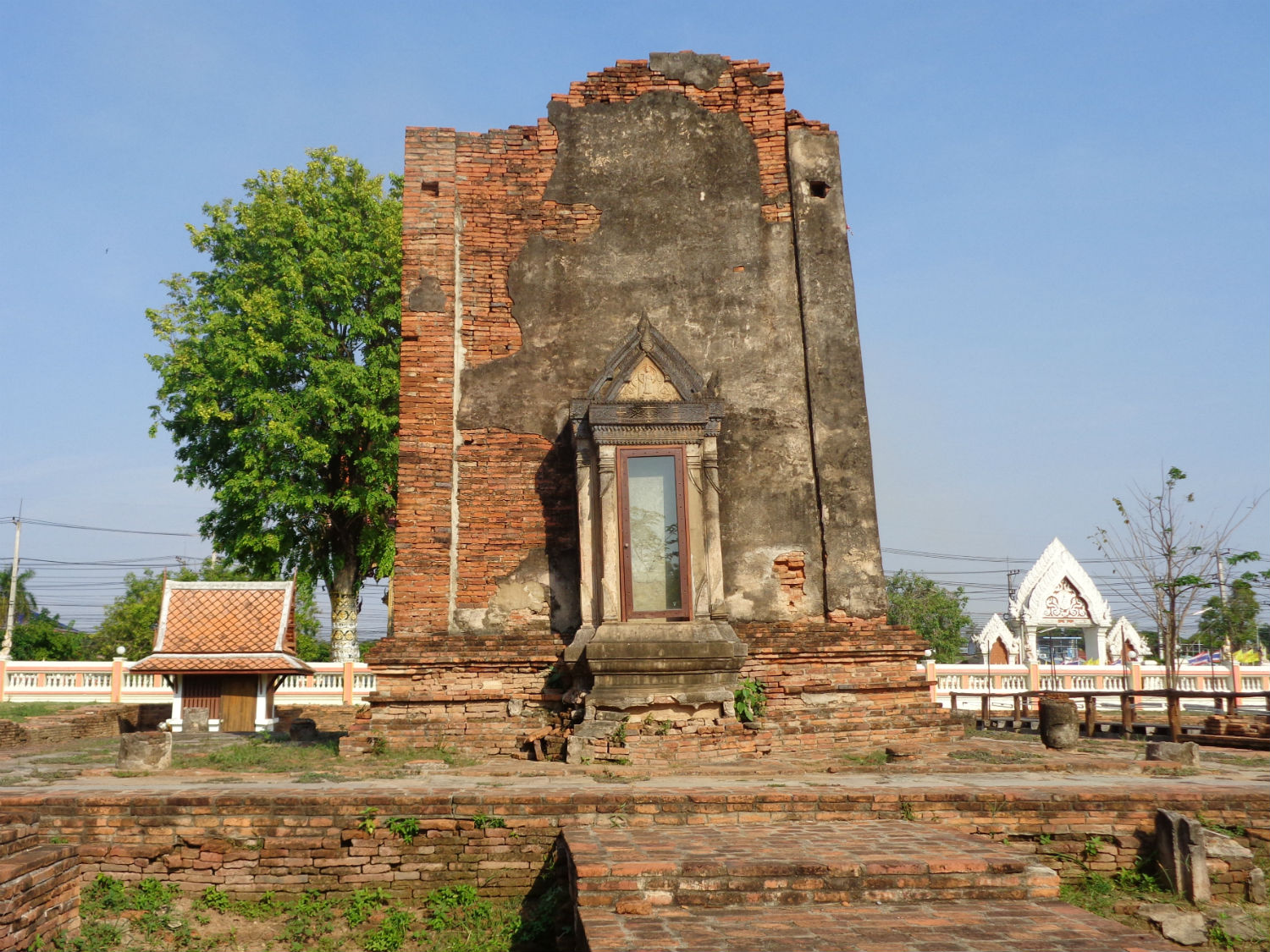
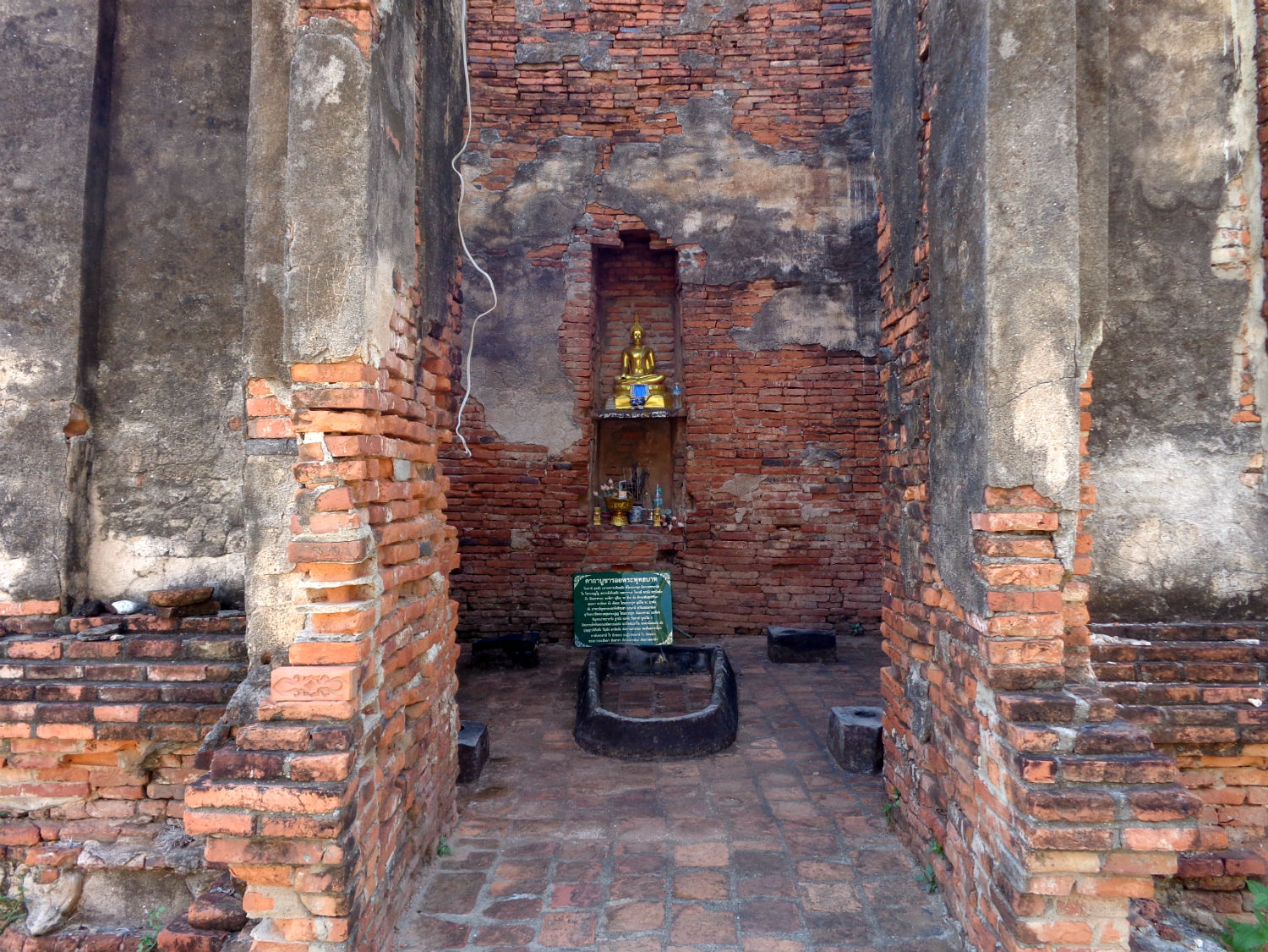
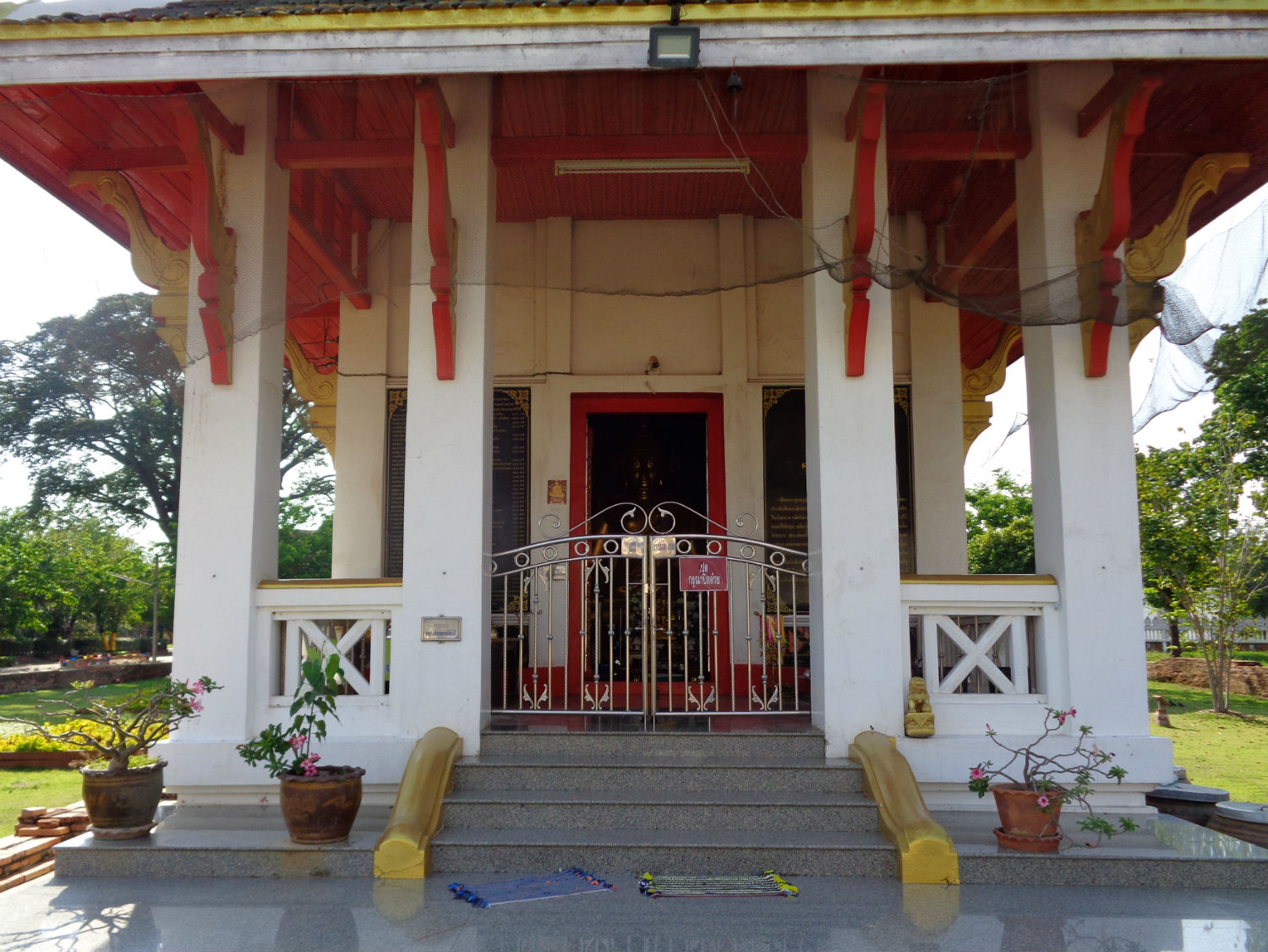
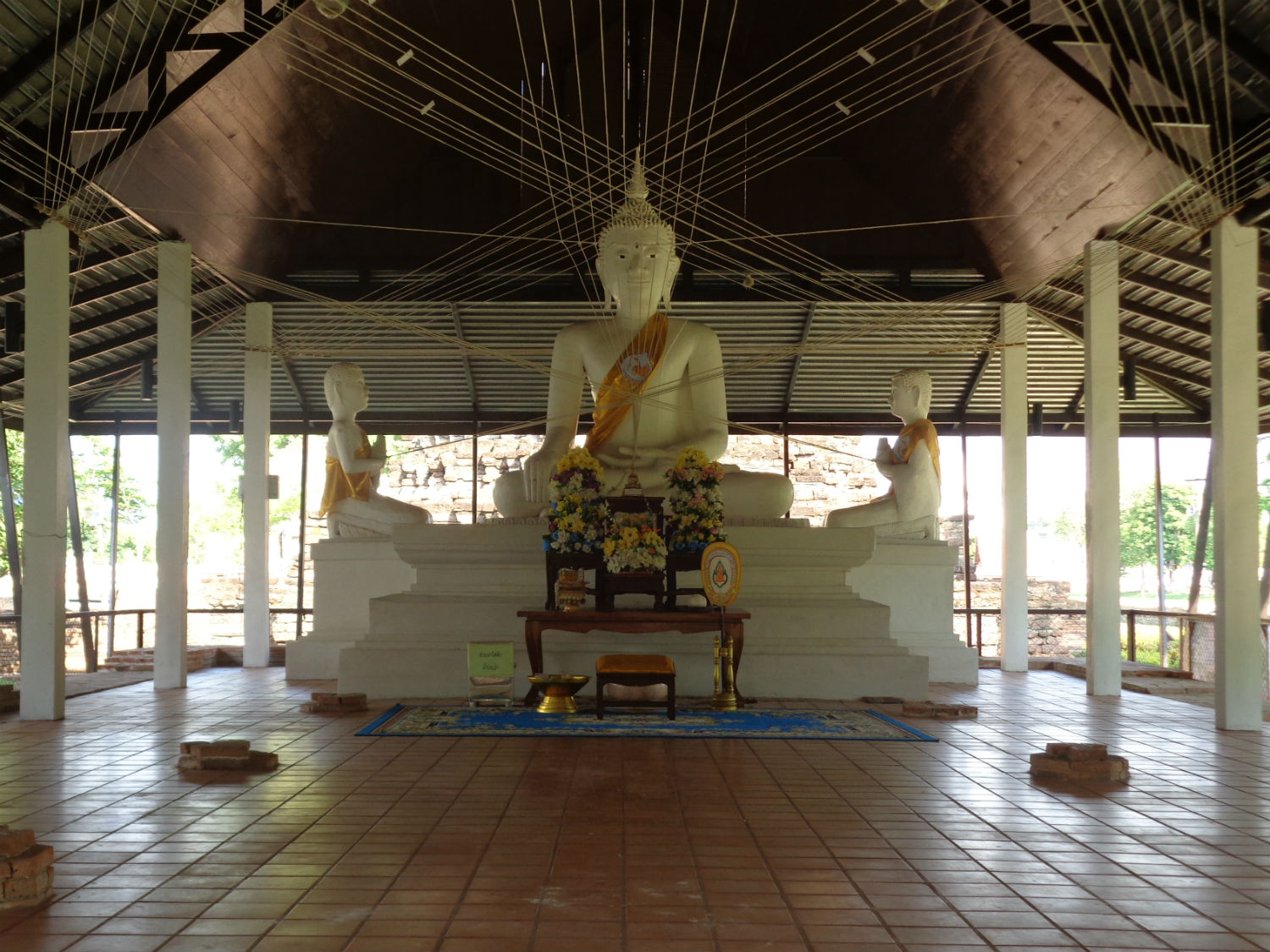
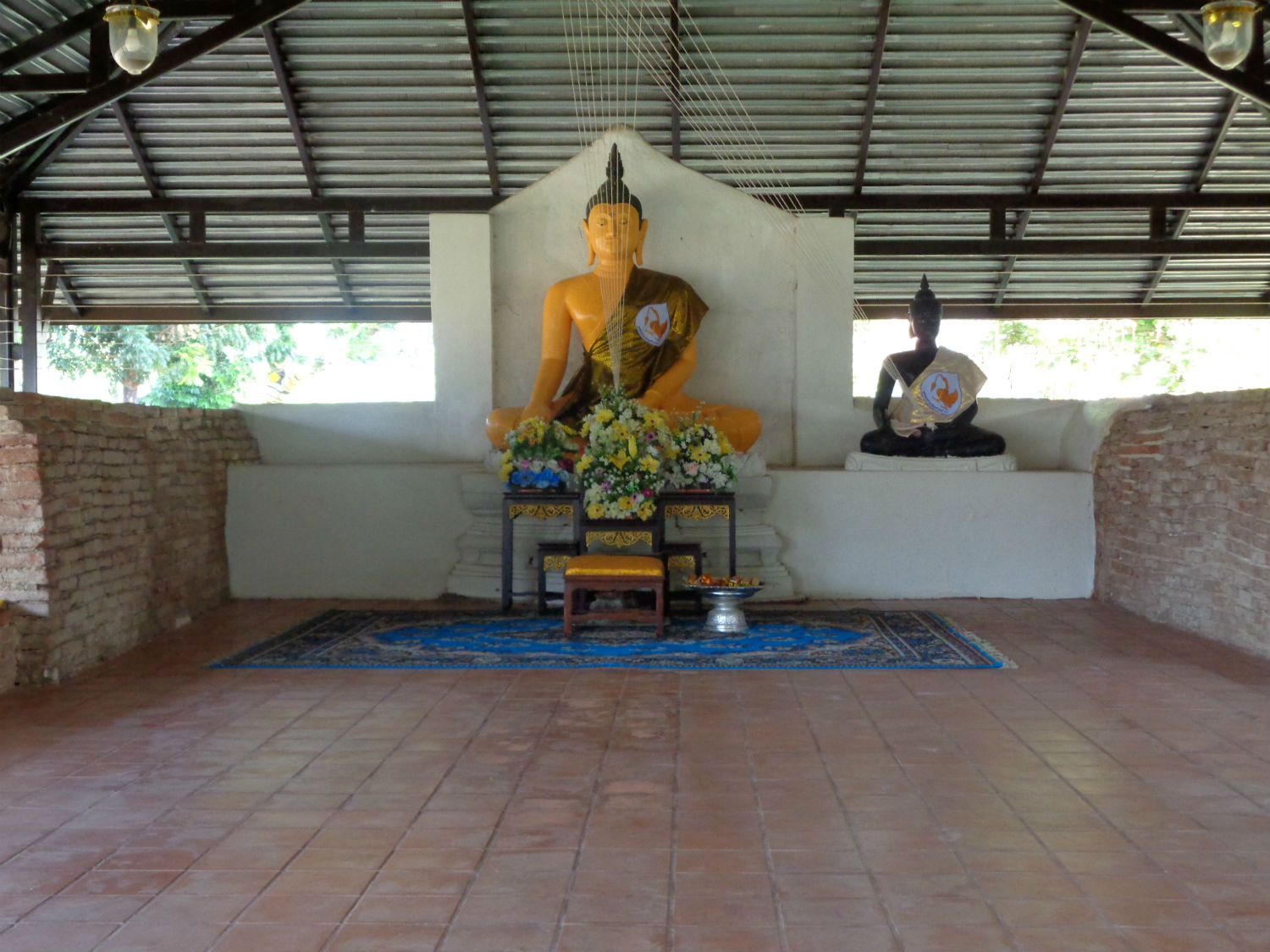
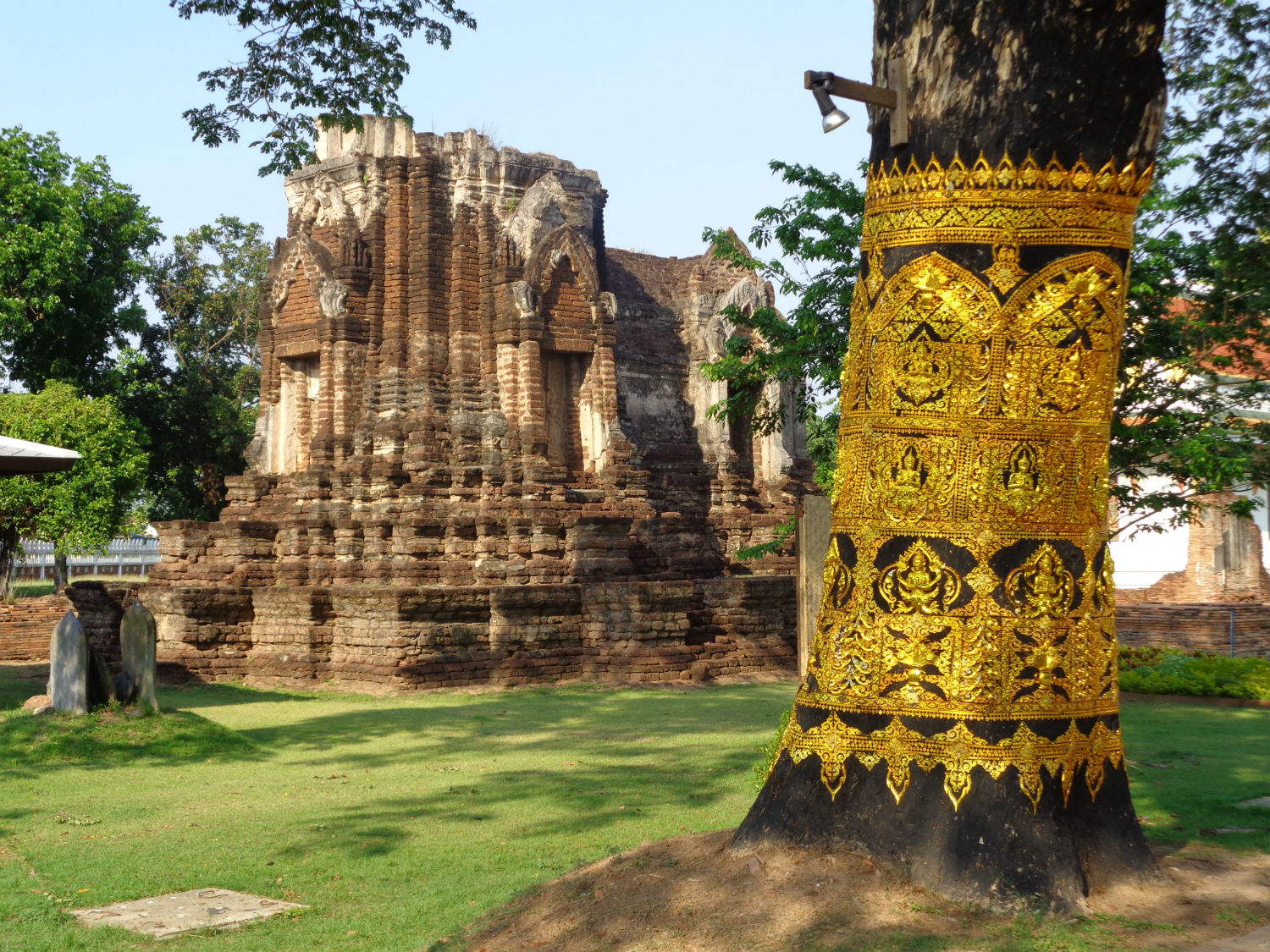 Wat Chula Mani, near Phitsanulok
Wat Chula Mani, near Phitsanulok Returning back into town around 4.30pm there’s no time left to cover a couple of other attractions as they are about to close which means my site list is incomplete. However, apart from these there is not much more to cover in the town itself which means a departure from the city tomorrow. At least I was right in staying in the city the extra night. Next Page.